Four Lakes Campground, Hastings, Florida
Early the next morning Abraham got up and returned to the place where he had stood before the LORD. He looked down toward Sodom and Gomorrah, toward all the land of the plain, and he saw dense smoke rising from the land, like smoke from a furnace. So when God destroyed the cities of the plain, He remembered Abraham, and He brought Lot out of the catastrophe that overthrew the cities where Lot had lived. ~ Genesis 19:27-29 God spared Lot, physically removed him from annihilation, for Abraham’s sake. Because Abraham asked, even pleaded, with the Lord for Lot’s life. How many people have prayed for you and your safety and deliverance? I’ll bet more than you realize! If you do realize it, how do you show your gratitude to the one(s) who interceded on your behalf? How do you show your gratitude to God?
We headed in to St. Augustine today. Or is it San Antonio?? I can’t seem to keep the names straight – for weeks now. I’ll get it eventually, just maybe not until we move on. Poor Blaine. These past four years, he’s learning to be a very patient man.
St. Augustine is heralded as the oldest permanent European settlement in the US. It was founded in 1565 by Pedro Menendez de Aviles. Here’s the story, as told on history.com:
Even before Jamestown or the Plymouth Colony, the oldest permanent European settlement in what is now the United States was founded in September 1565 by a Spanish soldier named Pedro Menéndez de Avilés in St. Augustine, Florida. Menéndez picked the colony’s name because he originally spotted the site on August 28, the feast day of St. Augustine.
Menéndez’s expedition wasn’t the first group of Spanish explorers who tried to start a colony in Florida, which Juan Ponce de León had claimed for Spain back in 1513. And unlike other colonizers, he wasn’t out to find gold or set up a trading network with the Native tribes.
Instead, Menéndez’s primary mission was simple: Get rid of French Huguenot (means non-Catholic) colonists who were trying to usurp the Spanish claim. The previous year, the French had established an outpost at Fort Caroline, near present-day Jacksonville. A French base in Florida posed a potential threat not just to Spanish territorial claims, but also to the Spanish treasure fleet that sailed from South America and Mexico along the Florida coast before heading across the Atlantic to Spain. Spain’s King Philip II wanted the French threat eliminated, particularly because the settlers were Protestants and to Philip, a Catholic, that made them intolerable.
Menéndez almost didn’t succeed. Philip wanted him to destroy the French colony before France could send military forces to Florida to protect it. But by the time Menéndez arrived in Florida in August 1565, he discovered that a force of French reinforcements had arrived before him, according to David Arbesú, an associate professor of Spanish at the University of South Florida and editor and translator of Pedro Menéndez de Avilés: A New Manuscript, an account of the expedition by Menéndez’s brother-in-law, Gonzalo Solís de Merás.
“He went up to the fort, by ship, where he discovered that the French had a very large fleet,” Arbesú explains. “So he retreated to a place that he had discovered the week before and had called St. Augustine, and waited for the French to attack.”
Menéndez and his men were badly outnumbered and pretty much defenseless. But then nature dealt Menéndez a lucky break.
“The French fleet appears and is prepared to crush the Spaniards, when at that exact moment, a large storm or hurricane blows the French fleet to the south and sinks them, saving the Spaniards from disaster,” Arbesú explains.
Instead of being slaughtered, “all that Pedro Menéndez had to do in the next couple of days was to walk up to Fort Caroline, which now had very few soldiers inside, and conquer it without even shedding a drop of Spaniards’ blood,” says. Arbesú.
“It appears the enemy did not perceive their approach until the very moment of the attack, as it was very early in the morning and had rained in torrents,” Francisco López de Mendoza Grajales, the expedition’s chaplain, later wrote. “The greater part of the soldiers of the fort were still in bed. Some arose in their shirts, and others, quite naked, begged for quarters, but, in spite of that, more than one hundred and forty were killed.”
The chaplain praised Menéndez for “the ardent desire which he has to serve our Lord in destroying the Lutheran heretics, the enemies of our holy Catholic religion.”
We visited here two years ago and took in most of the tourist stops, so if you’re looking for additional information, check out our posts from January, 2019.
Today, we did a couple of repeats from our previous visit, and added some new ones.
Our first stop was the Visitor Center where we bought tickets for the trolley (which allows on and off stops so Blaine doesn’t have to drive and find parking around town), and also for a couple of attractions – the Spanish Military Hospital and the Old Jail. We also received free tickets for the History Museum. You get a discount if you buy them all together, because they’re all owned/run by the same company. We left the Jeep in the parking lot, and headed down the street towards the Old Jail. It was a short walking distance, so there was no need for the trolley yet.
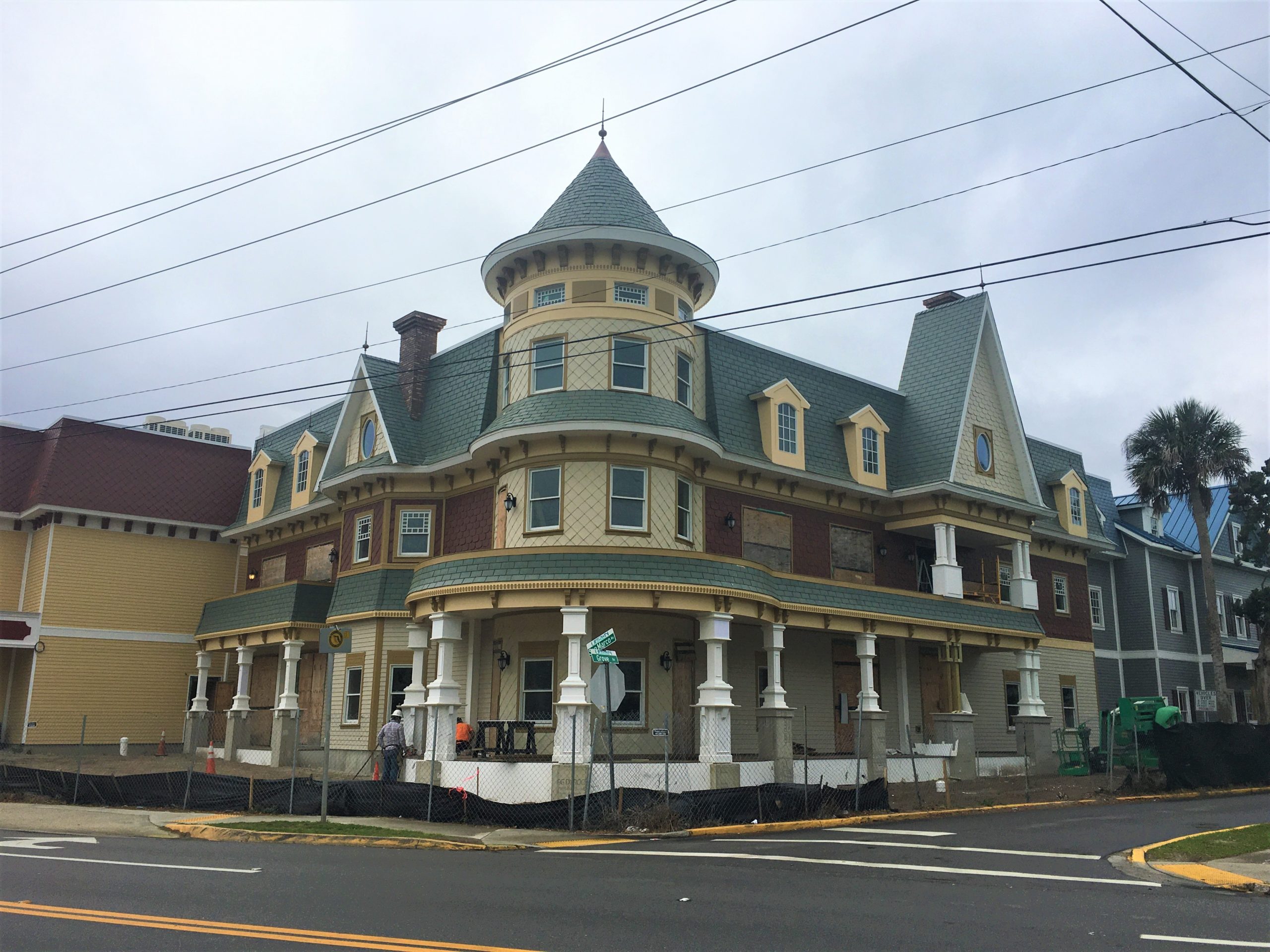
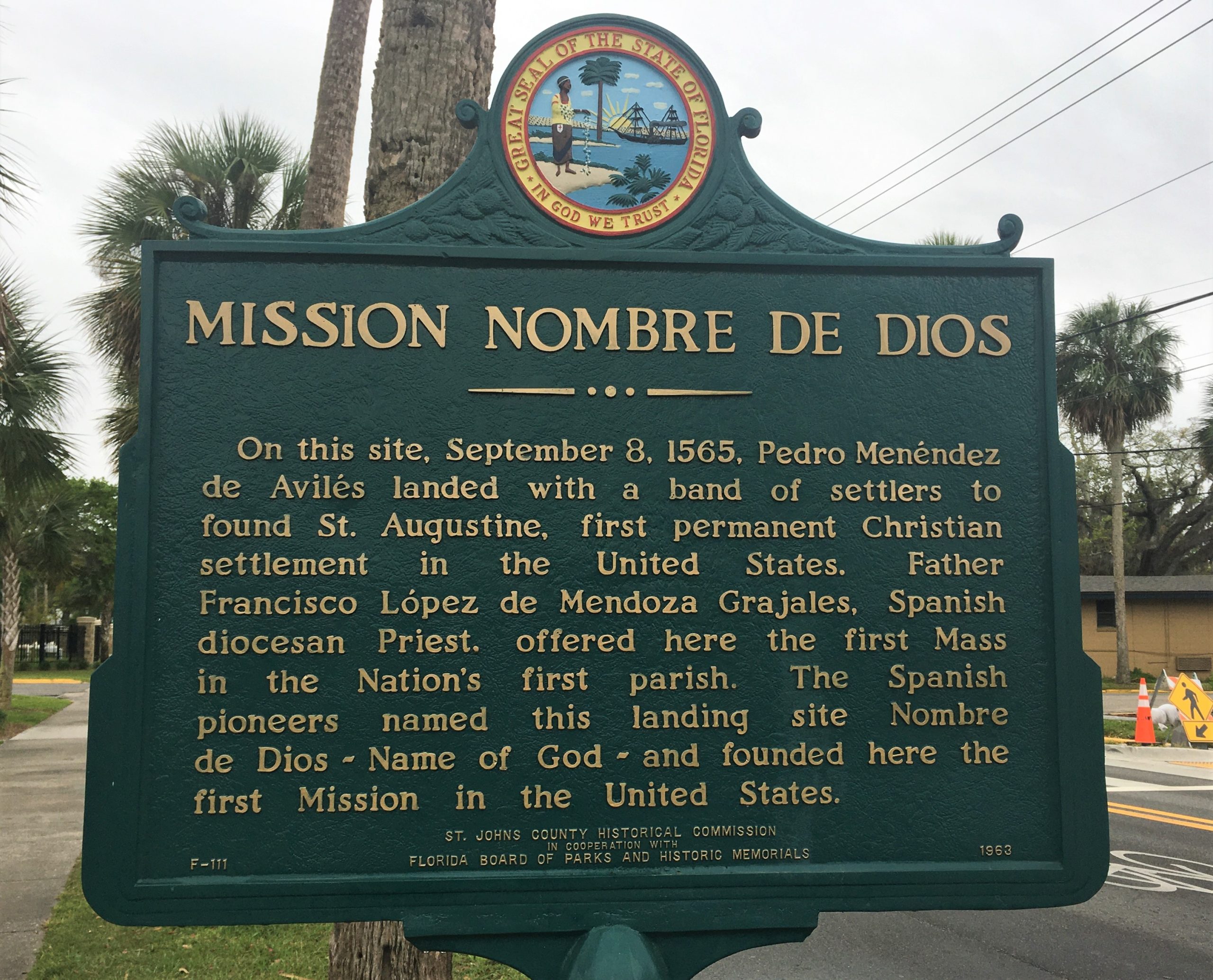
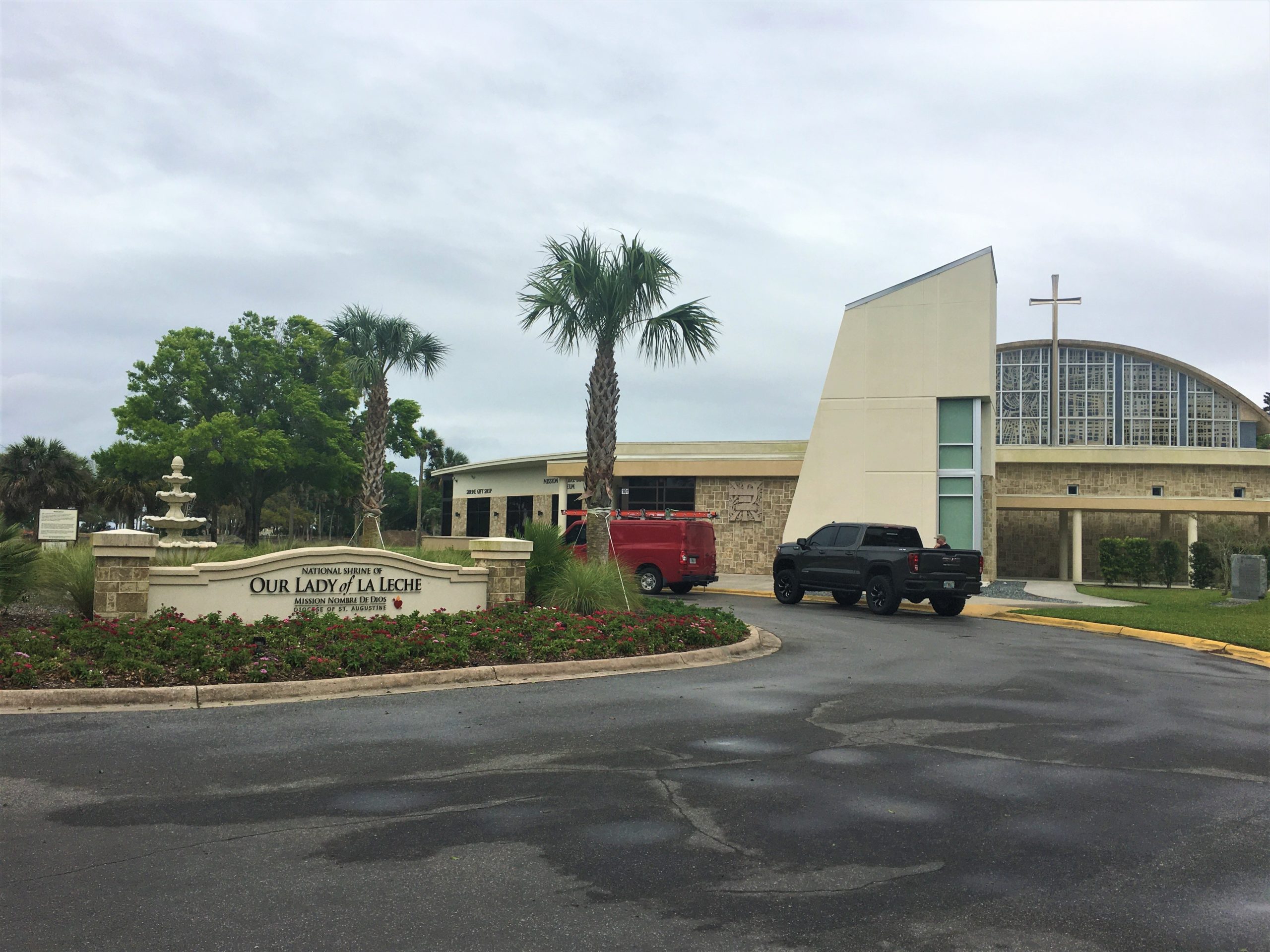

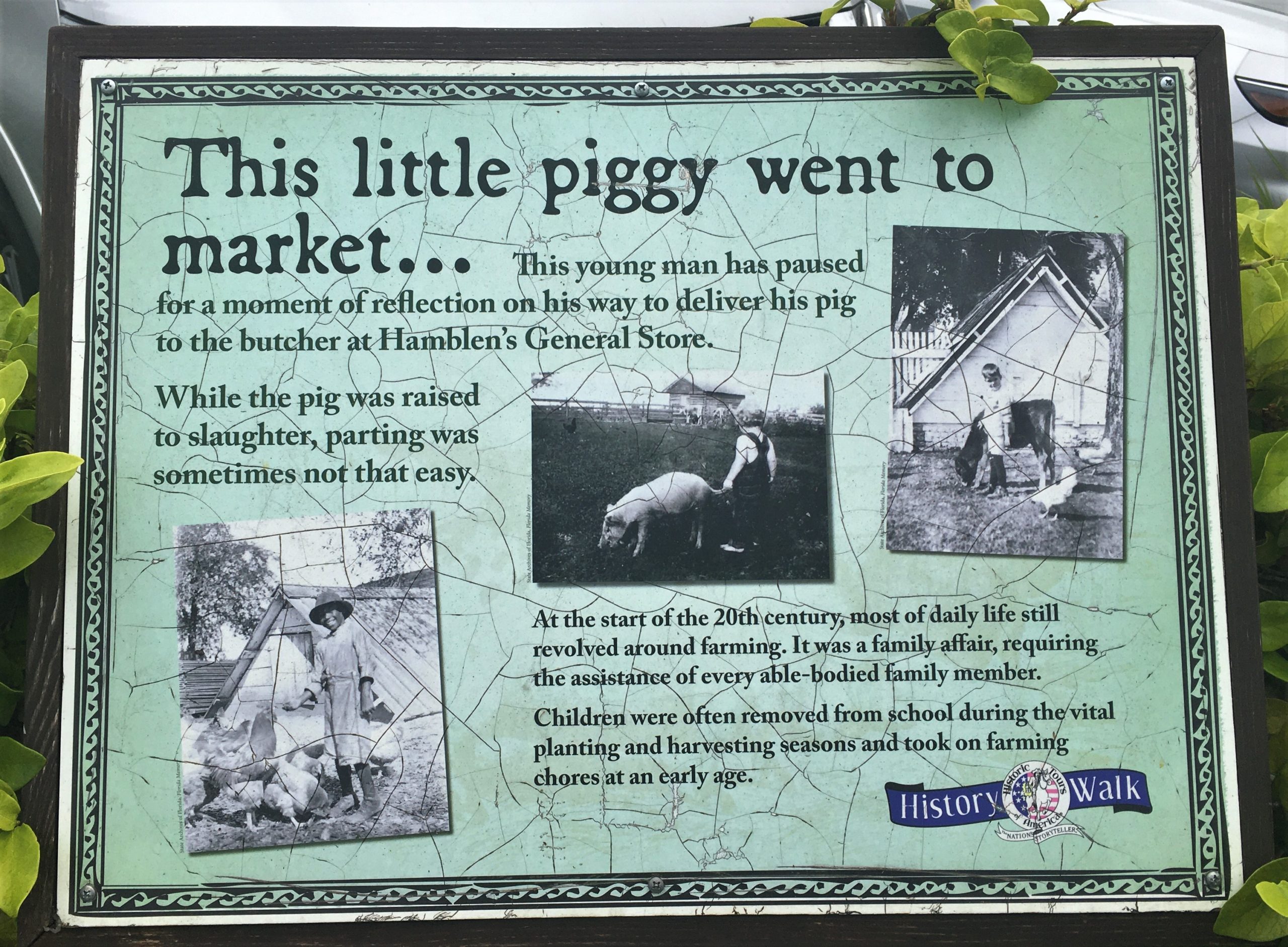
It appears like they used to have them scattered around town?
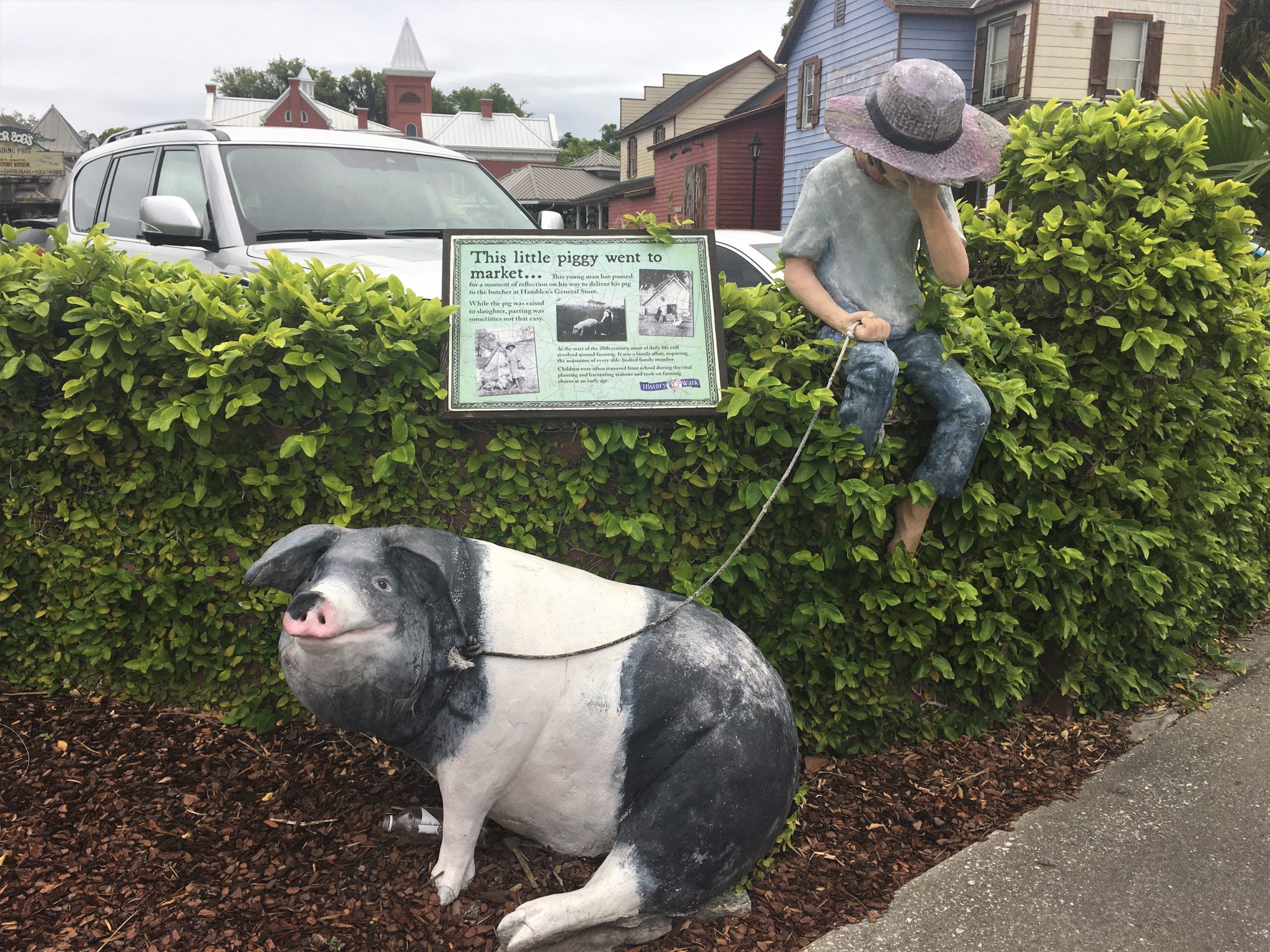
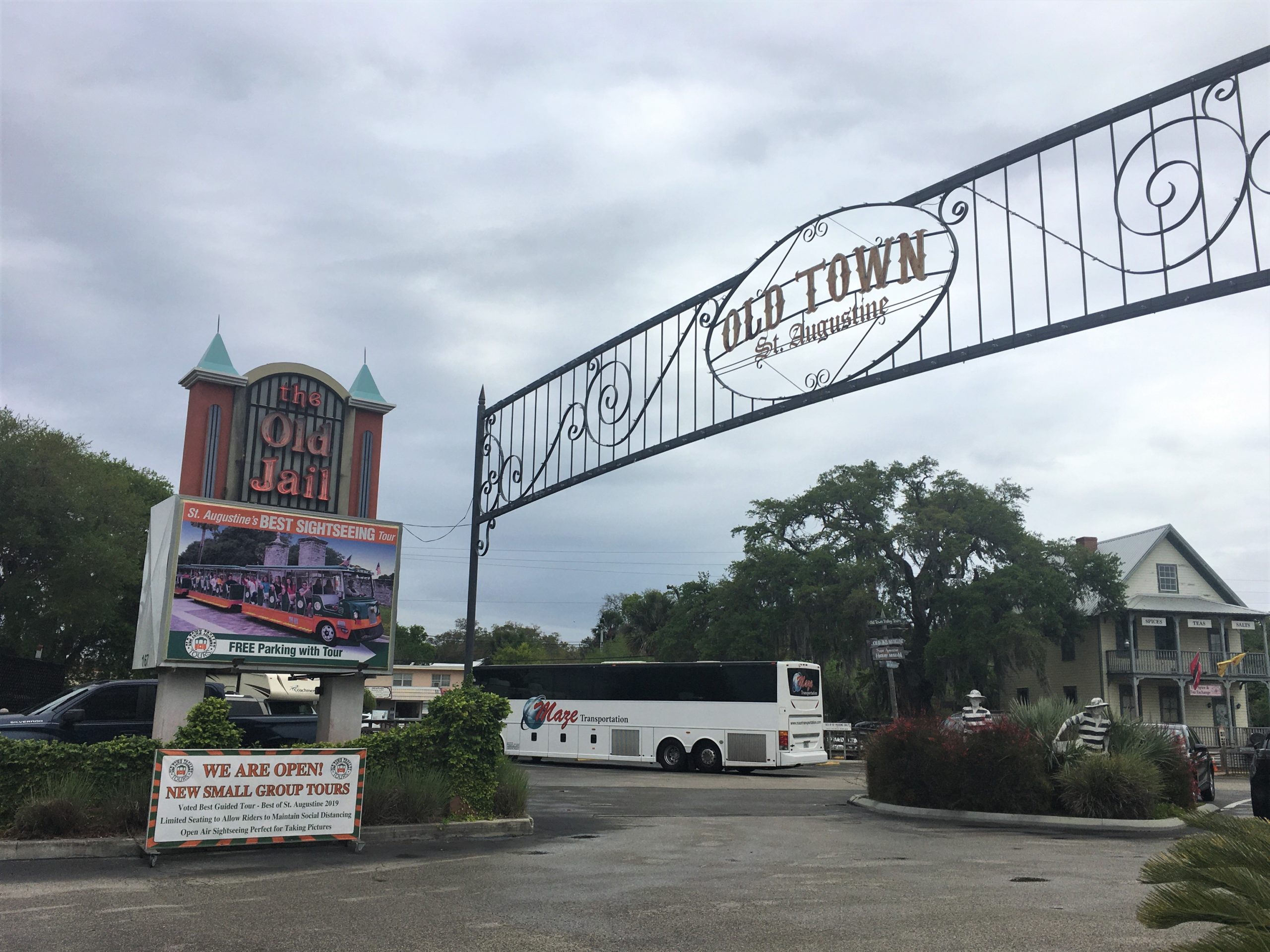
It was cold! No sun; wind – more than a breeze, but less than a gale; and temperatures only in the lower 60s. I was really glad to have worn my capris (although I could’ve easily worn long pants!) and a sweater. Blaine left home in shorts and a golf shirt. He had to walk back and drag out the long-sleeved T he keeps in the Jeep, before we’d gone 20 yards.
What a history this Old Jail has! Jack was our tour guide and he not only looked the part of an inmate; he was an excellent entertainer! I don’t know, maybe I shouldn’t call this place entertaining. It was . . . until we started learning and reading more about what went on in this place. Jack did a good job of keeping it PG, since there are often children present on these tours. Below is a list of just a few things we learned today –
- It was built in 1891 and in use until 1953, when the jail was moved to a new, more modern building
- Commissioned and paid for by Henry Flagler for $10,000 (or $290,000 today), he wanted the town jail moved from its place near his up-and-coming Ponce-de-Leon hotel (now known as Flagler College) and he didn’t want it to look like a jail from the outside, so it wouldn’t disrupt his vision for the city, or be unpleasant for his arriving and departing guests
- It looks so much like a hotel/home, visitors to town often stopped by looking for accommodations
- P. J. Pauley Jail Company received the contract. This is the same company who would build Alcatraz in the future
- The walls were made of very thick concrete and the jail was far enough from town so that no sound would escape from inside. In other words, no one could hear the yelling, moaning and screaming
- There were three stories – the bottom floor was for women and also contained the kitchen area and a receiving room for the sheriff’s guests, the second floor was for the black male prisoners, the third and top floor was for the white male prisoners
- It was designed for 72 male and 12 female prisoners, but almost always held more – many more
- The sheriff and his family also lived in the building. Their rooms were mainly on the second floor
- Originally designed to hold 2-4 prisoners in each cell, there were often as many as 20 at a time!
- It wasn’t that there were so many criminals in St Augustine, it was because they rounded up anyone for any reason – vagrancy, mental illness, loitering – any reason the sheriff and his deputies came up with
- Sentences ranged from 3-5 years, but conditions were so deplorable, most prisoners only lived 1 year due to disease, violence, malnutrition or being hung
- Only certain deaths were actually noted. Many died and were attributed to “escapees”
- There was no electricity or running water, and the inmates in each cell shared a bucket, which according to Jack (our guide) was only emptied once a day. In solitary confinement, it was once a week. There were no baths for any inmate – ever.
- Due to public outcry, plumbing was installed in the men’s cells in 1914, but according to Jack (our guide), it was never hooked up to work. The women never had plumbing – even up to the day the jail closed in 1953
- There were no windows in the cell quarters, only bars, so all the elements came and went freely – rain, cold, heat, storms, bugs, critters, whatever could fit between the wide-spaced bars . . .
- No one had blankets or pillows, the very thin mattresses were filthy and those in solitary had no bed at all, just the cold, concrete floor, and no windows or ventilation of any kind
- Those held in maximum security were treated to a view of the gallows, stockades and a torture cage. I have a picture of the cage. According to Jack, it was often strung up to the oak tree limb (which I also have a picture of), and the man was left hanging there. The guards especially enjoyed doing this when there was a thunderstorm brewing. After learning what went on here, I think the sheriff and guards had to be very sick men themselves. Sadists. Many, if not all serial killers are sadists.
- The women were responsible for cooking and cleaning for the prisoners and the sheriff’s family and friends. That’s the official word anyway. I’m sure you can imagine that’s not all they were used for.
- According to Jack (our guide), the prisoners were malnourished, and resorted to eating anything that came into their cells
- The men were farmed out for leased labor, performing all manner of heavy physical labor in 12-18 hour days, with no food, water or rest. Those who were severely infirm, stayed at the jail and worked in the gardens
- They usually didn’t have proper equipment for these chores, and many had no shoes, plus they were shackled together with heavy irons, which rubbed wounds into their flesh and caused infection
- There were many means of torture – sweat boxes; solitary confinement where the prisoner was bound tightly, including the head, wrapped in a cloth and left for days; the cage; beatings, etc.
- There were several notorious hangings that were recorded. It is believed that many more “unofficial” ones occurred. One of the recorded ones was Sim Jackson, who in 1906 nearly beheaded his wife with a straight razor. He was hanged in 1908 with a large group of spectators looking on
- Charlie Powell was the only other murderer recorded has having been hung here. He killed a man for spreading rumors about his wife in 1910
- In 1954, one year after the Old Jail closed, it became a tourist attraction
Let’s go check it out!
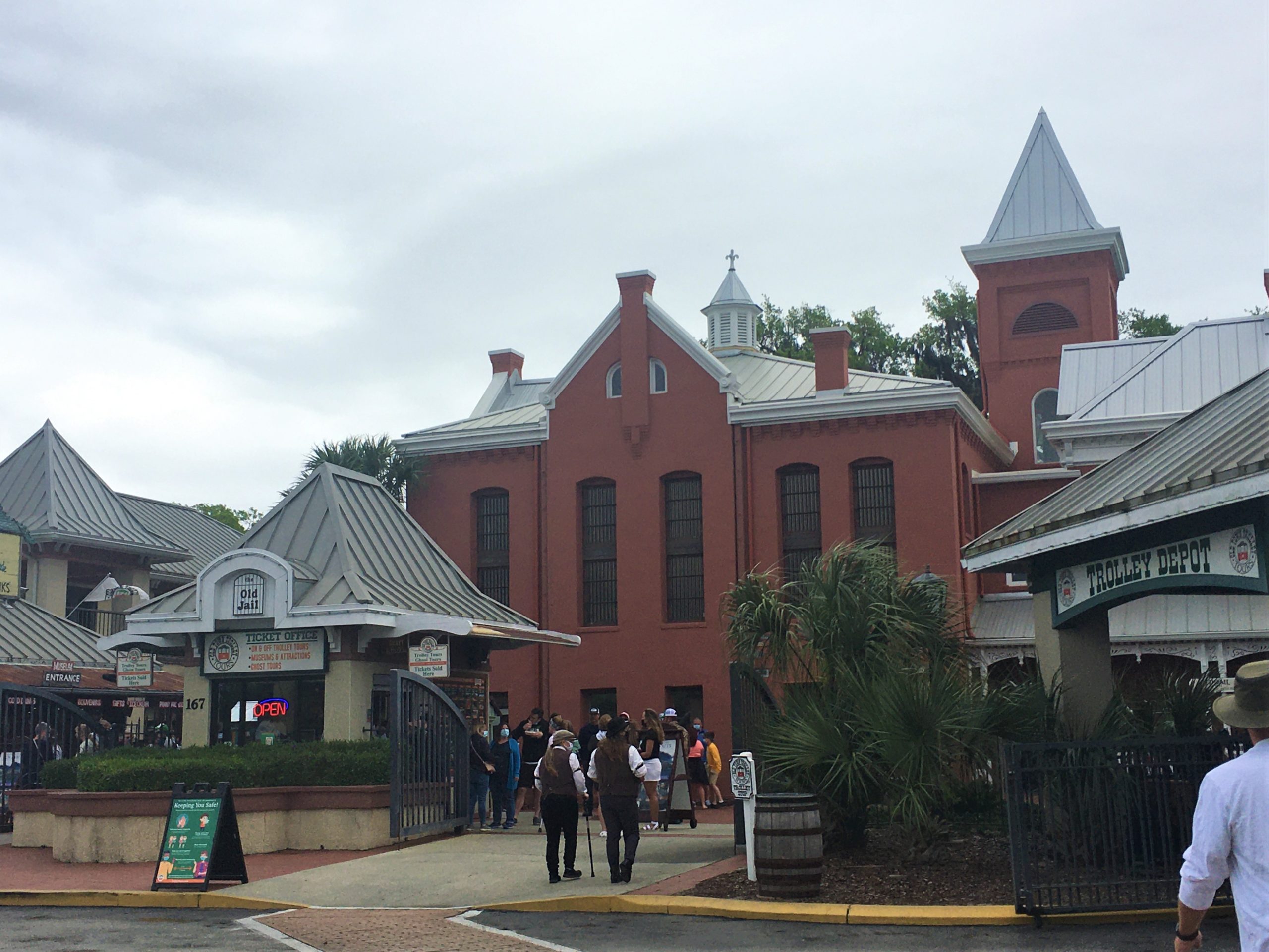
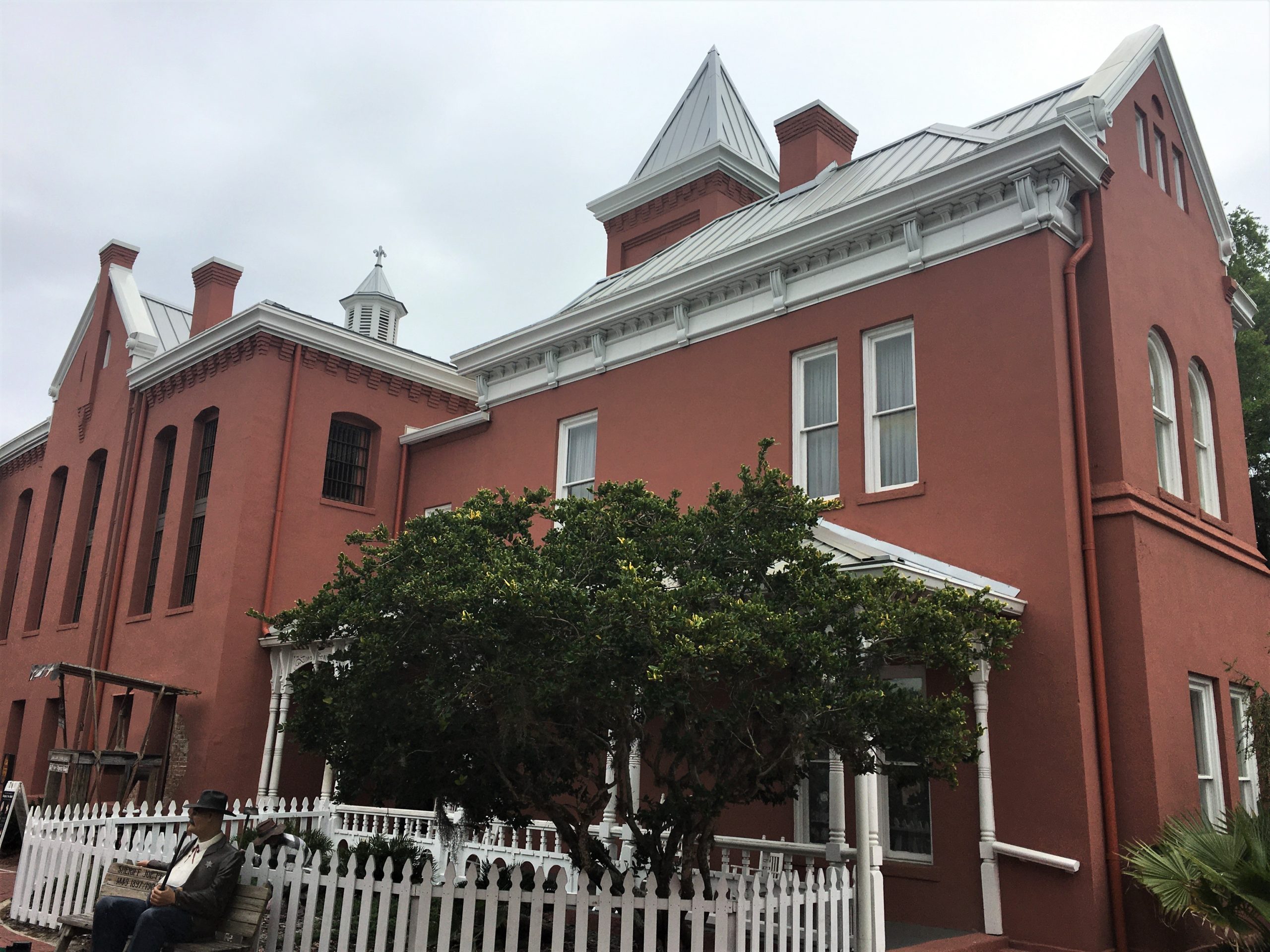
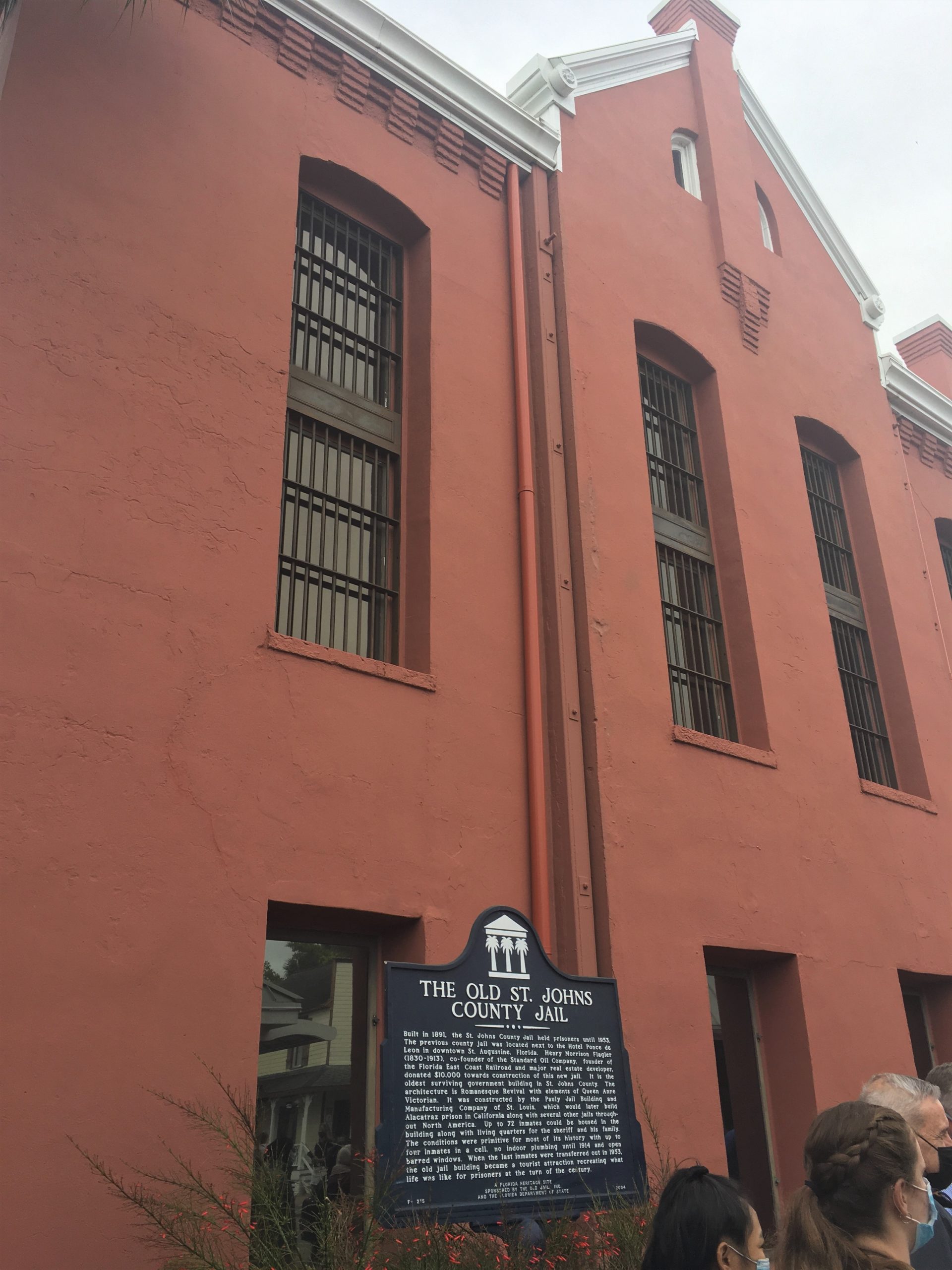
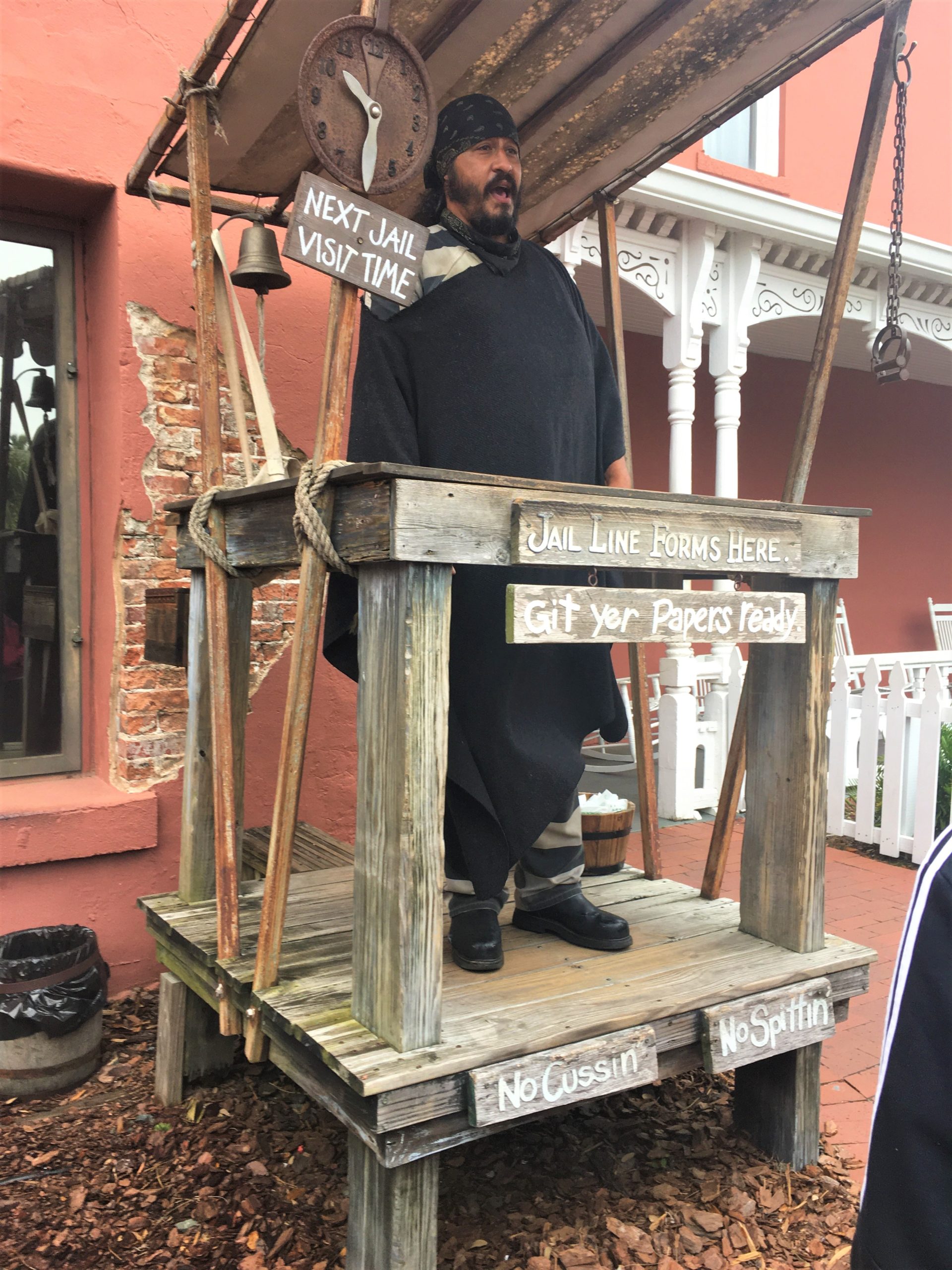
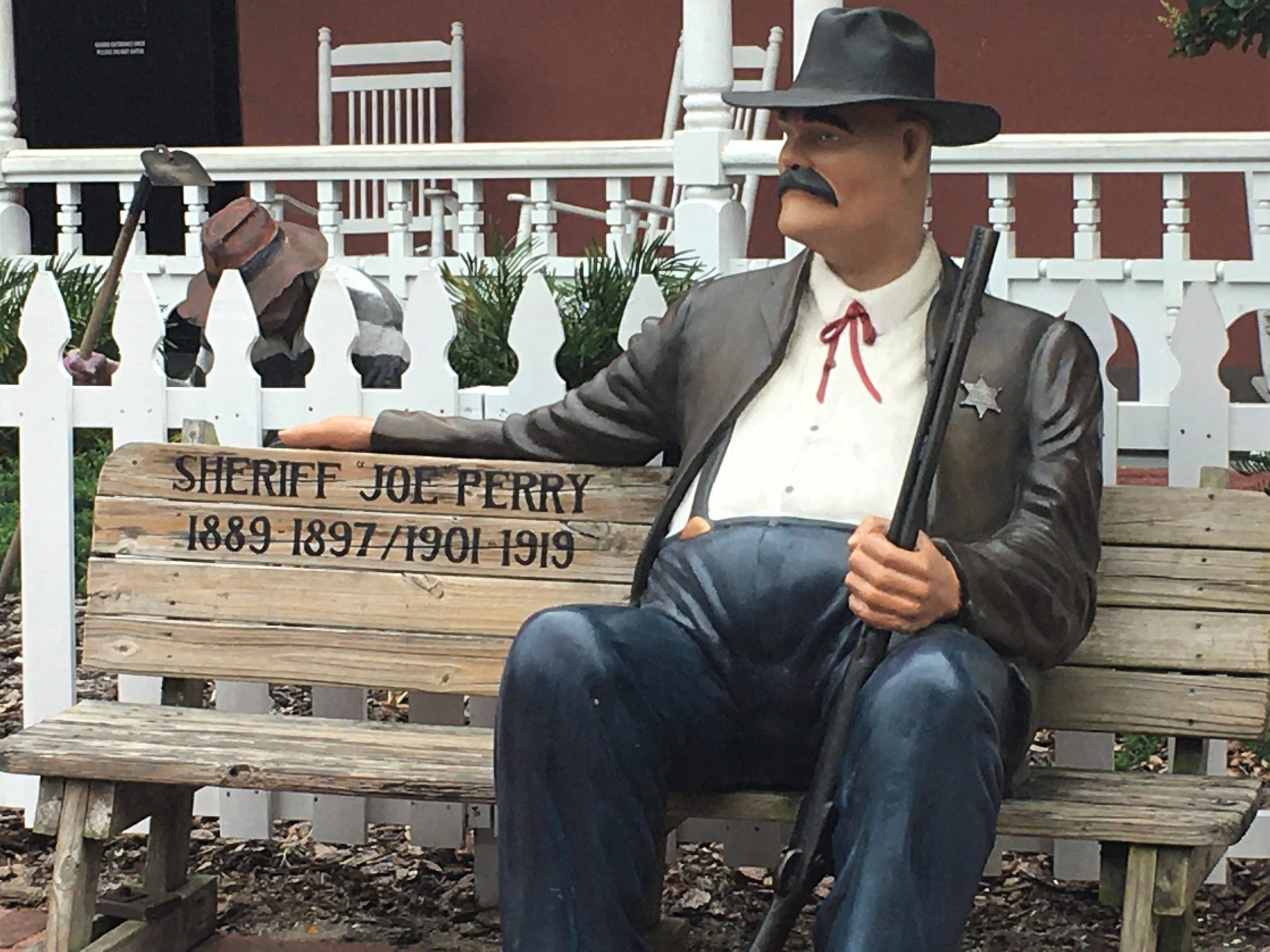
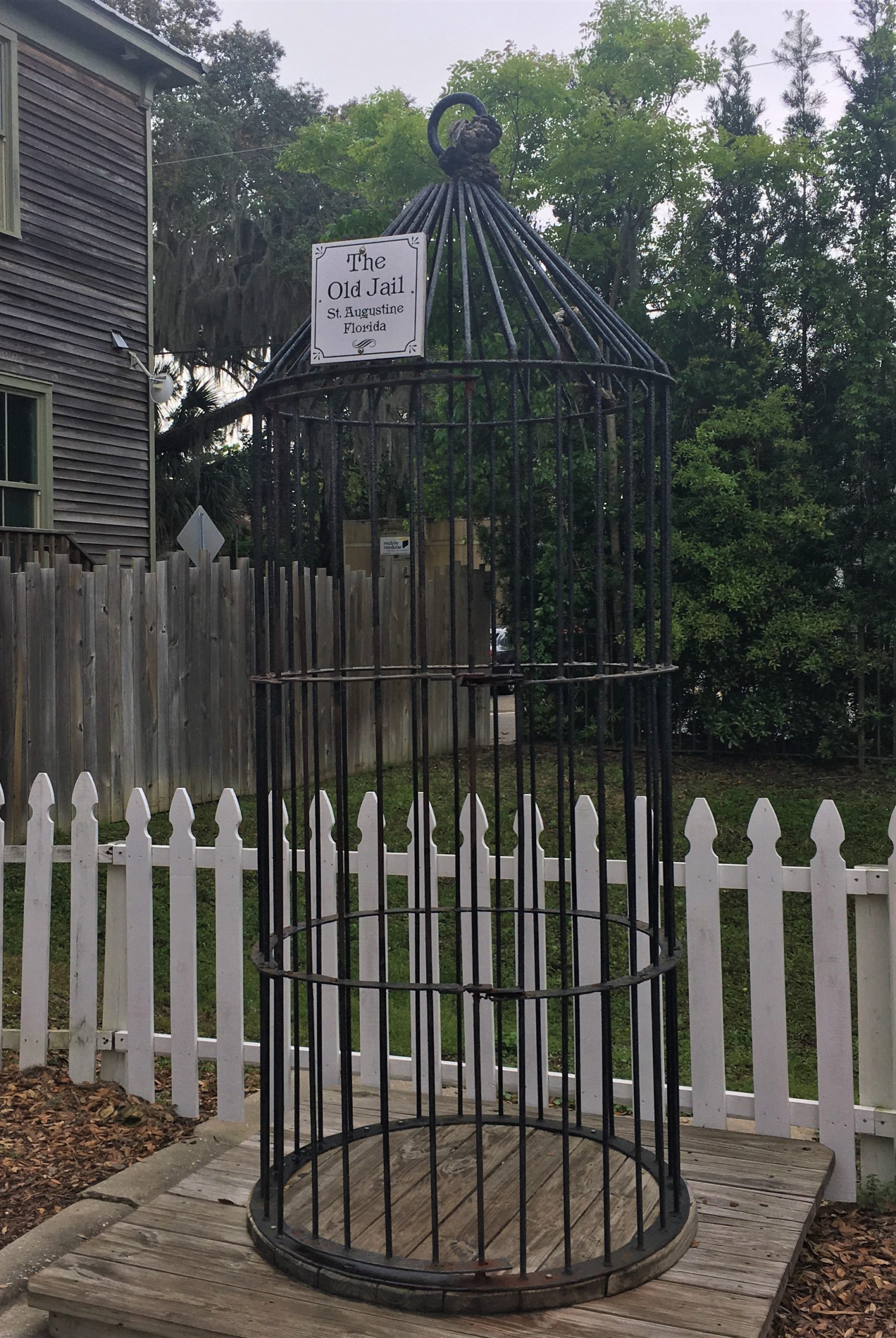
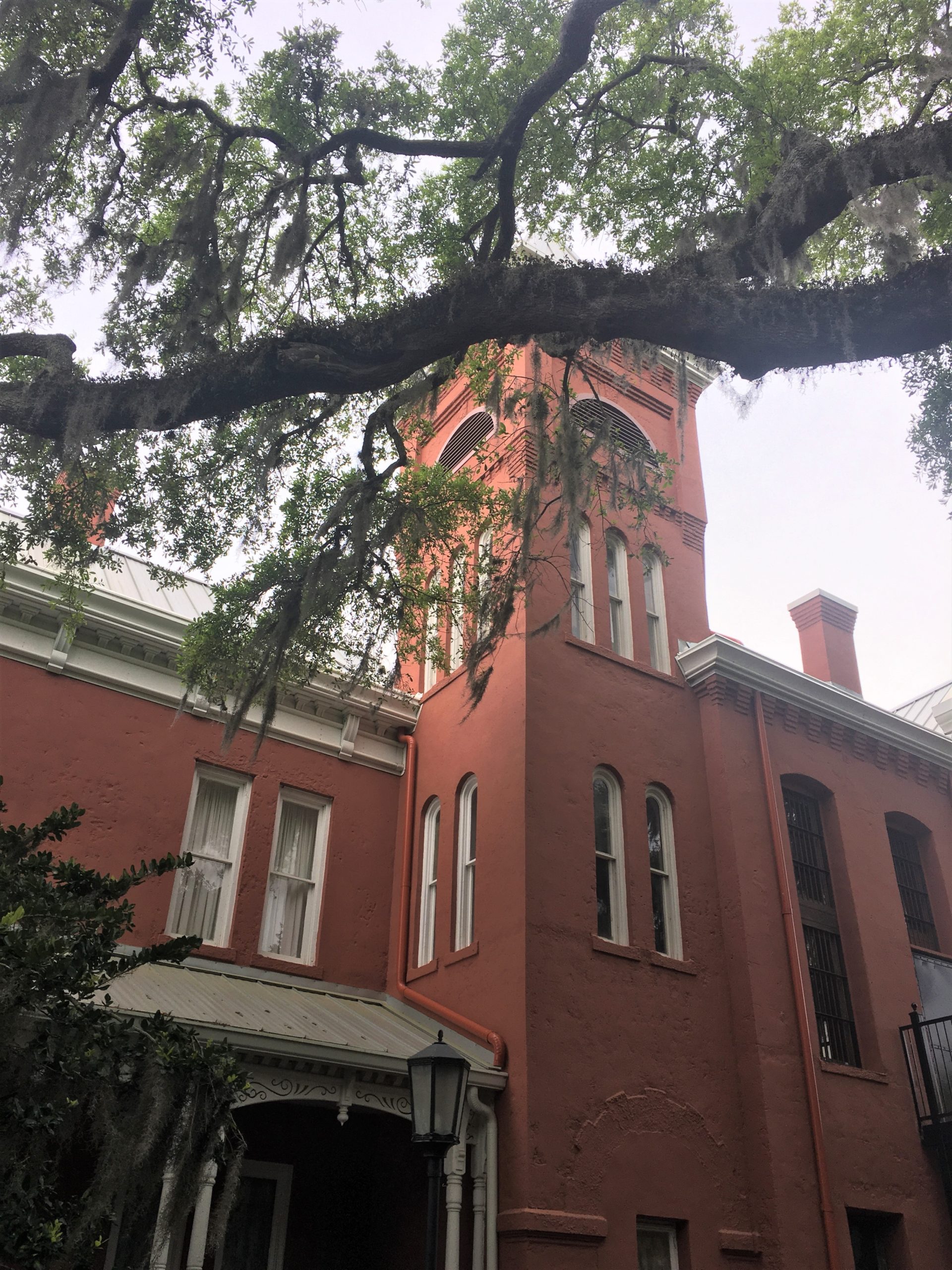
Maybe the tree grew over them? It’s been nearly 70 years, after all.
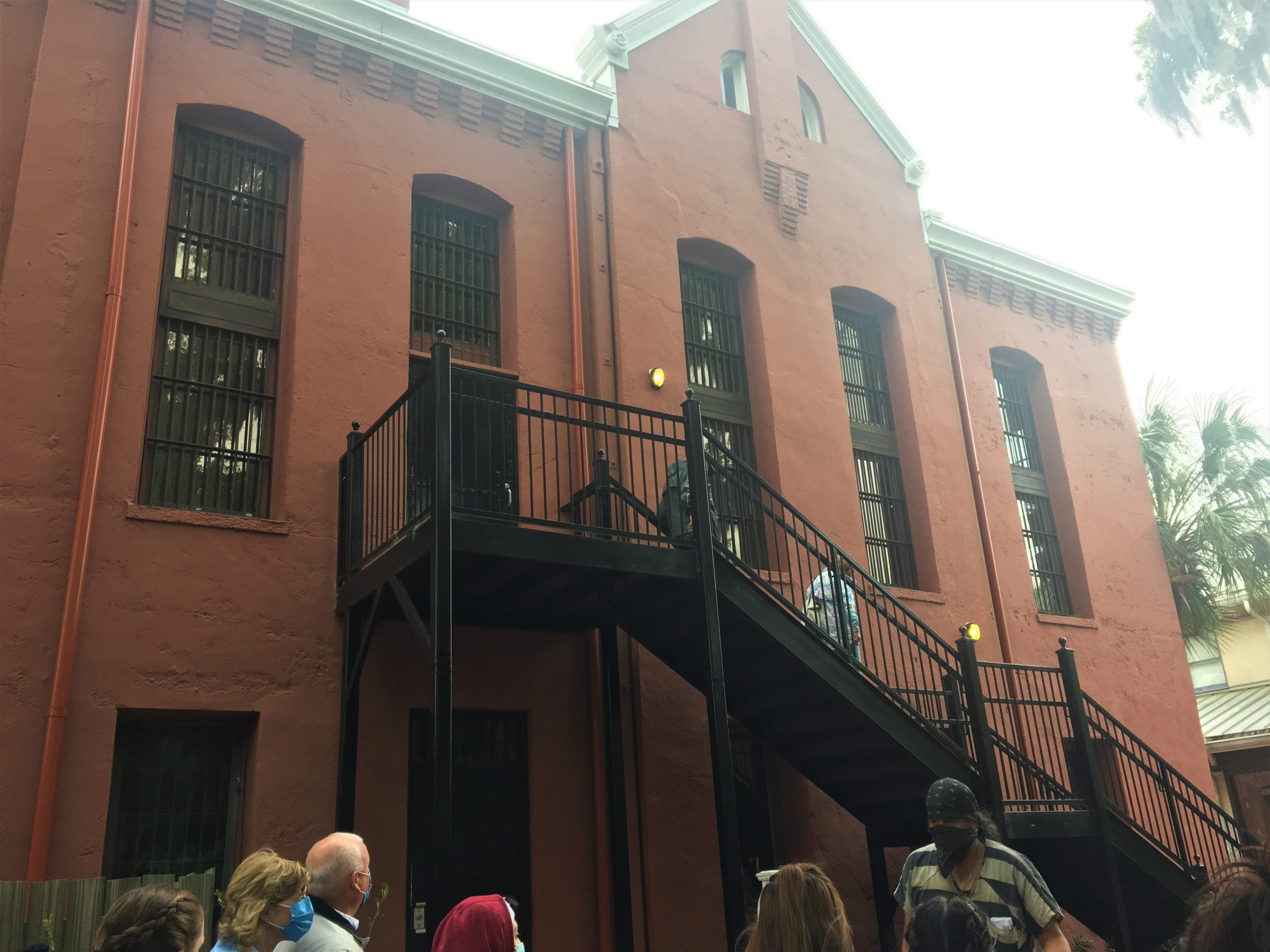
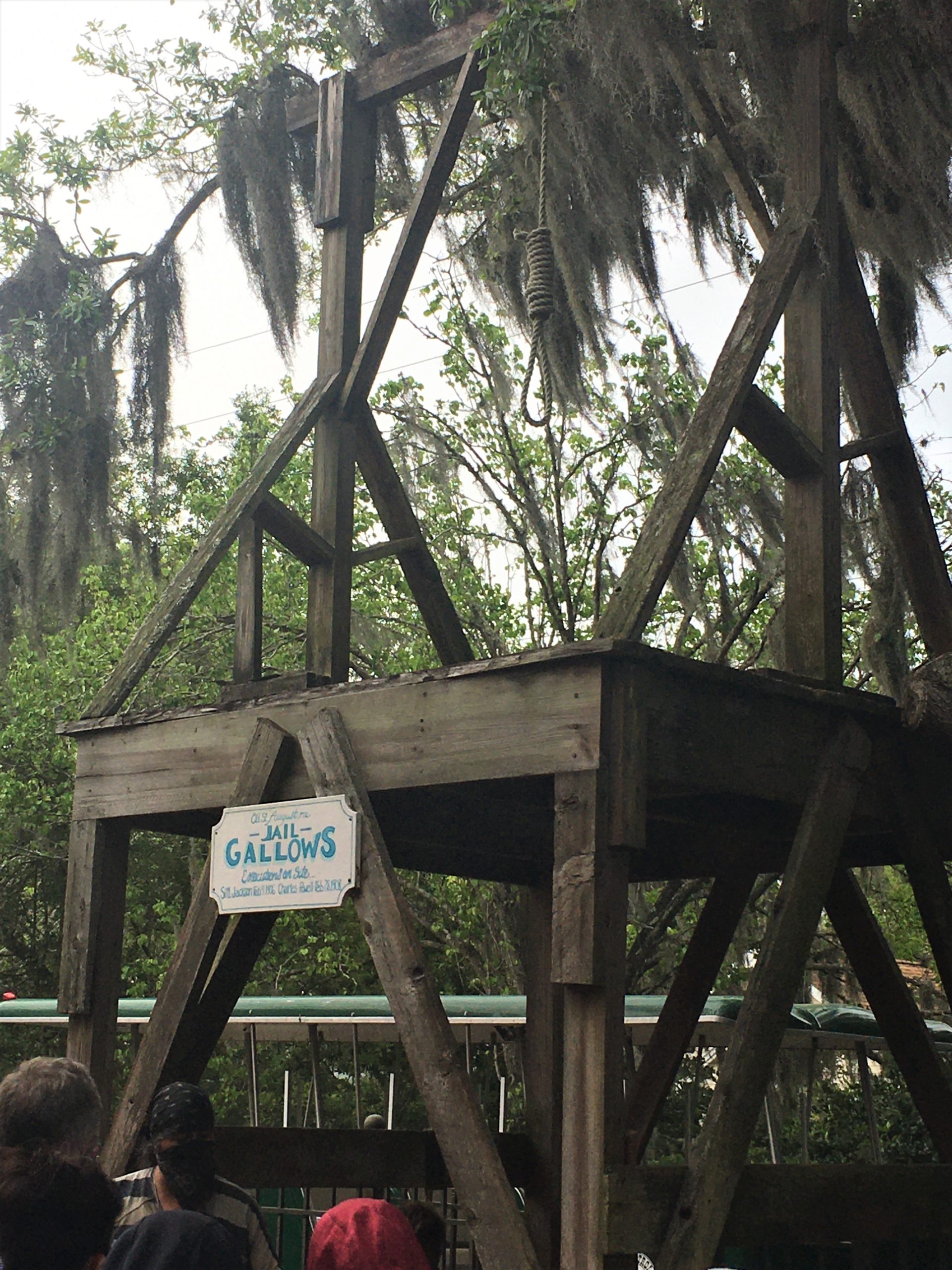
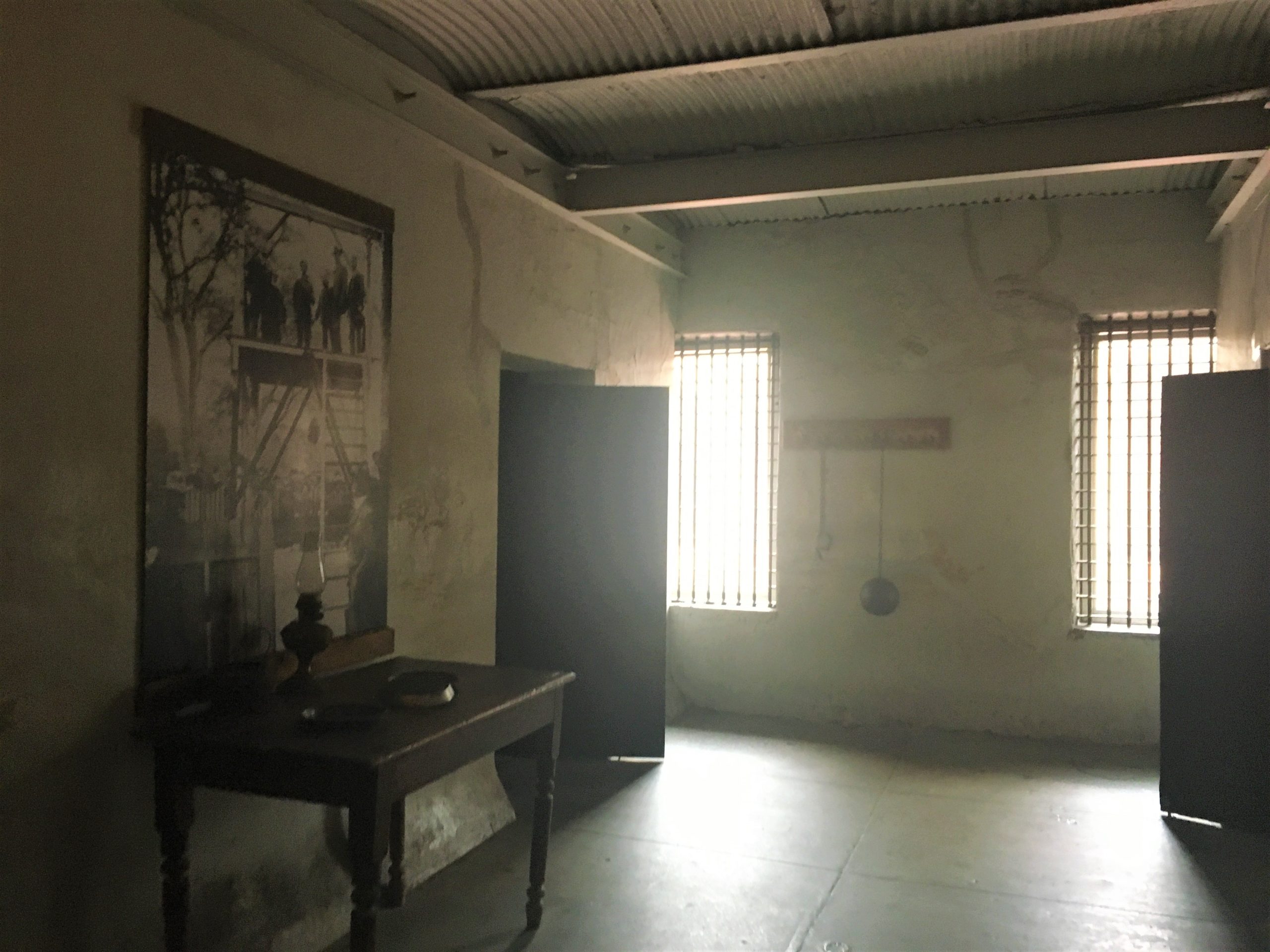

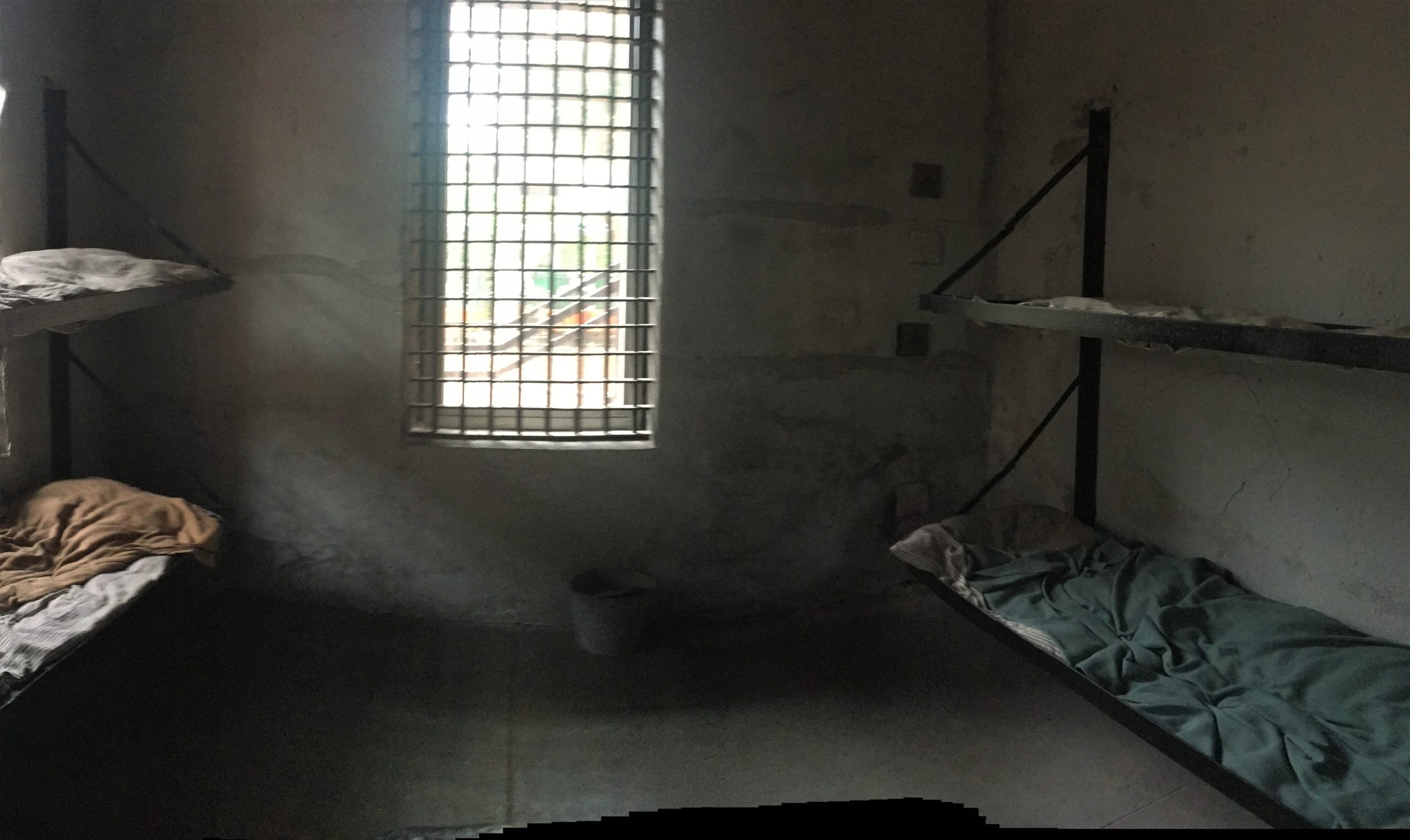
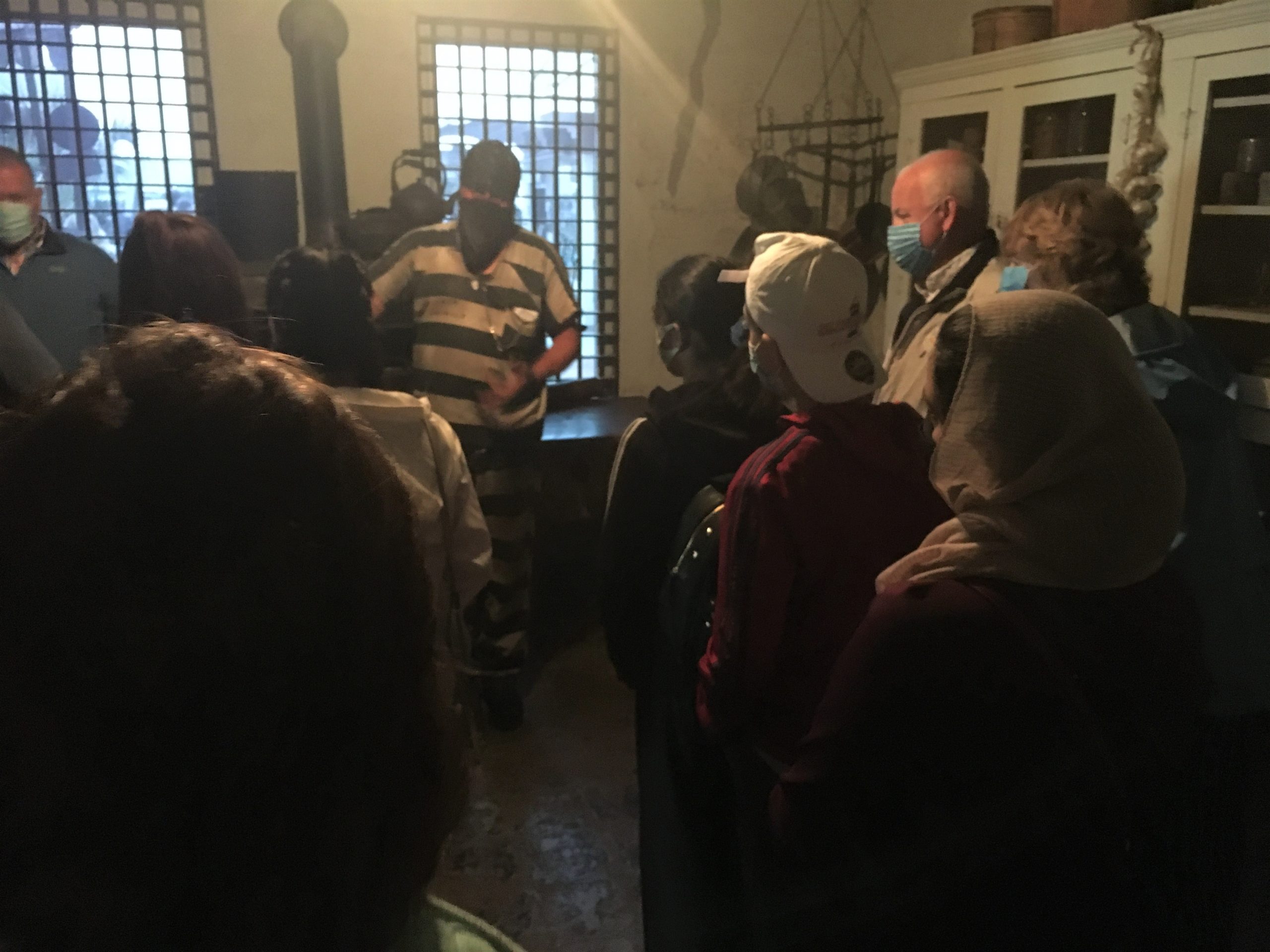
Obviously, it’s not necessary to stay 6′ apart when you’re in prison. lol
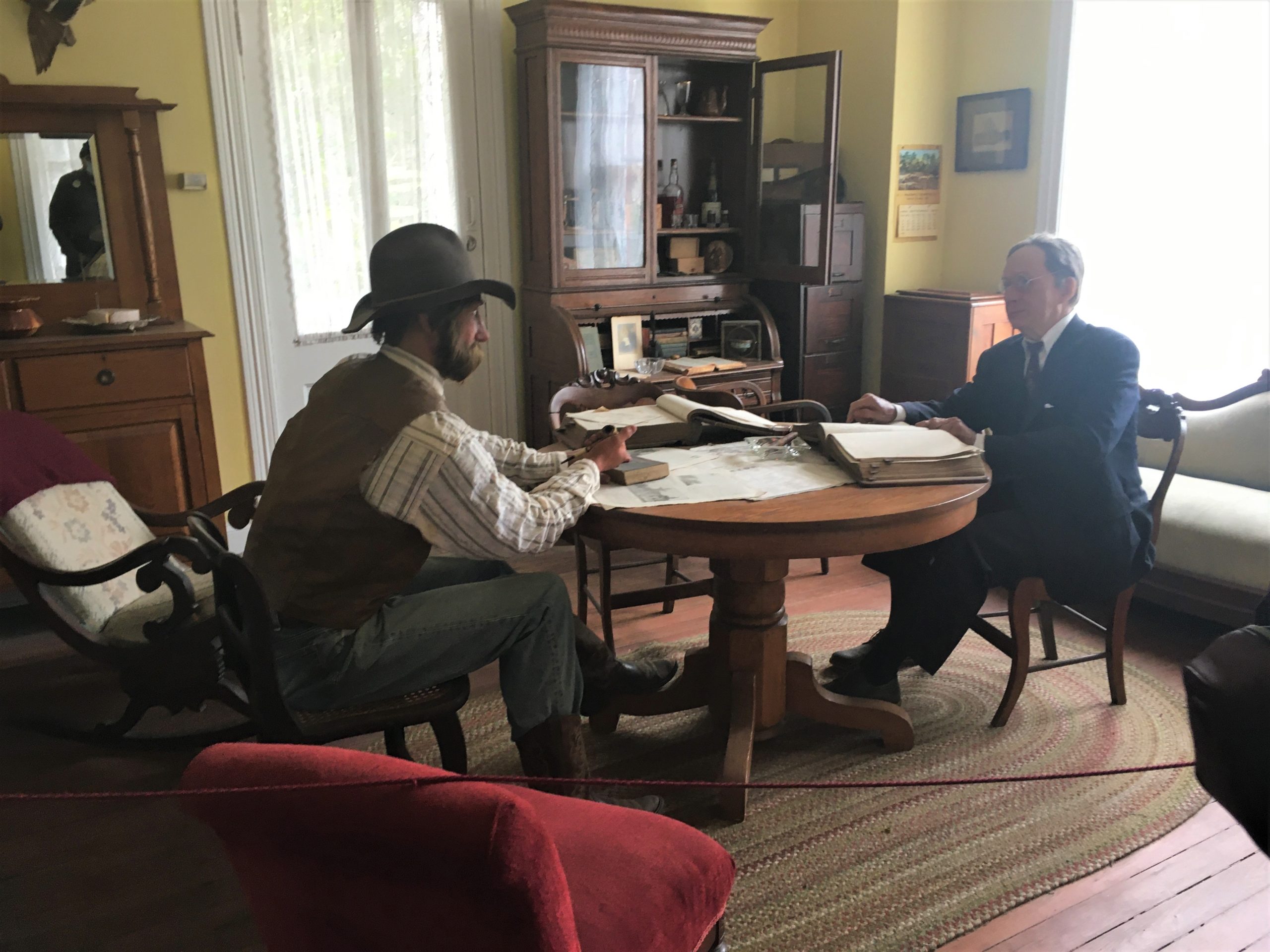
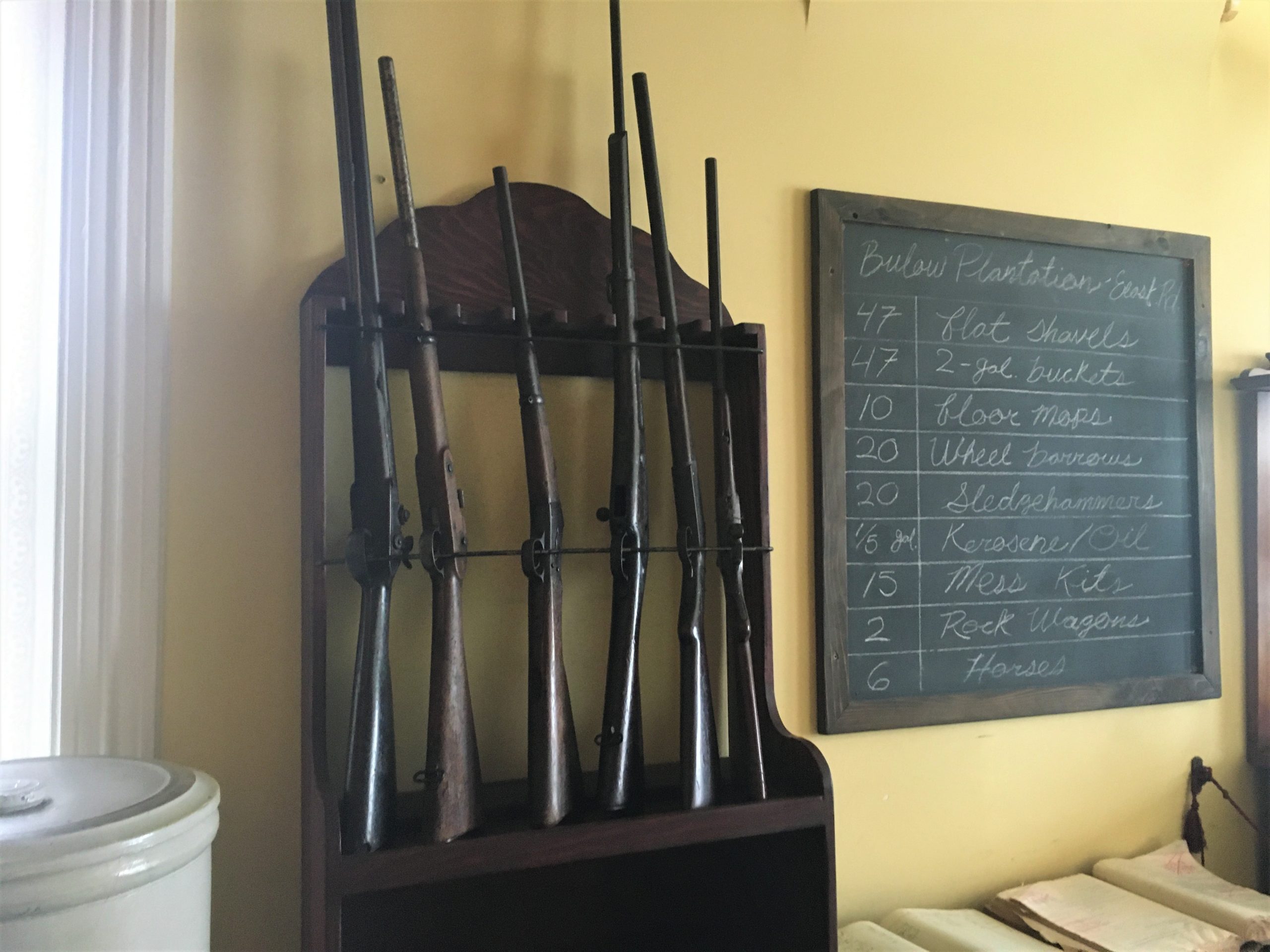
Remember when we discovered that place a few days ago?
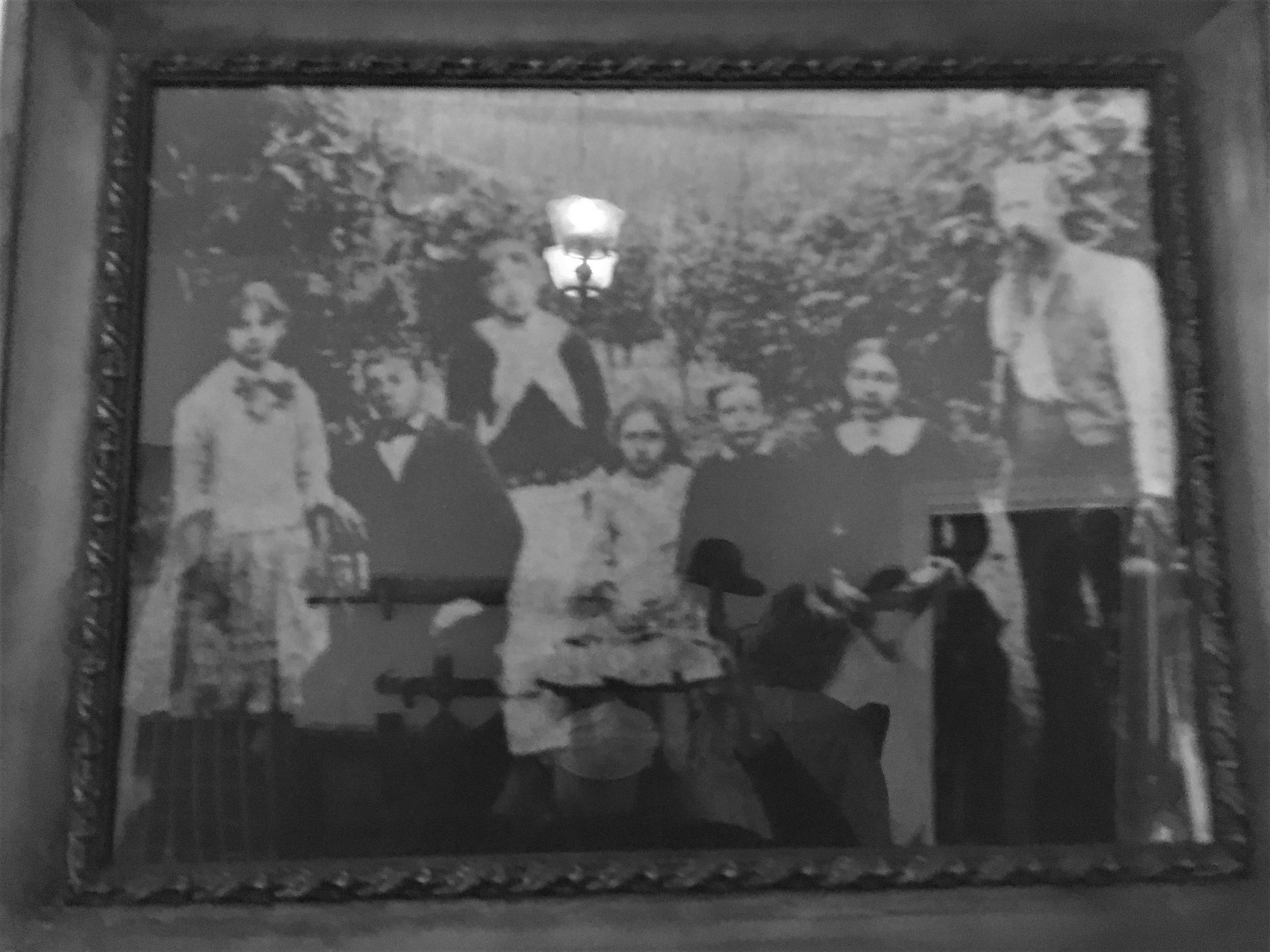
An even bigger adult. He was 6’5″ and 300 pounds.
He served as sheriff for 26 years, the longest in Florida history.
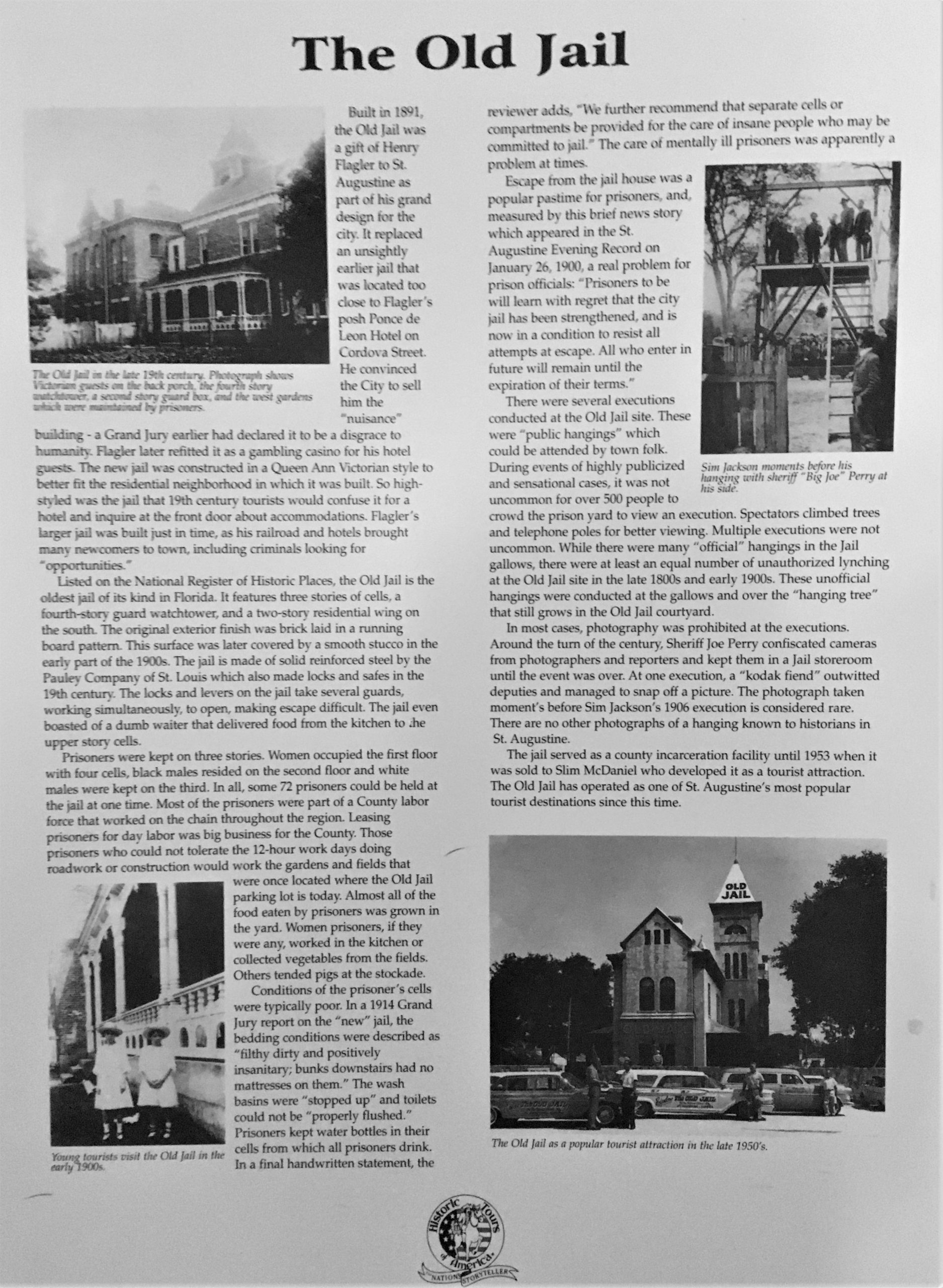
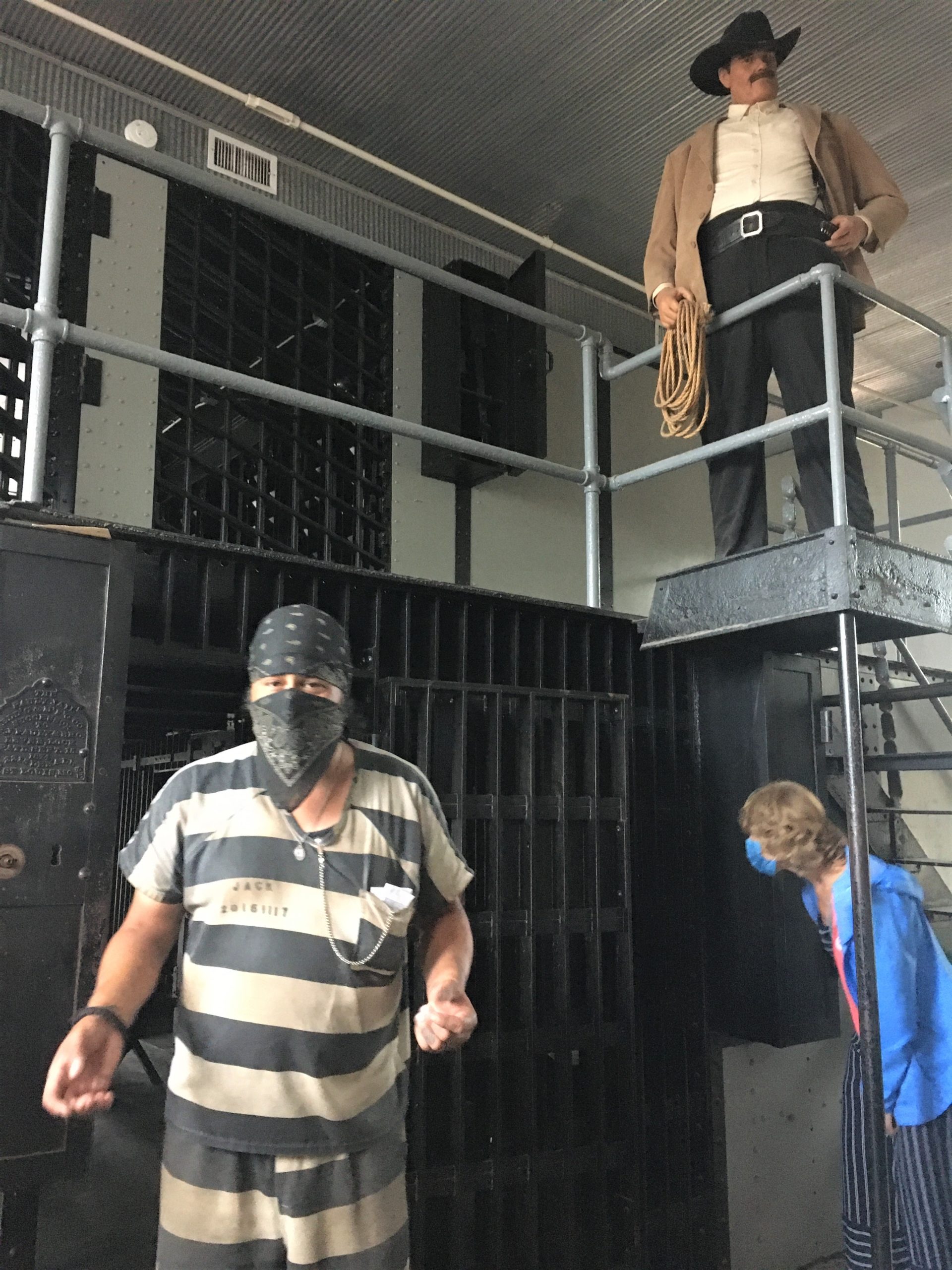
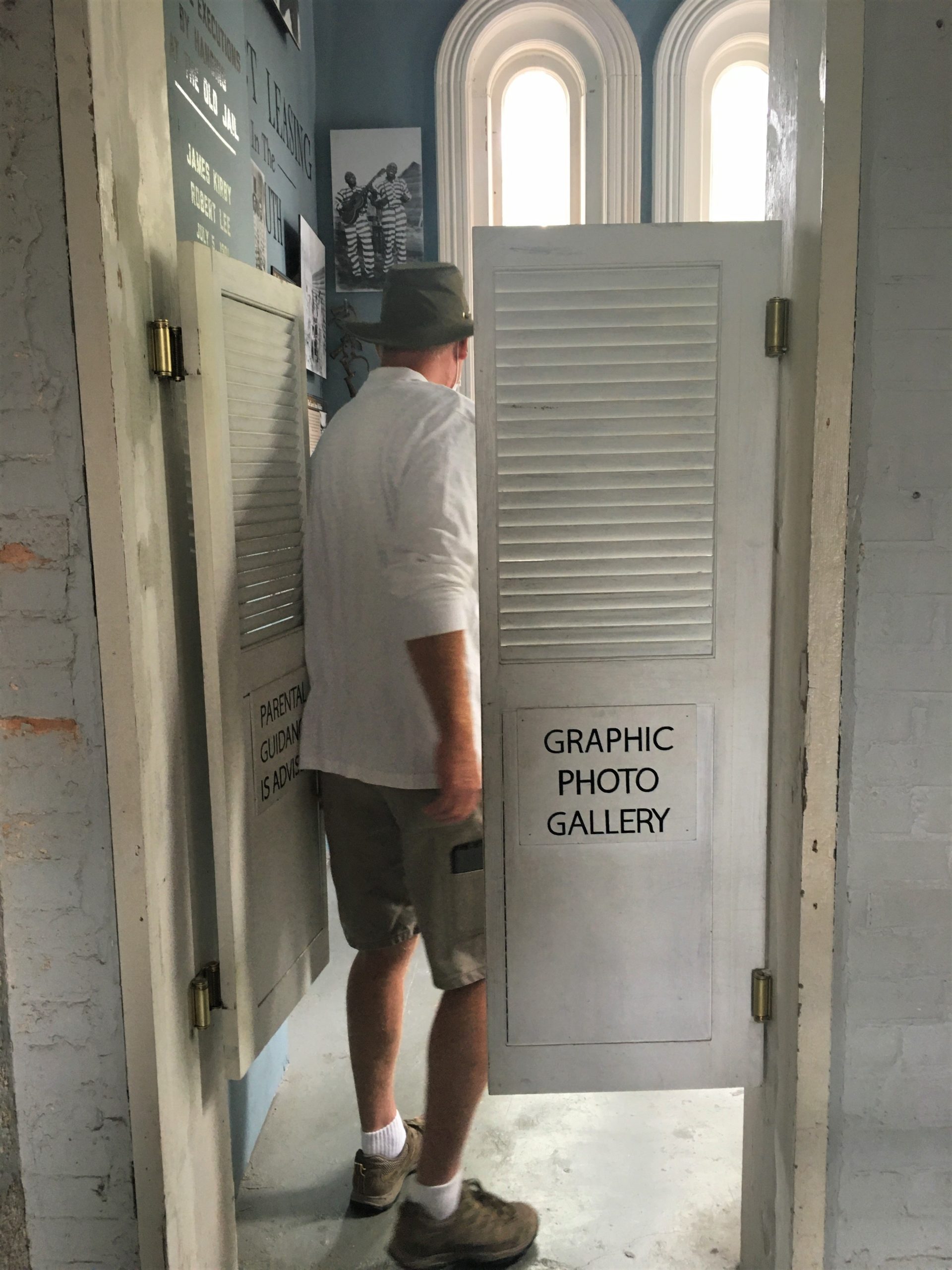
that shares some more graphic history.
If you’re not interested, scroll down about 5 pictures, until you get to the one that’s the inside of a jail cell.
“The Long Drop” is pretty graphic reading.
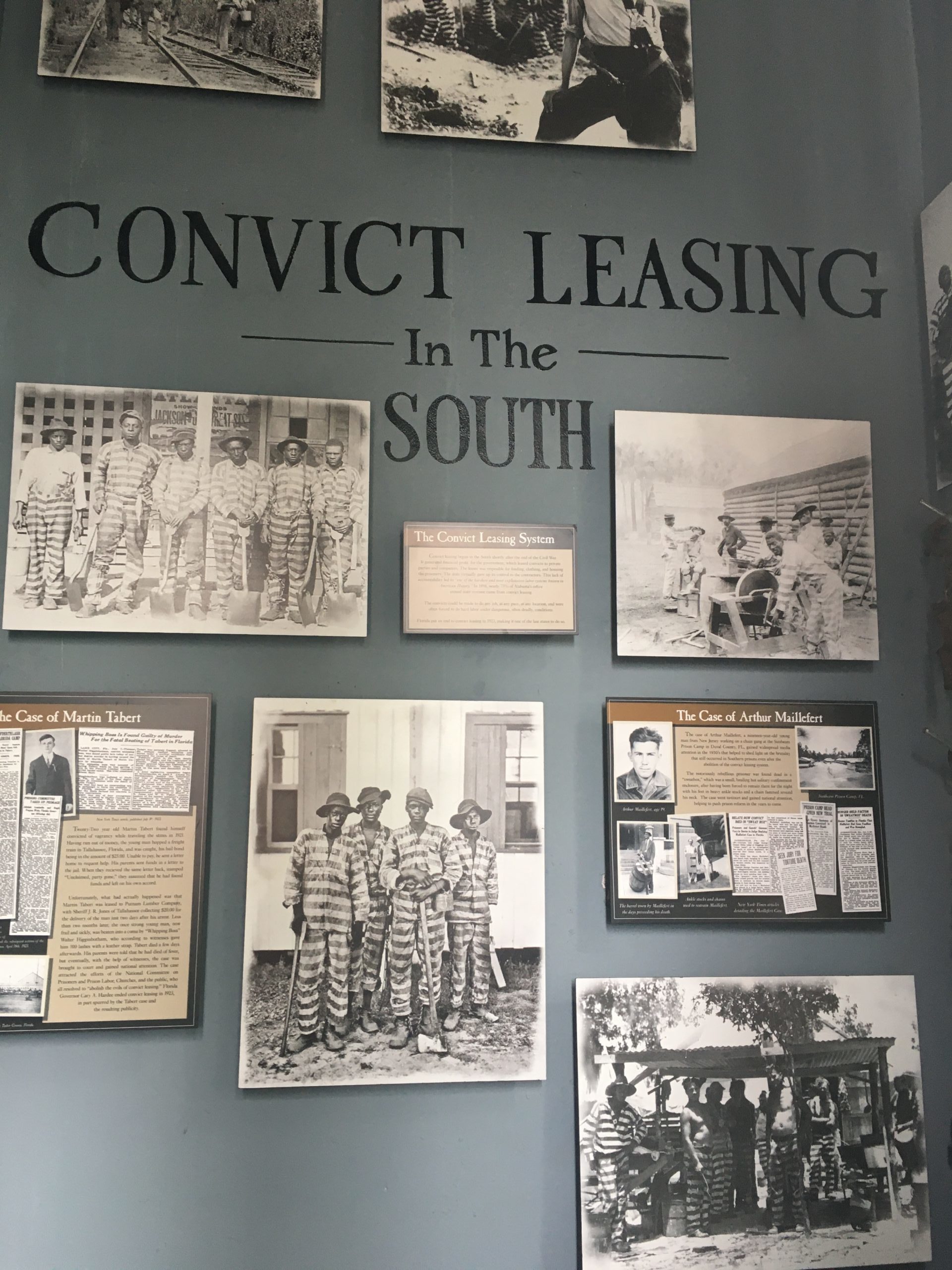
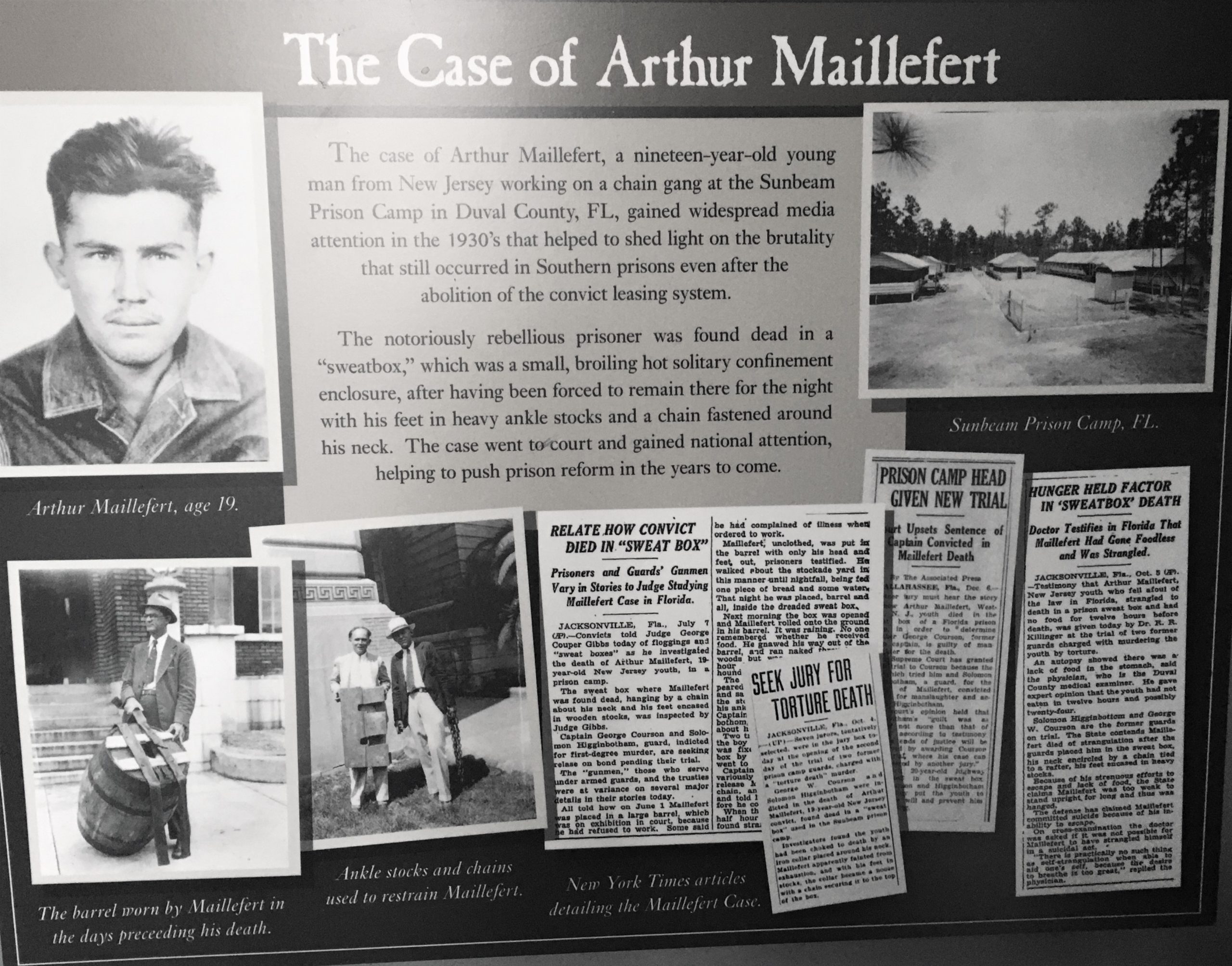
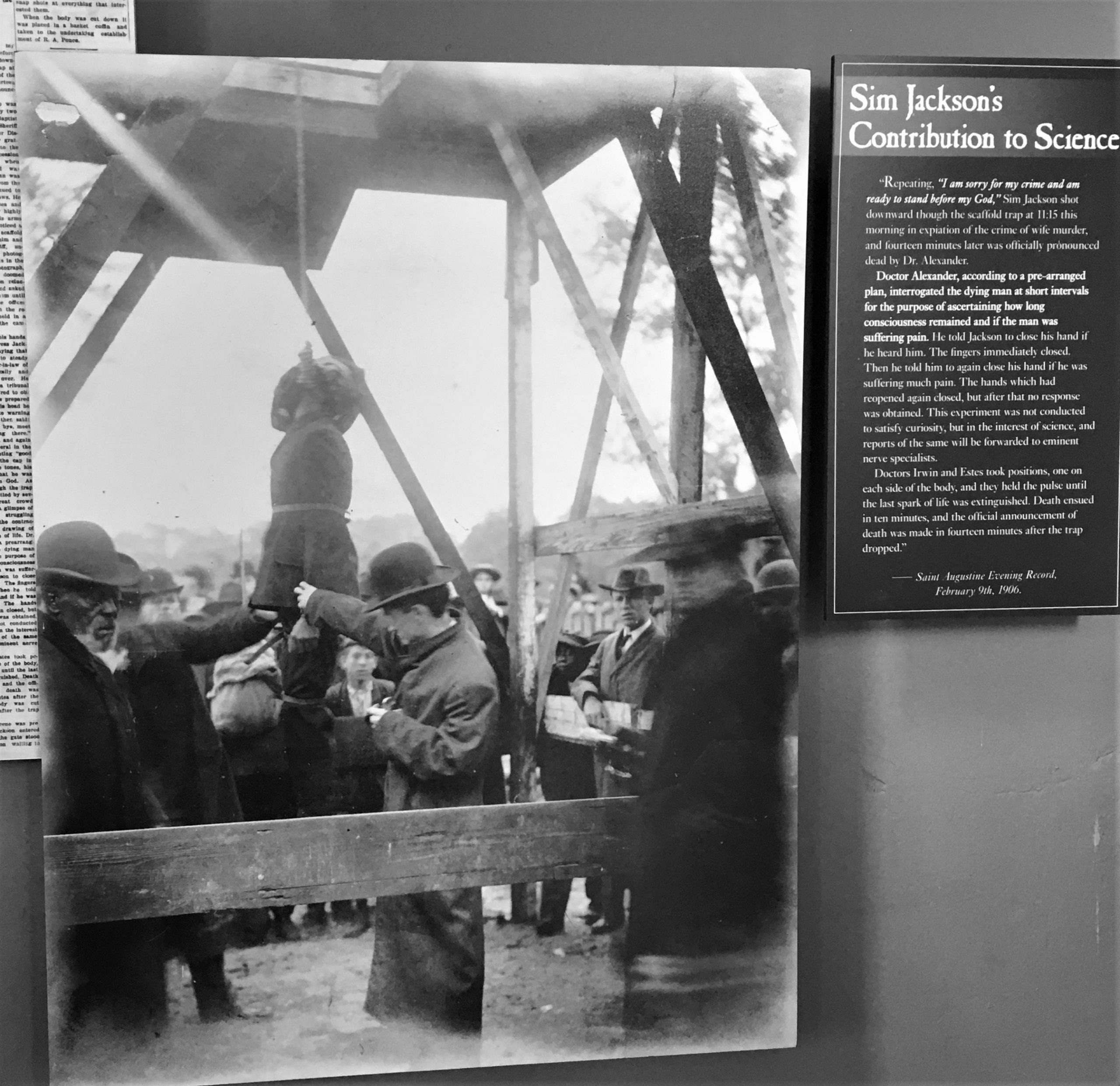
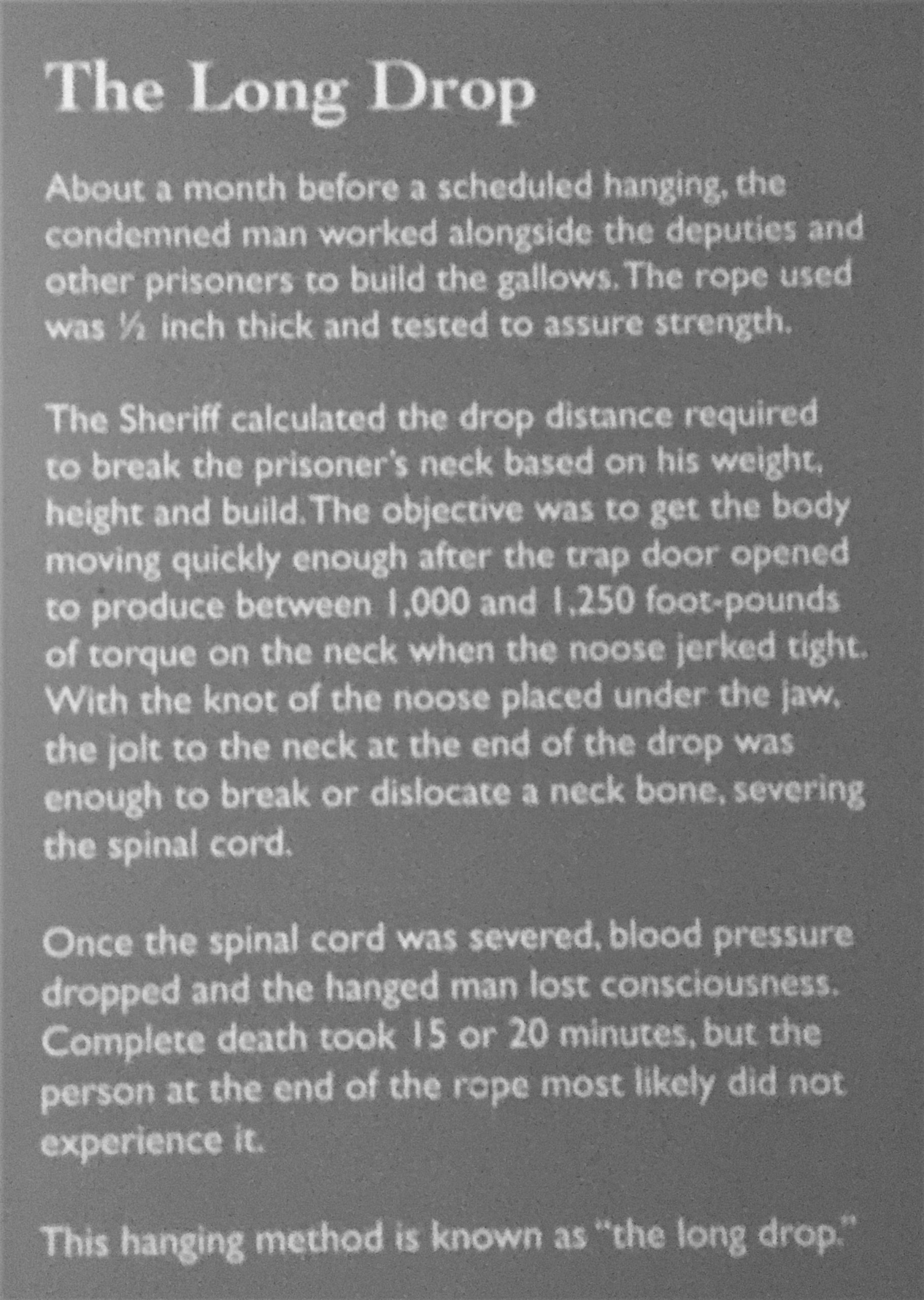
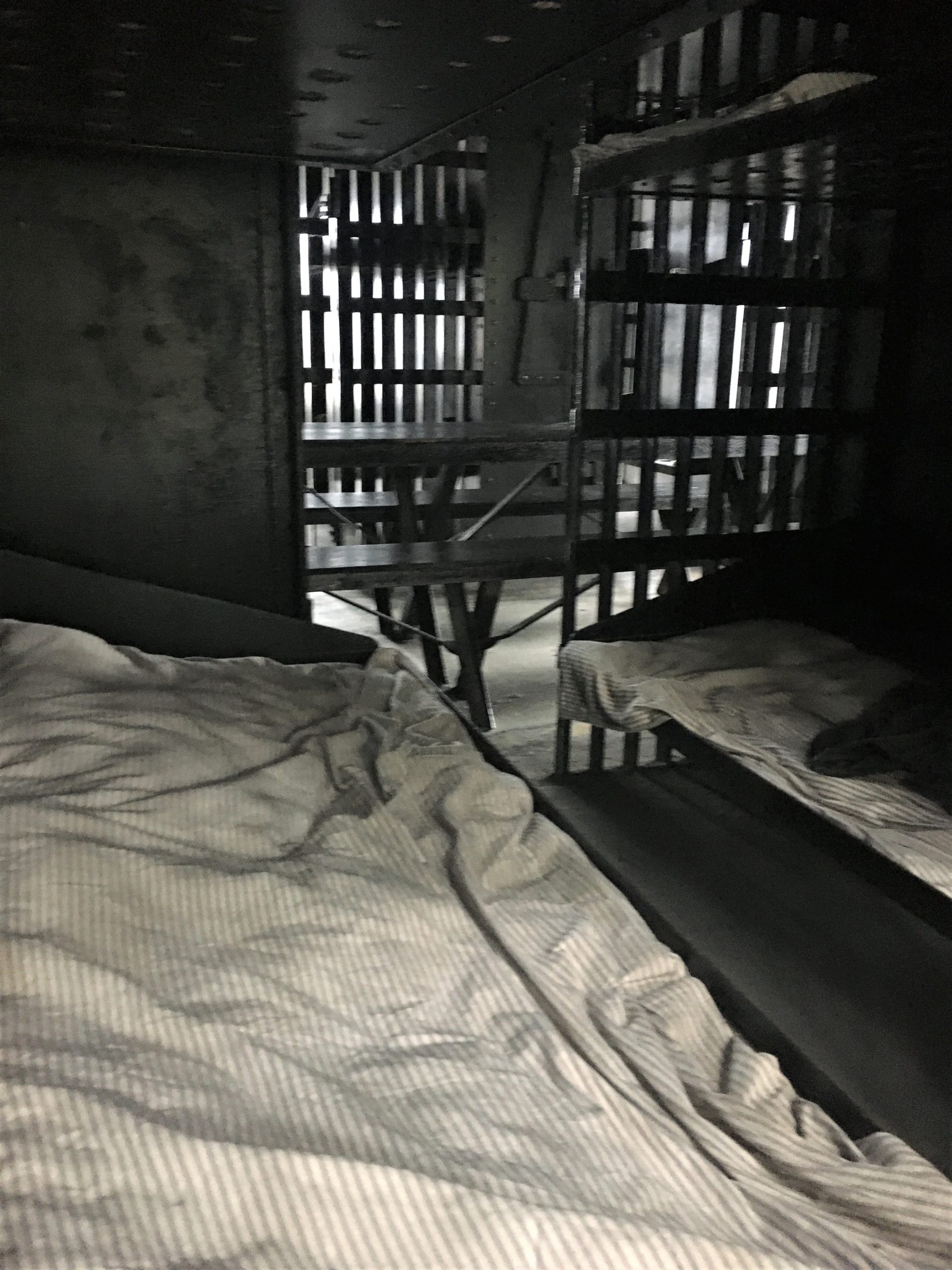
They used those to prop a plank of wood on to make additional beds – so they could house 20 prisoners in here! They could put 15 beds in – five per row. I don’t know what they did with the other 5 guys.
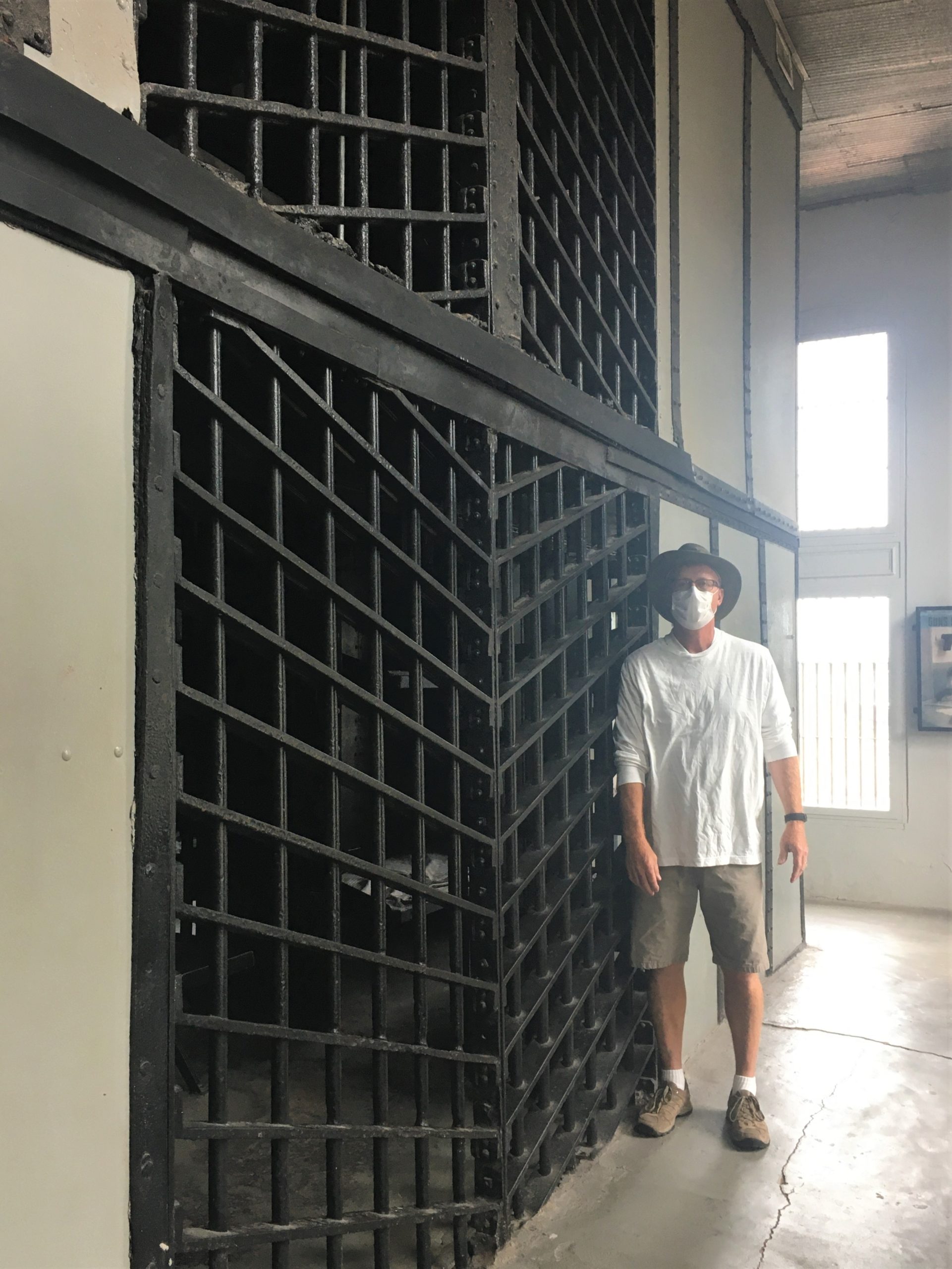

Right next door to the jail, was the History Museum, which is free. So we checked that out and learned some more cool stuff.
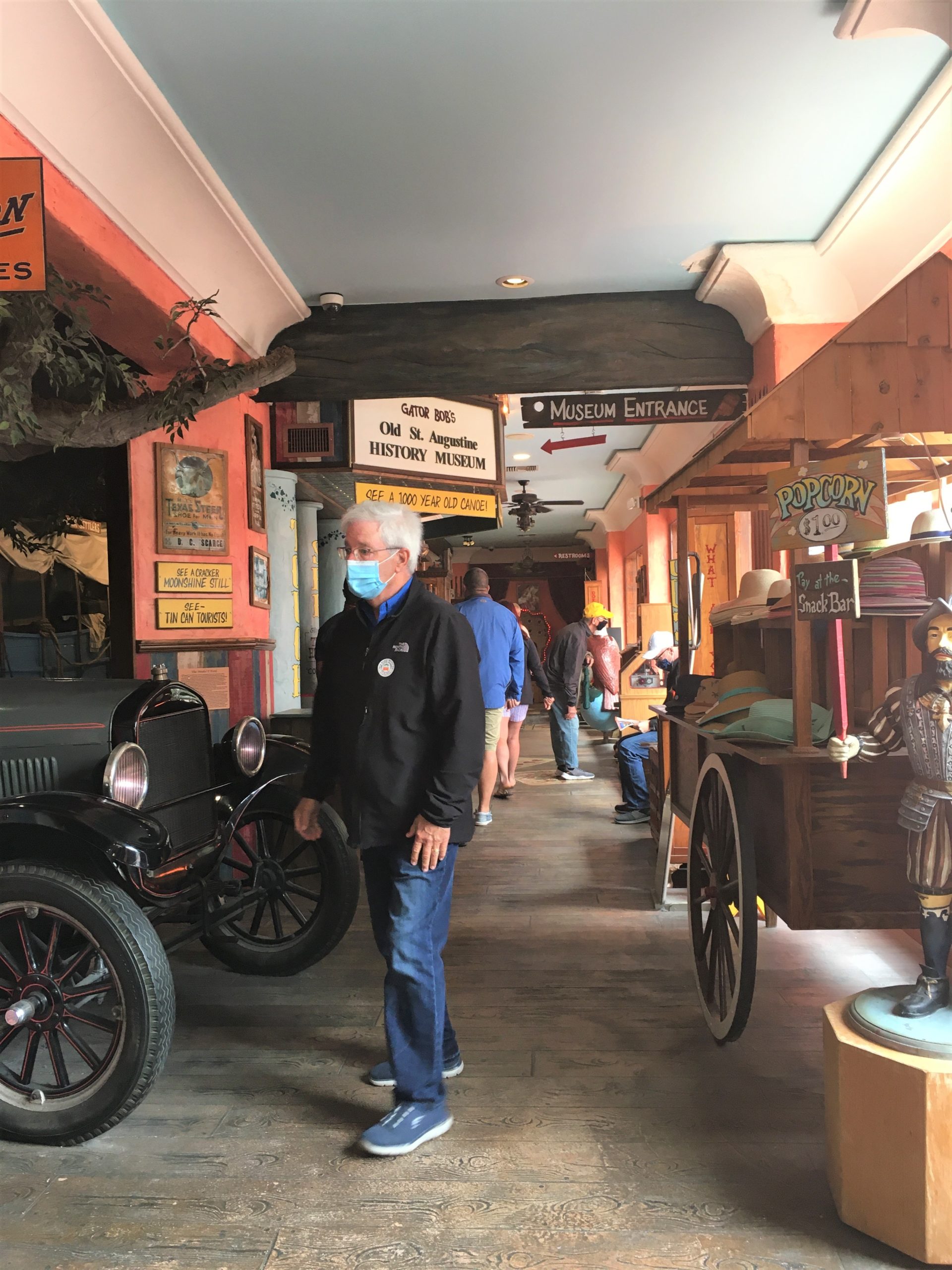
Note the front of the car on the left, you’ll see the rest of it later. : )
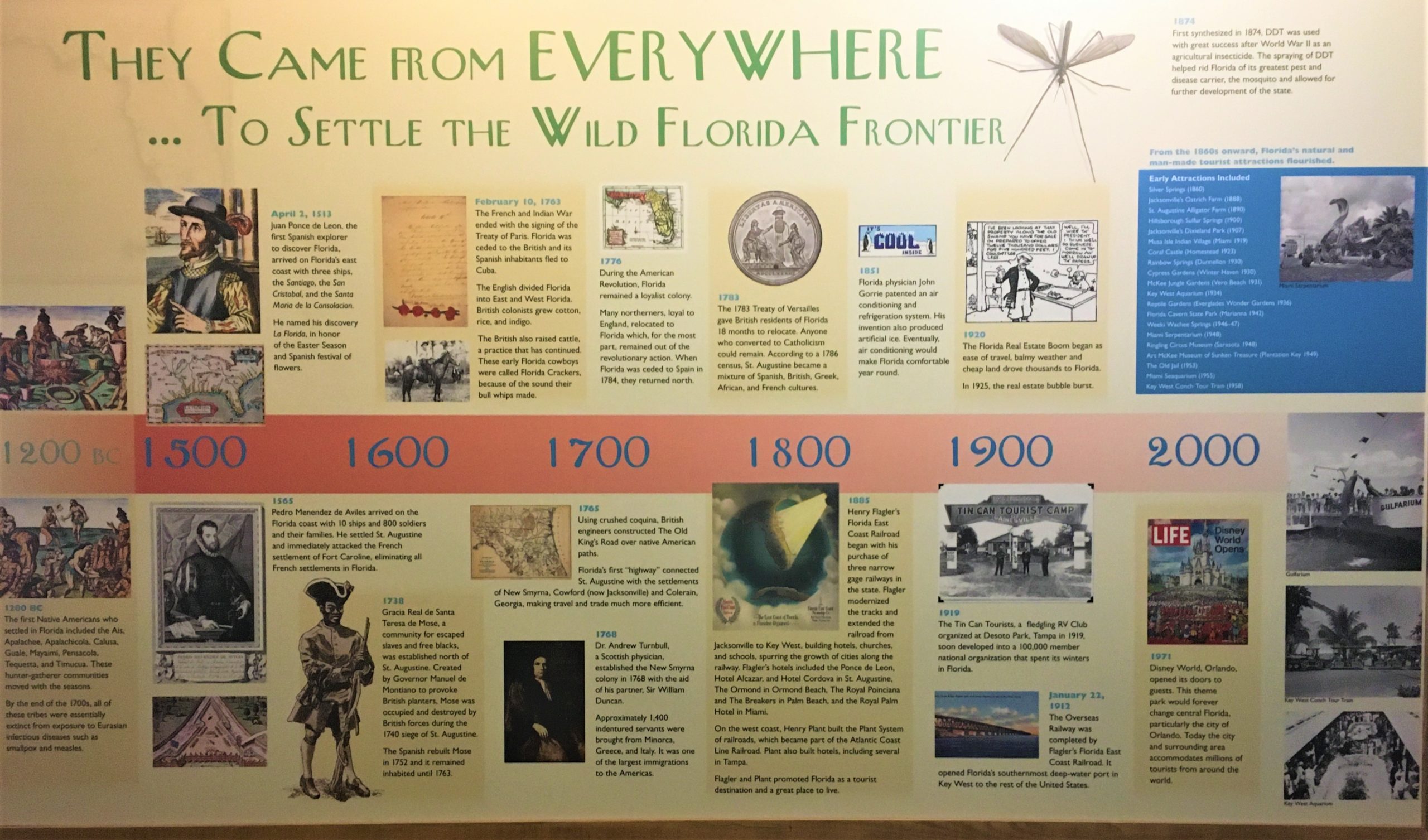
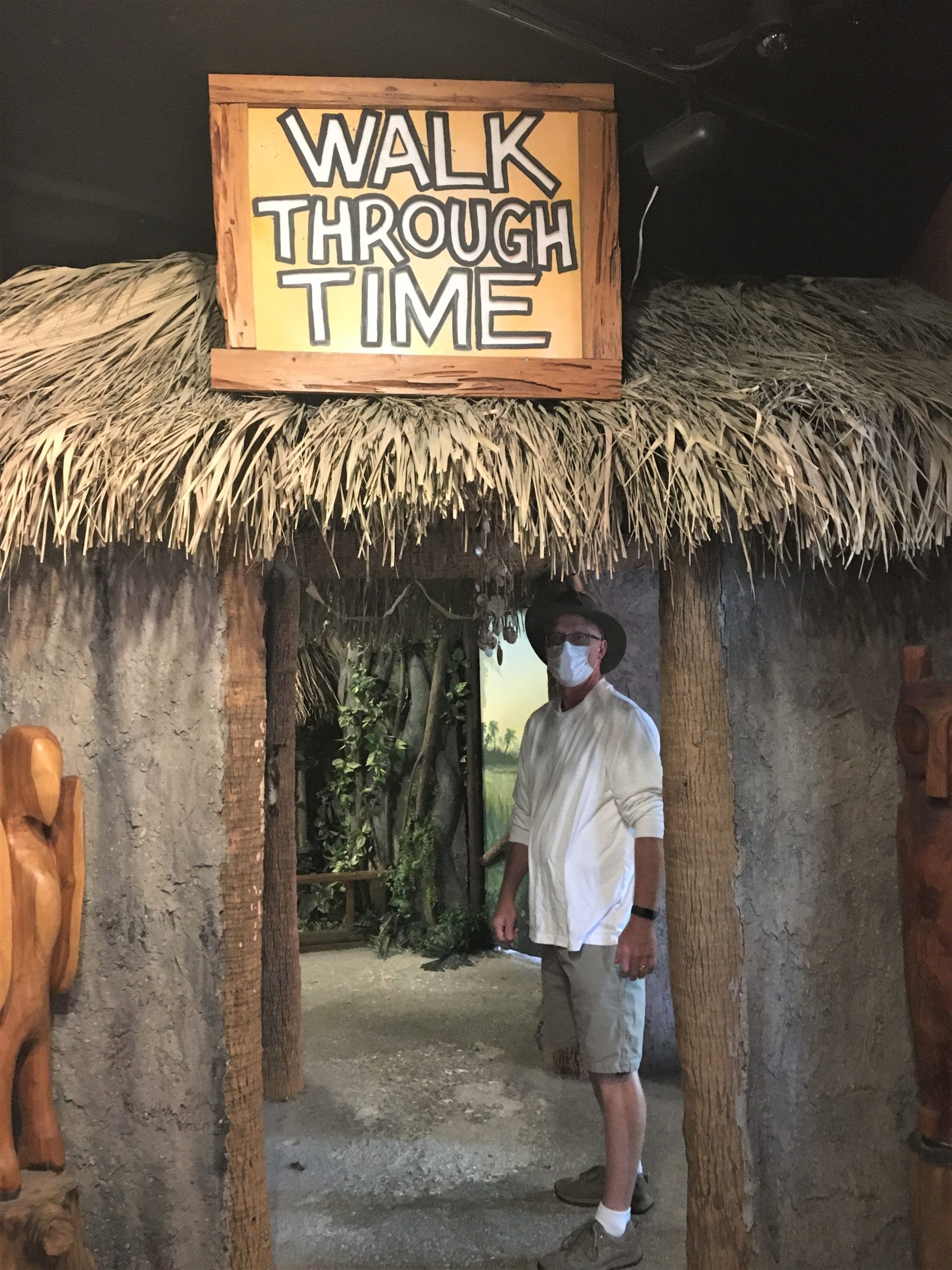
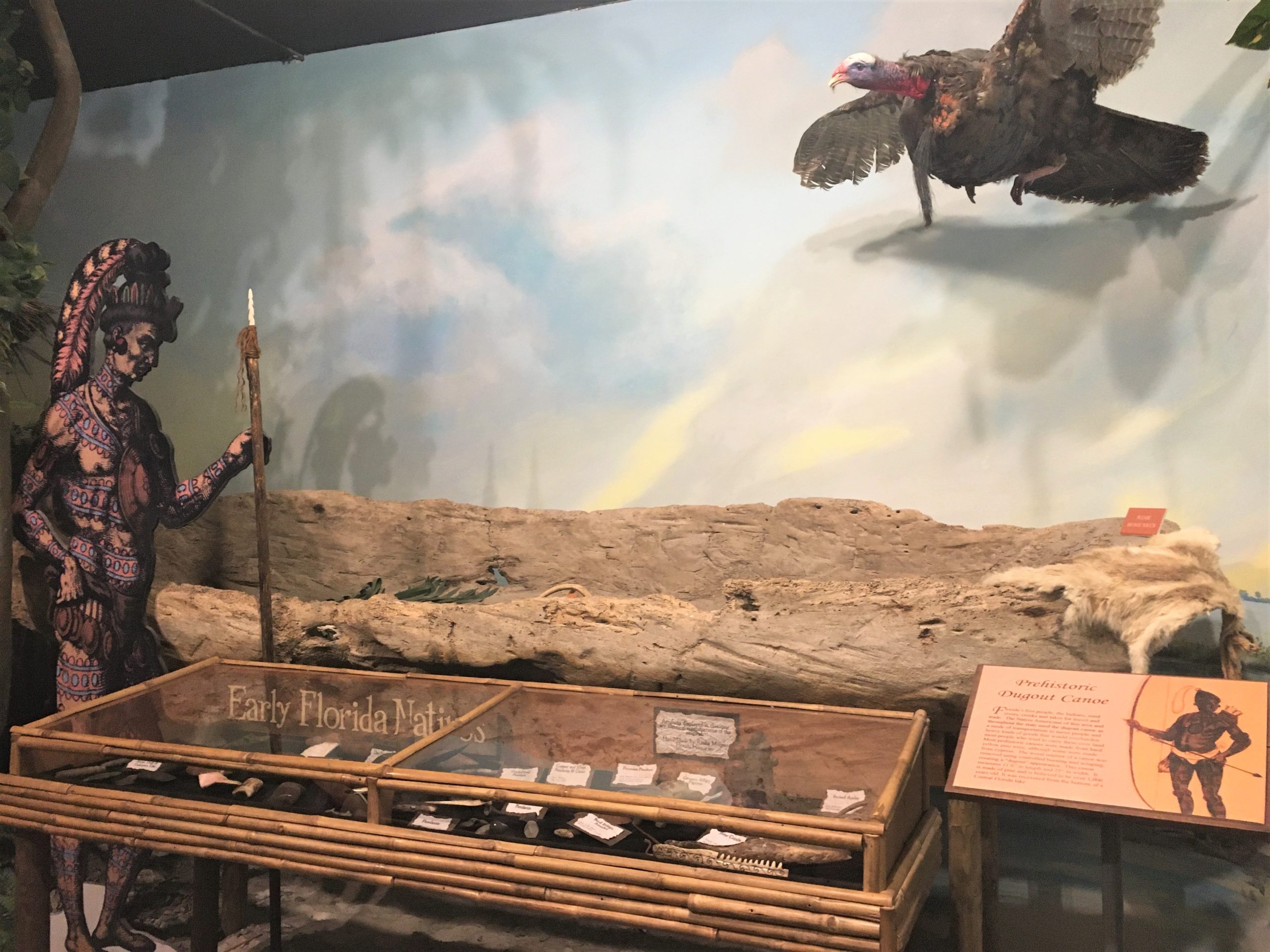
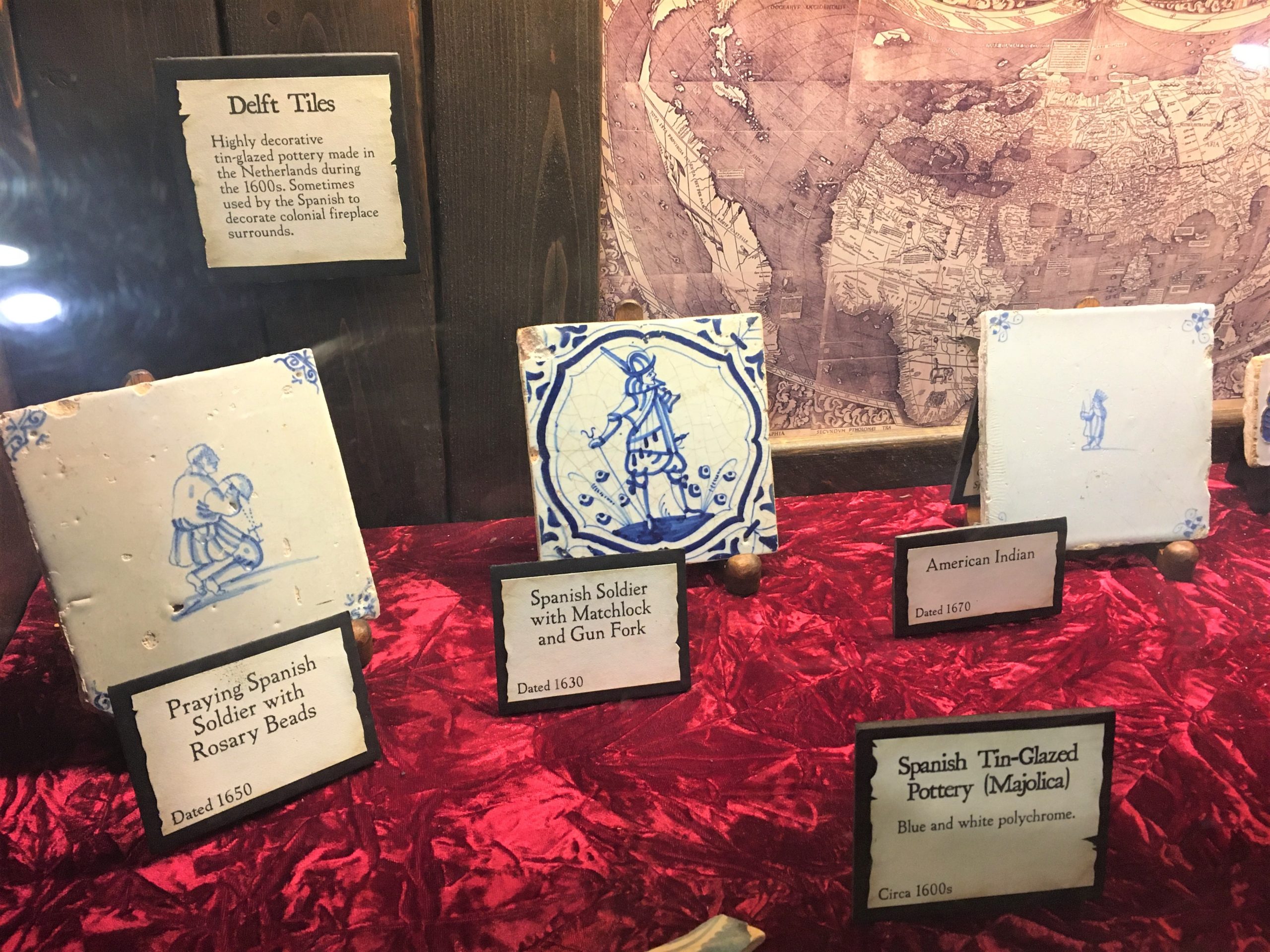
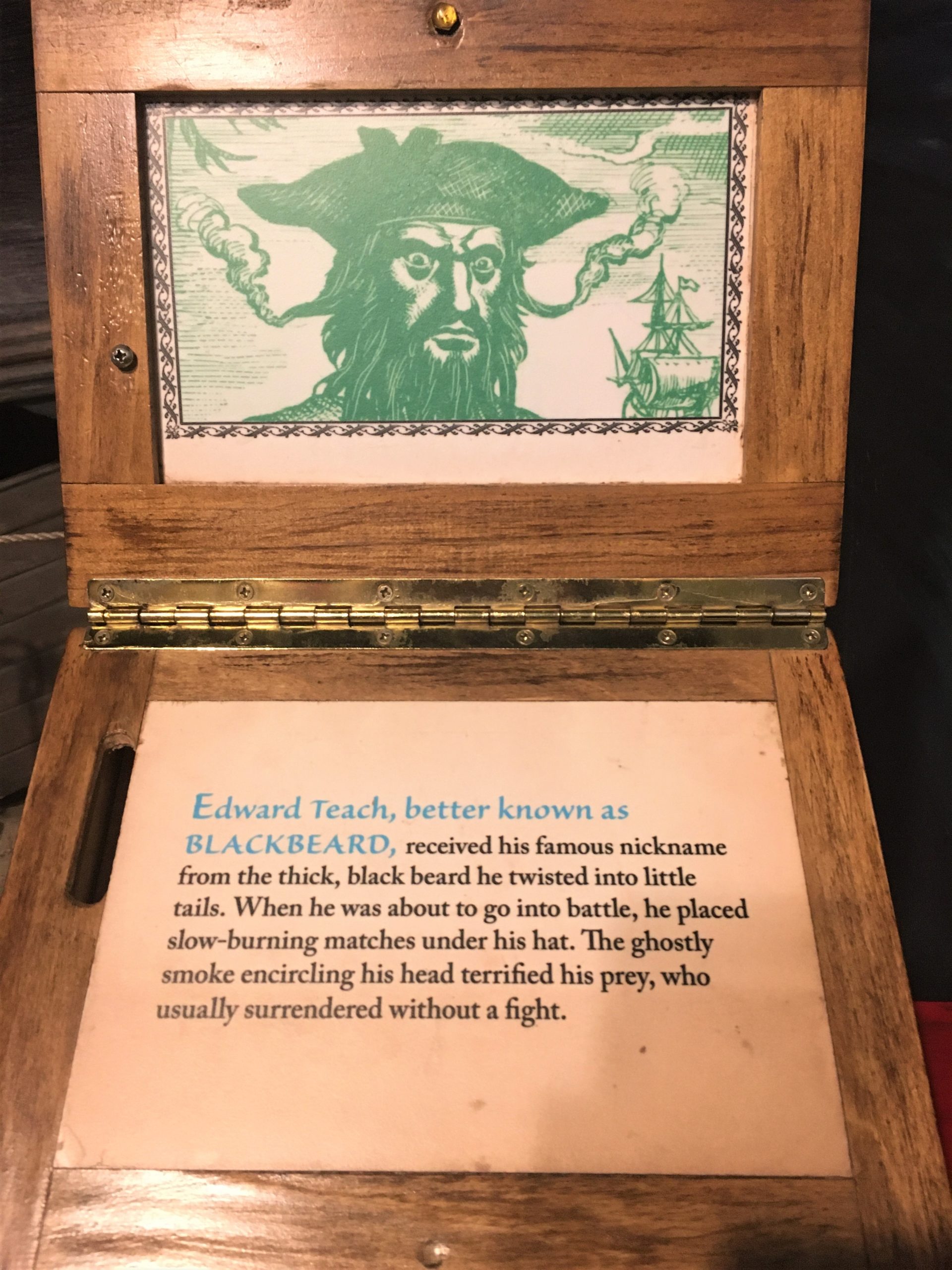

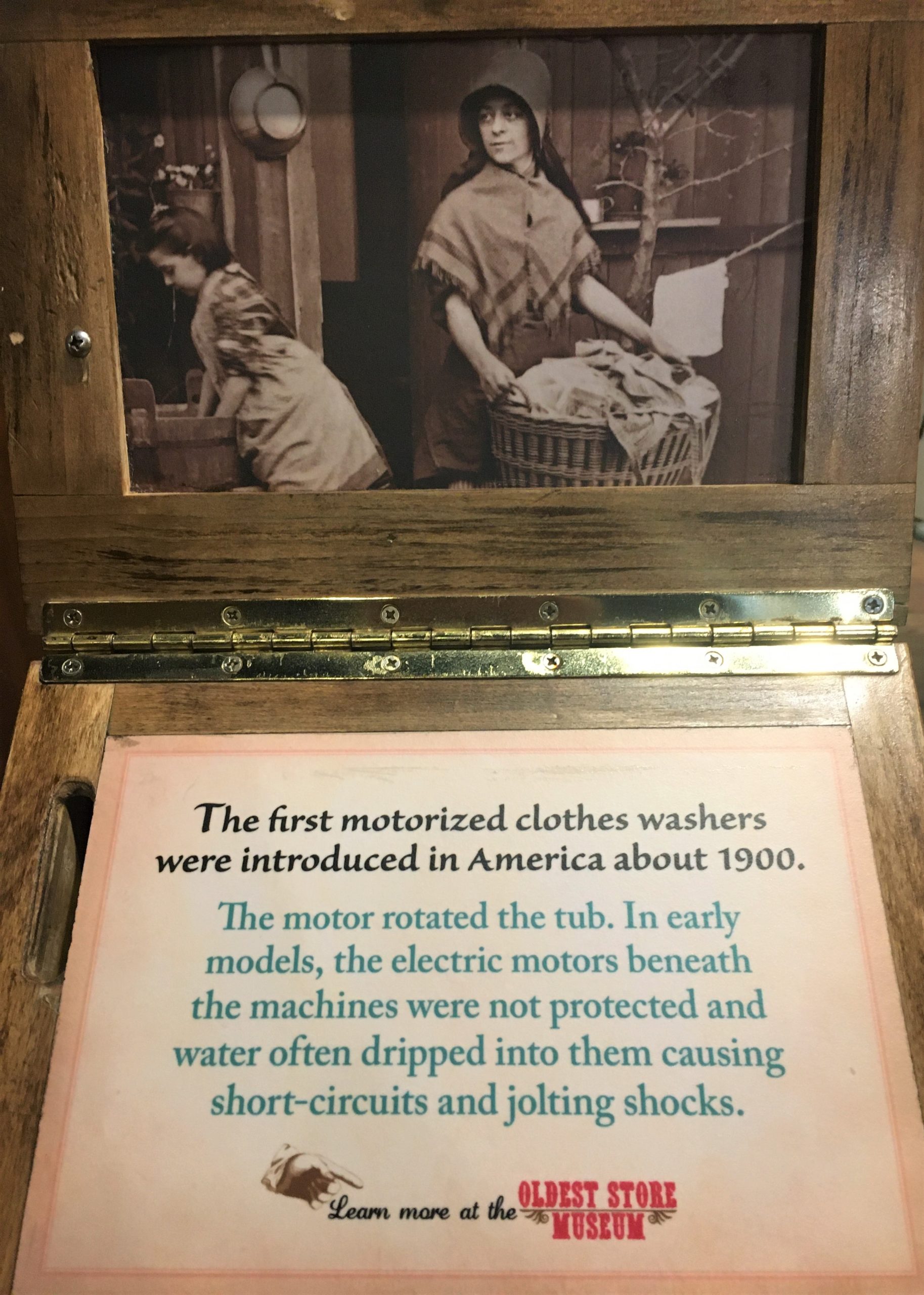
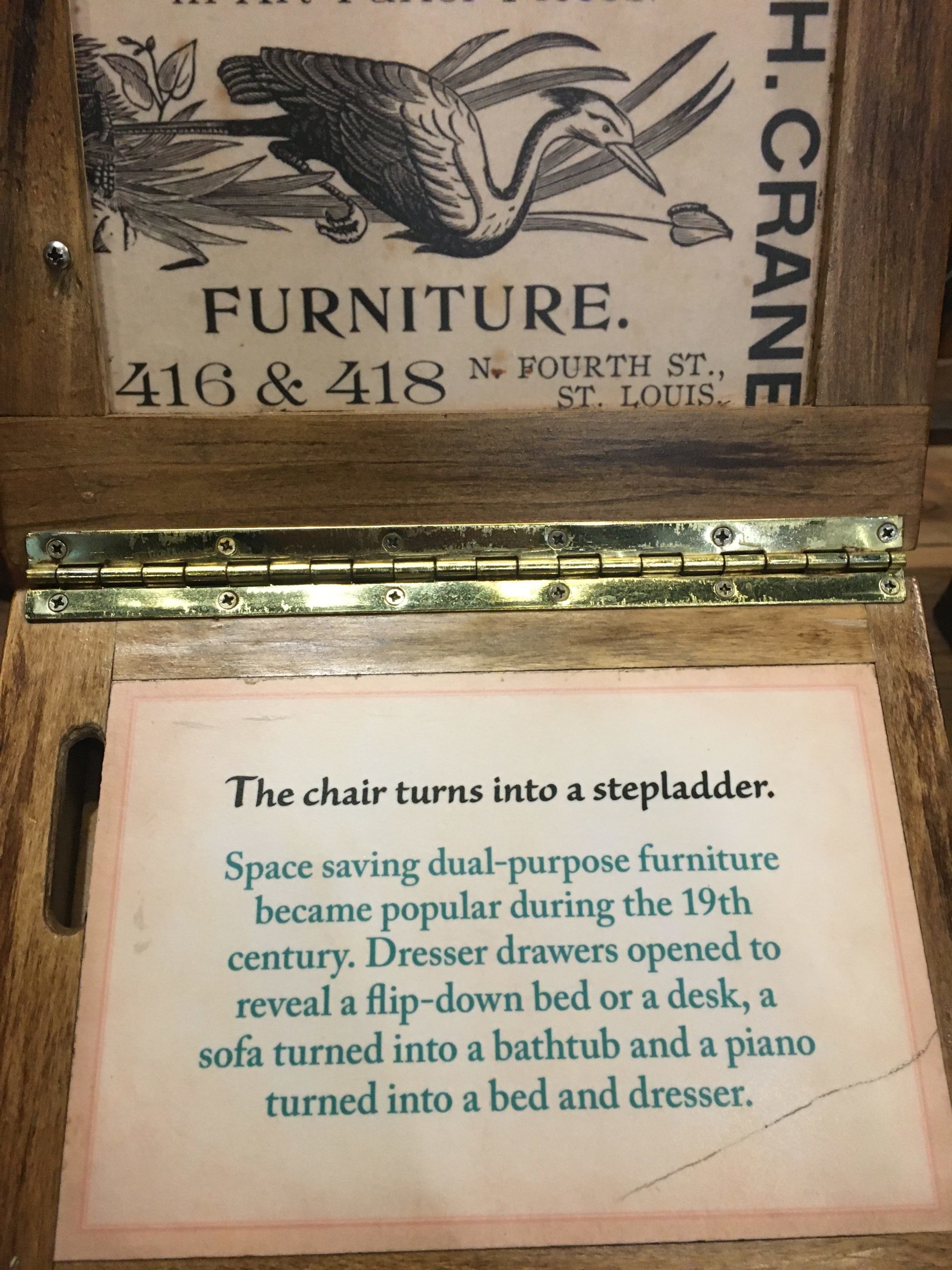
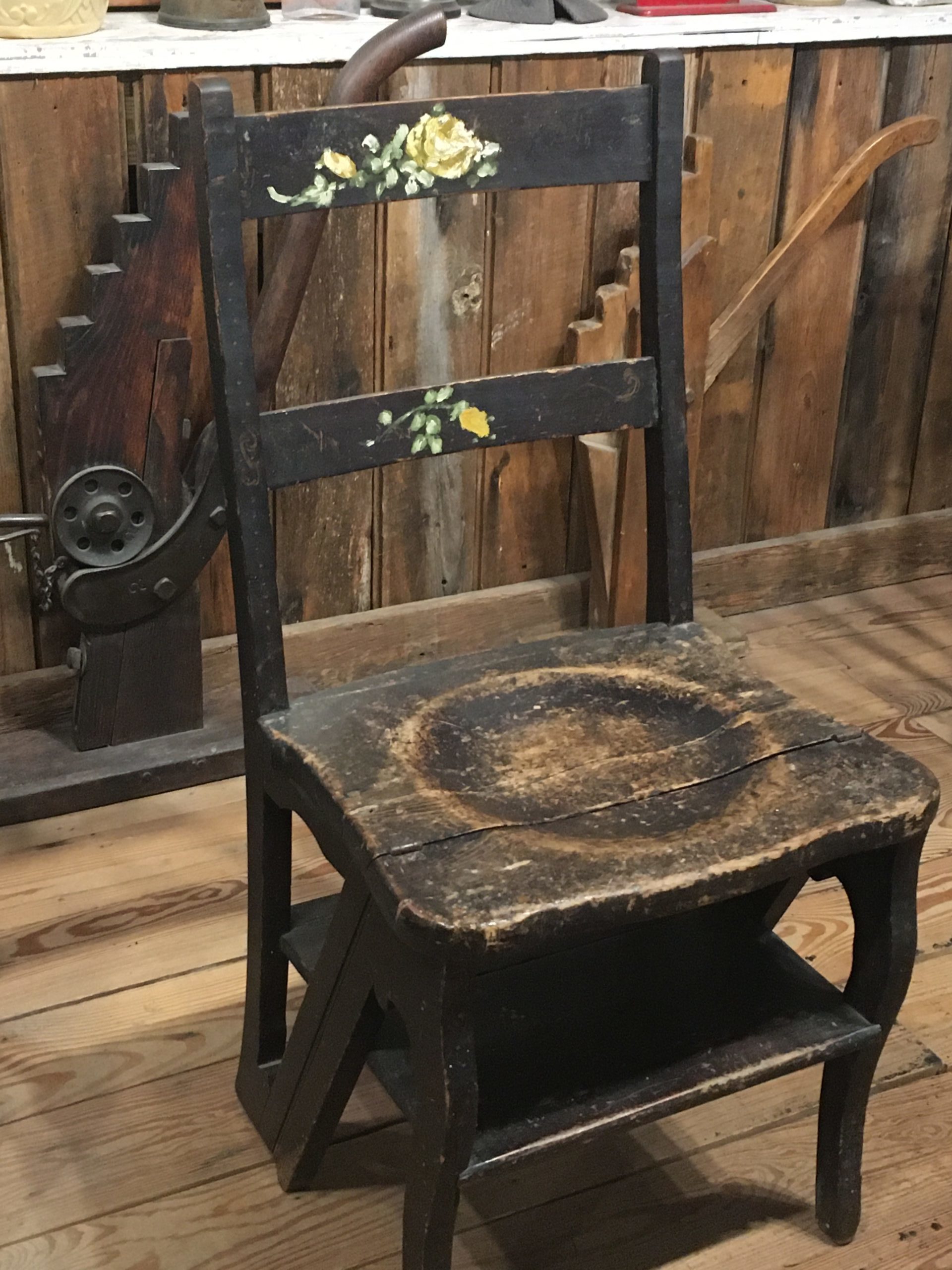
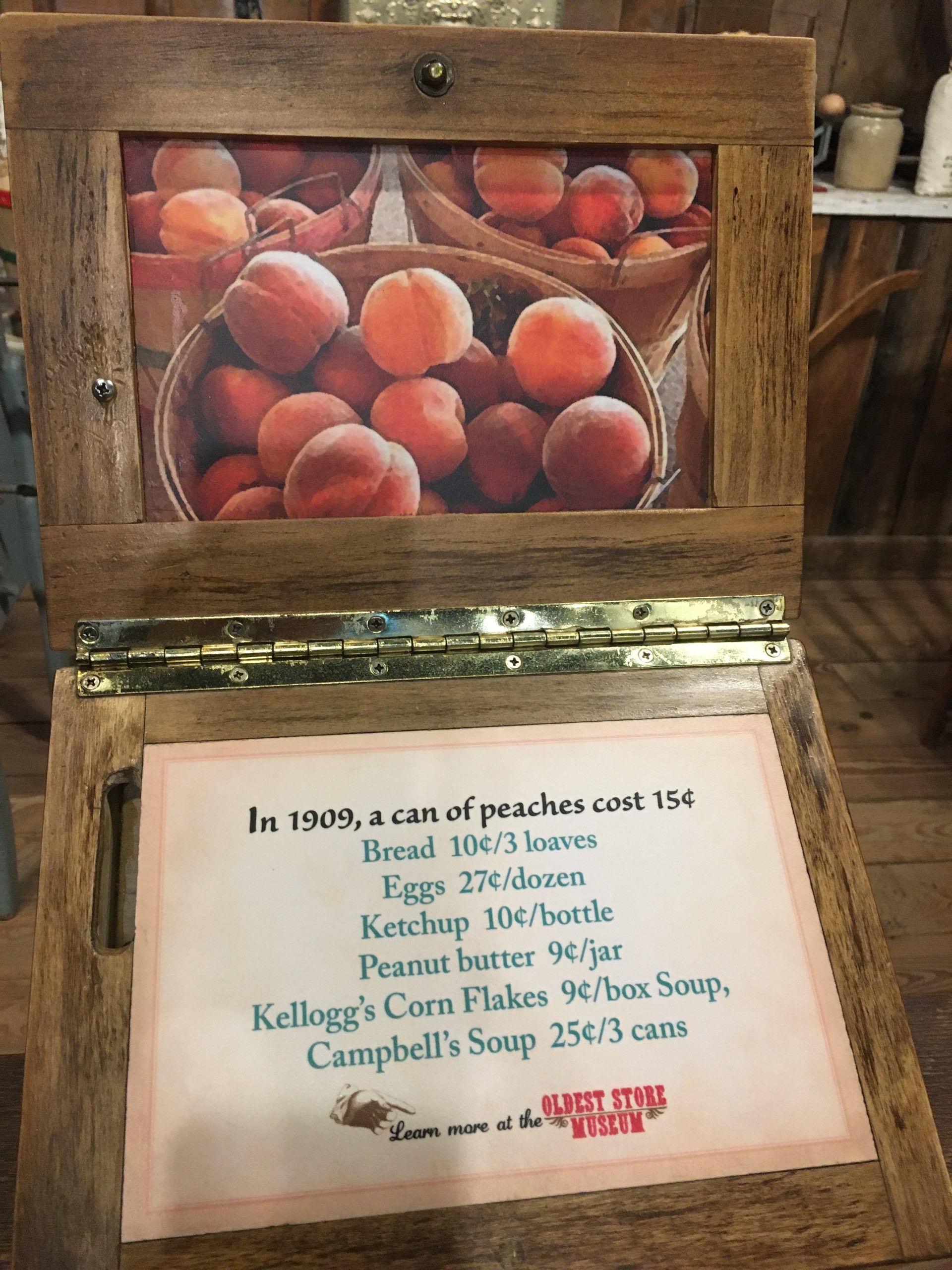
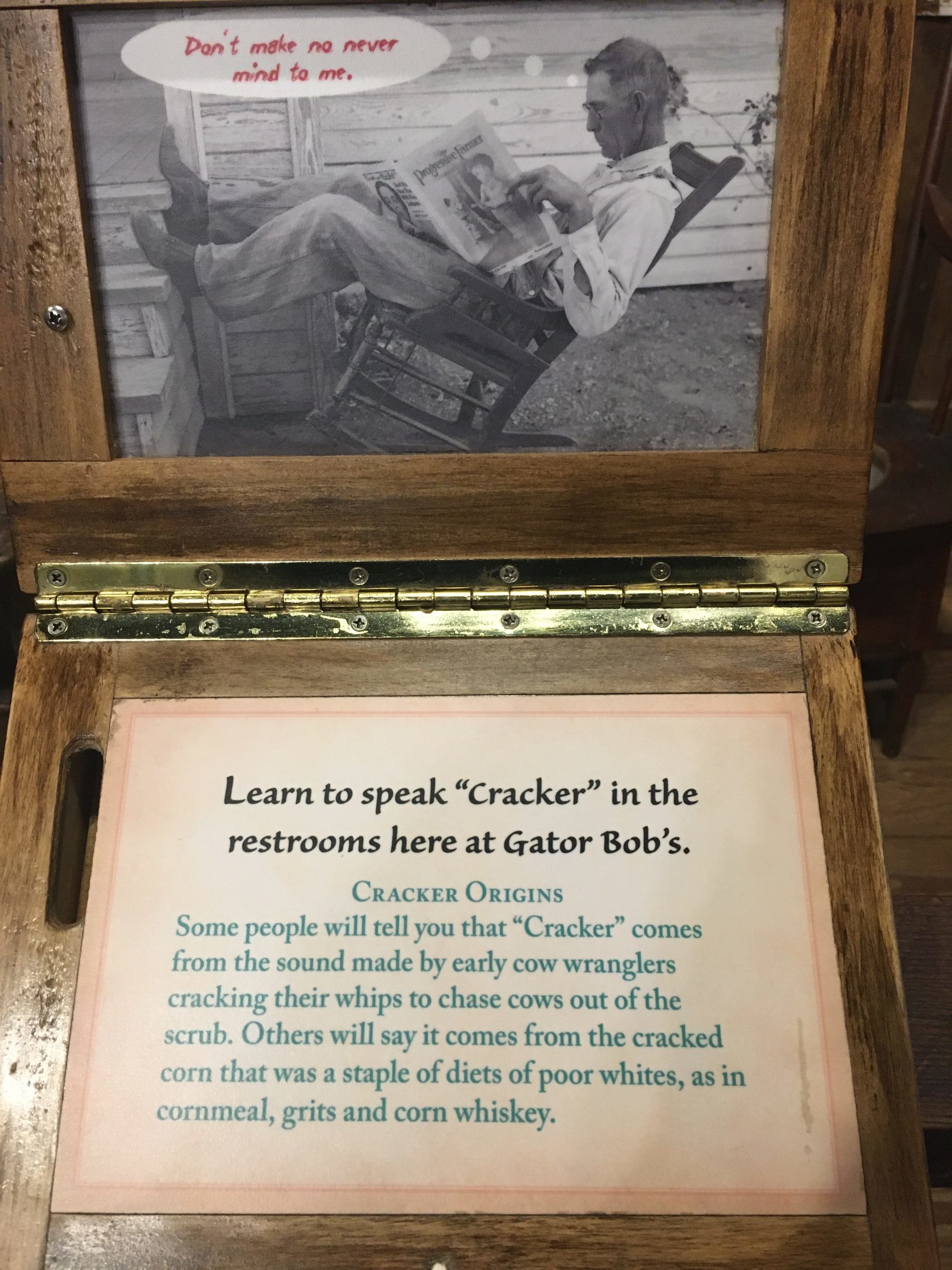
Things like, “fixin”. “Getting ready to do something.”
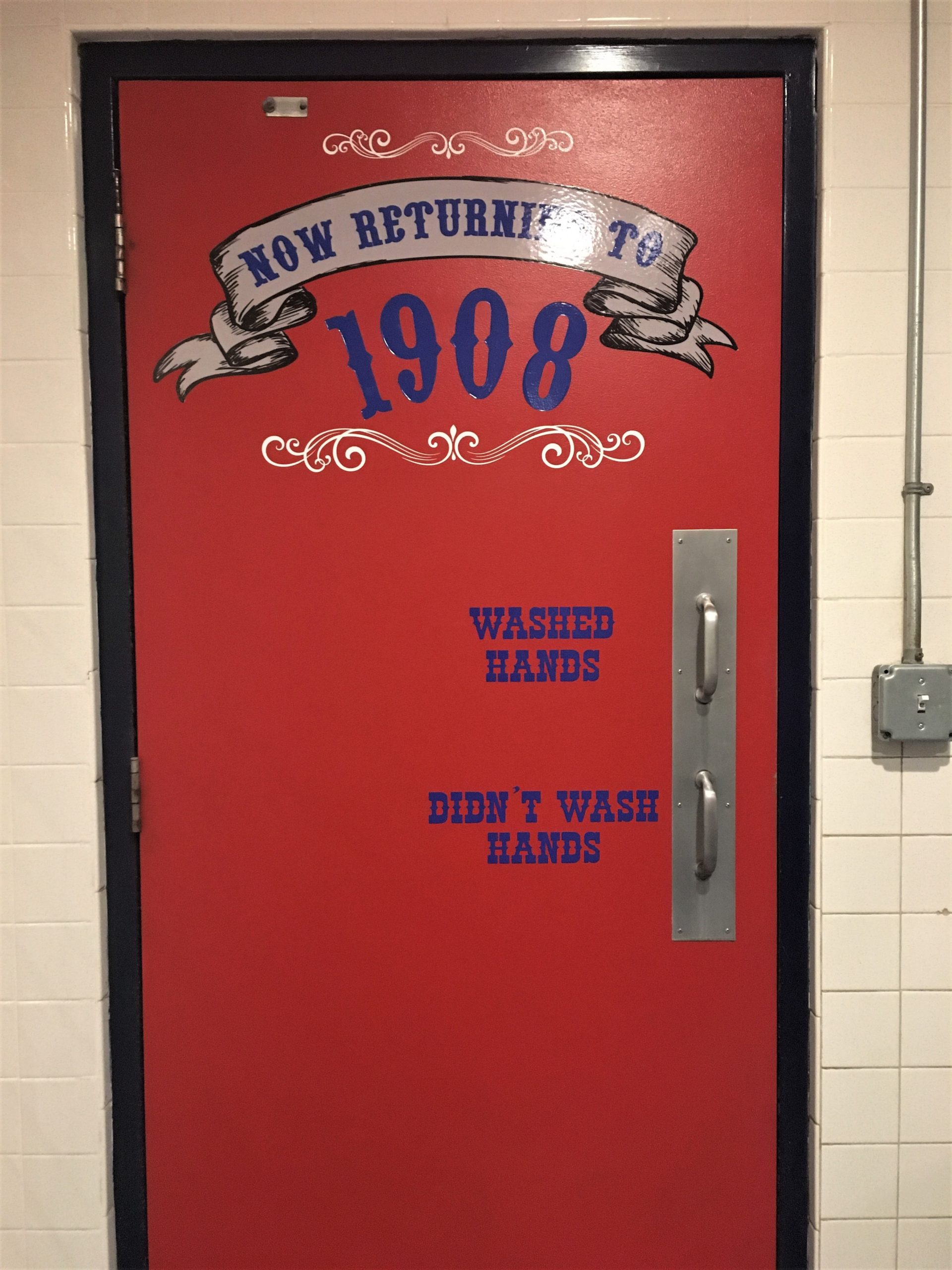
So funny, even Blaine took a picture of his door too!
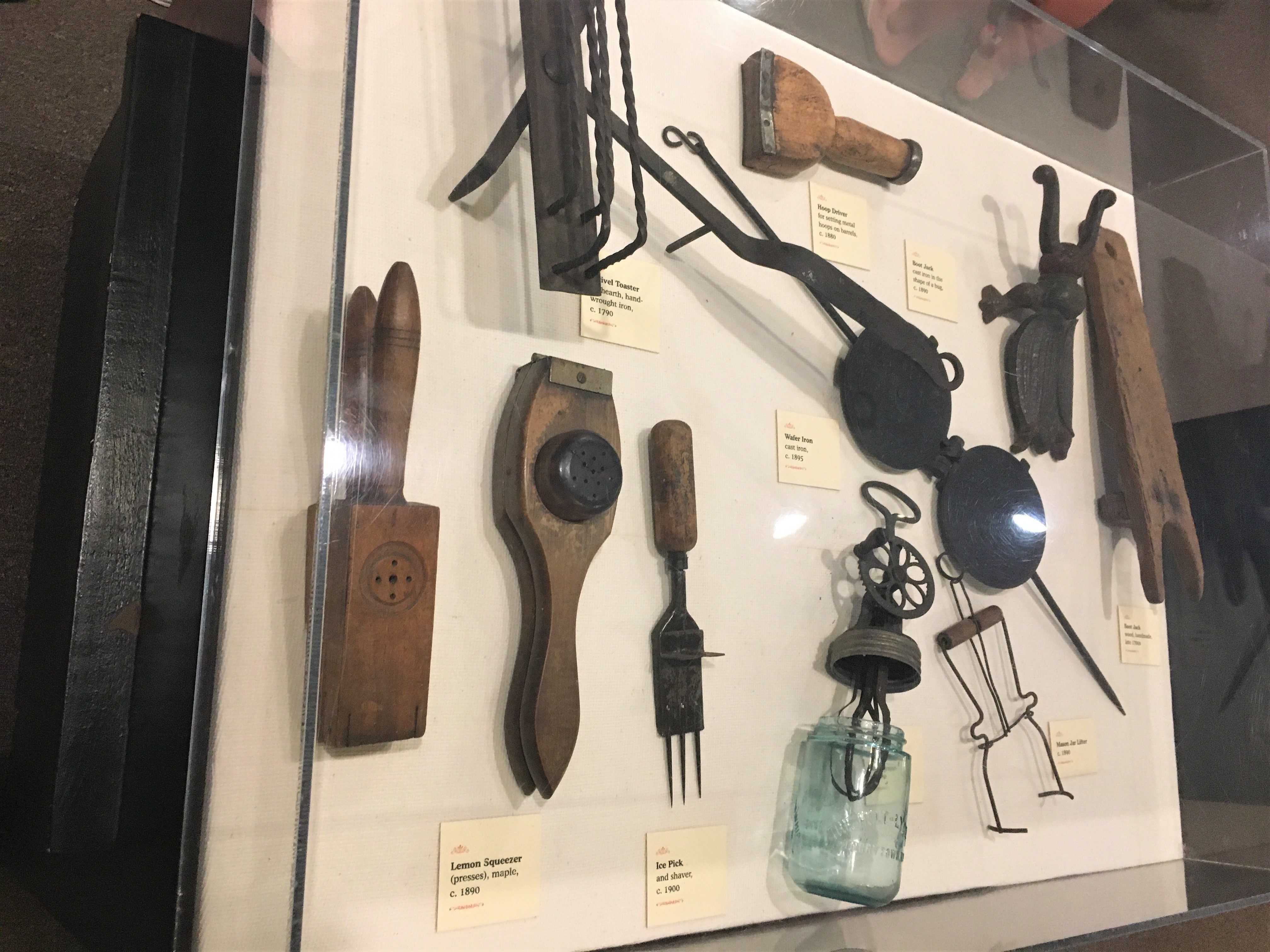
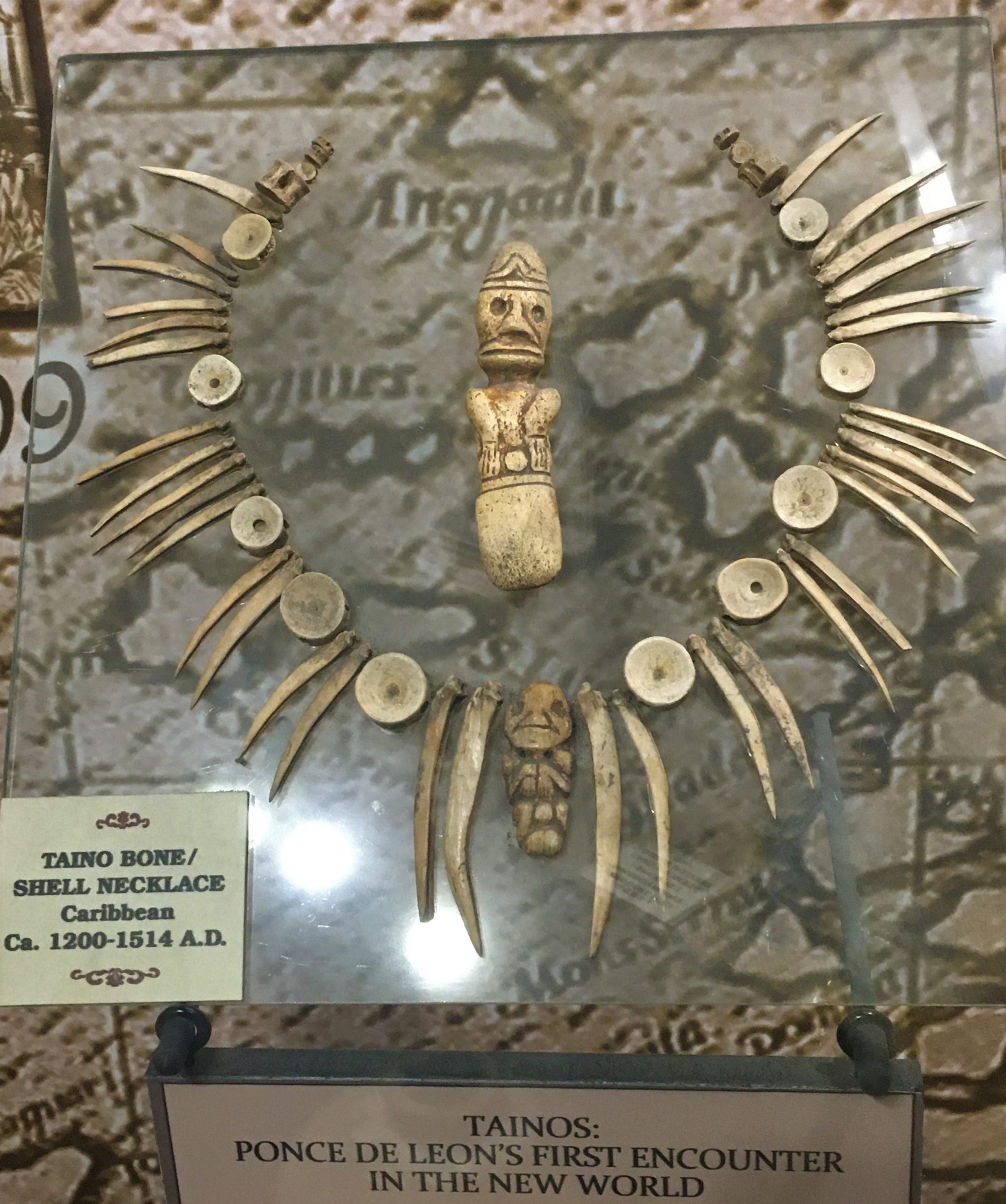

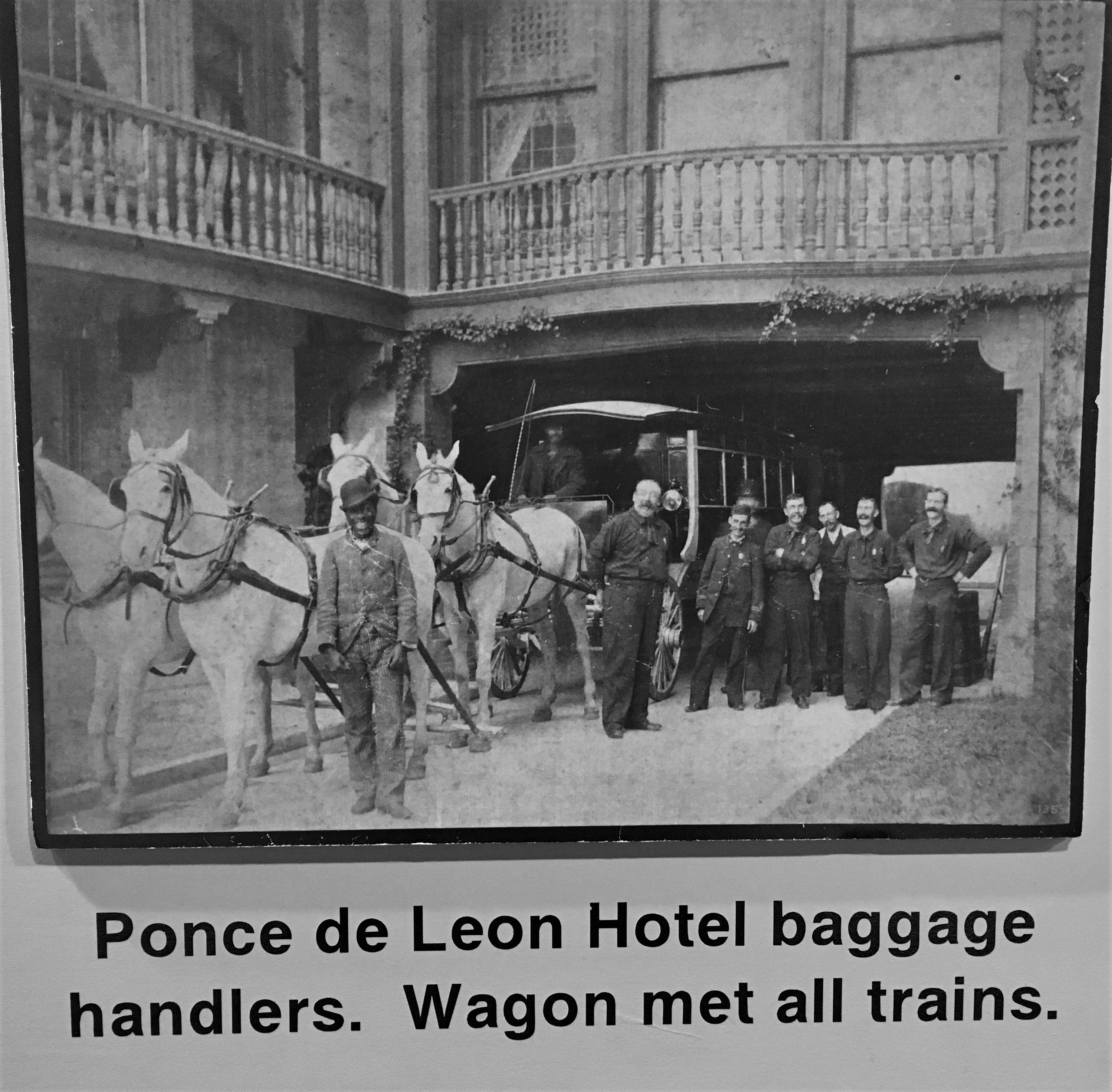
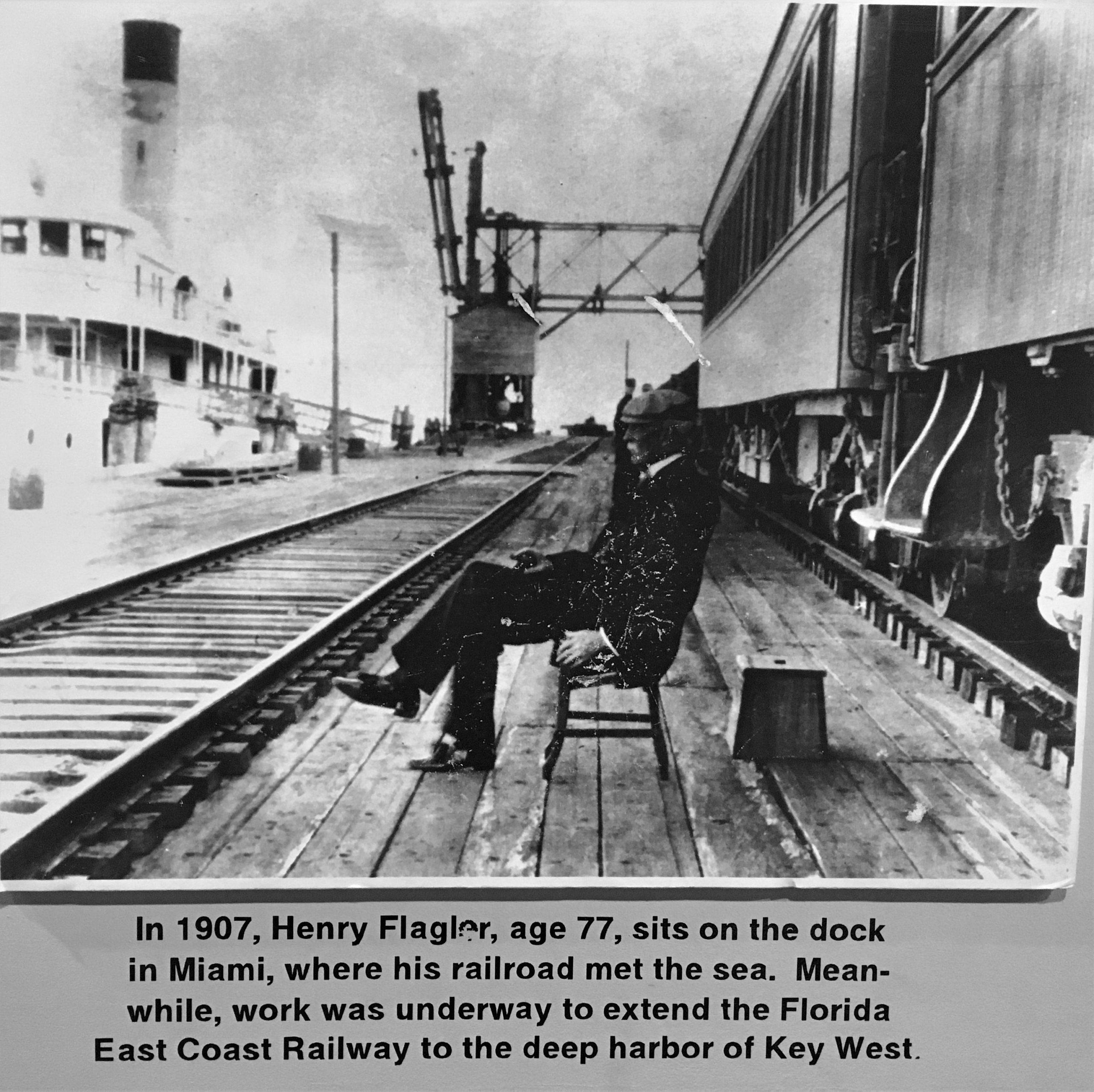

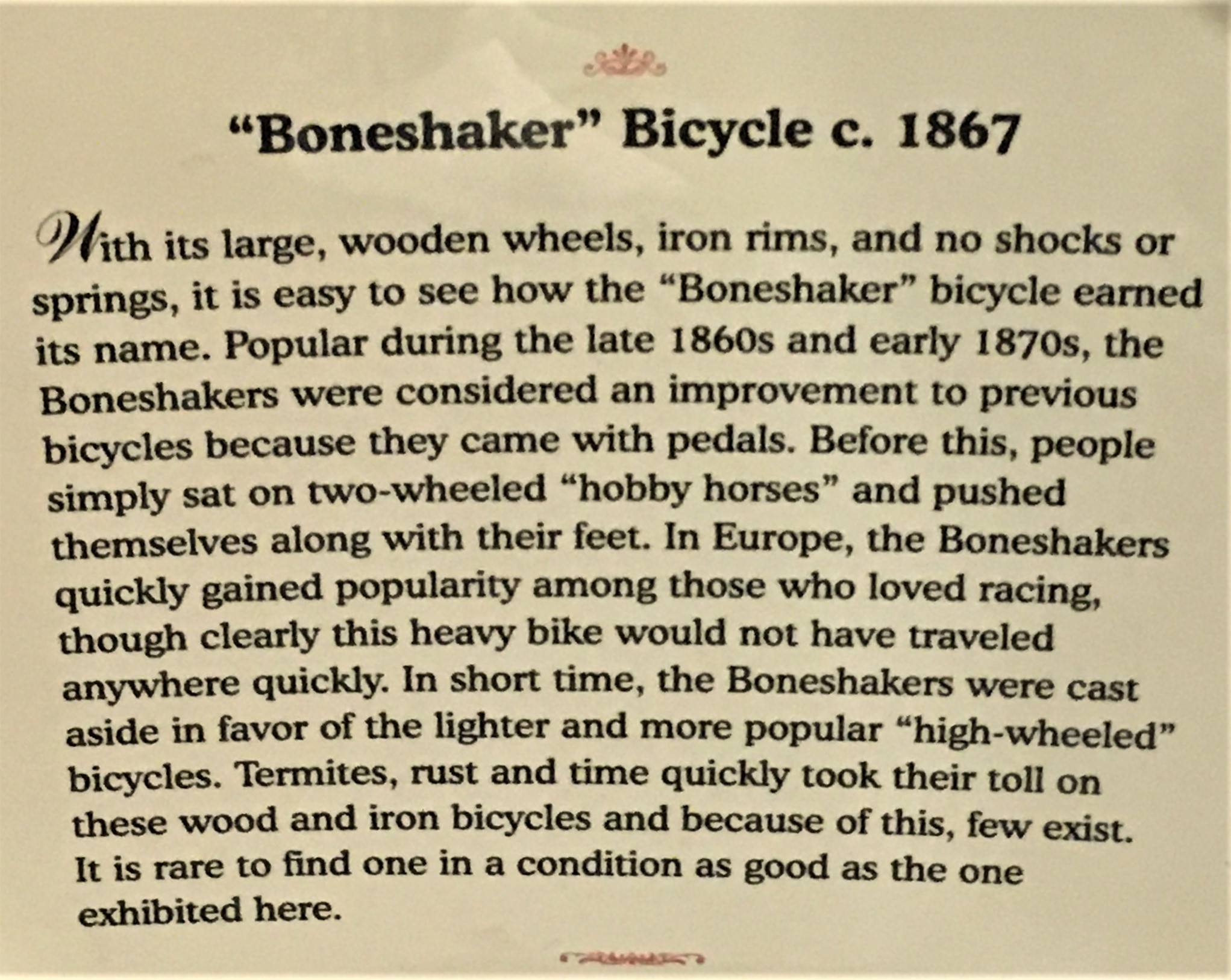
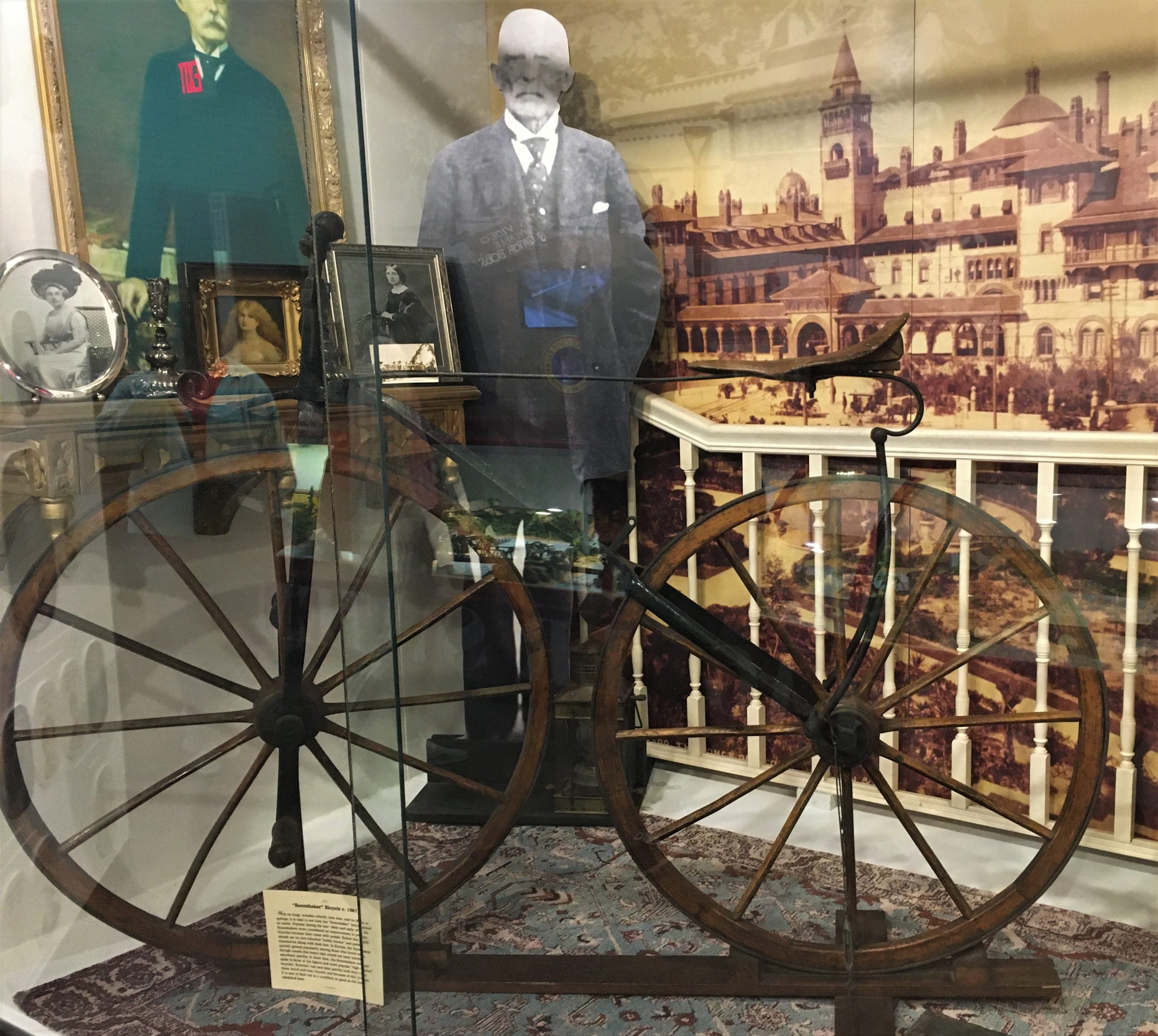
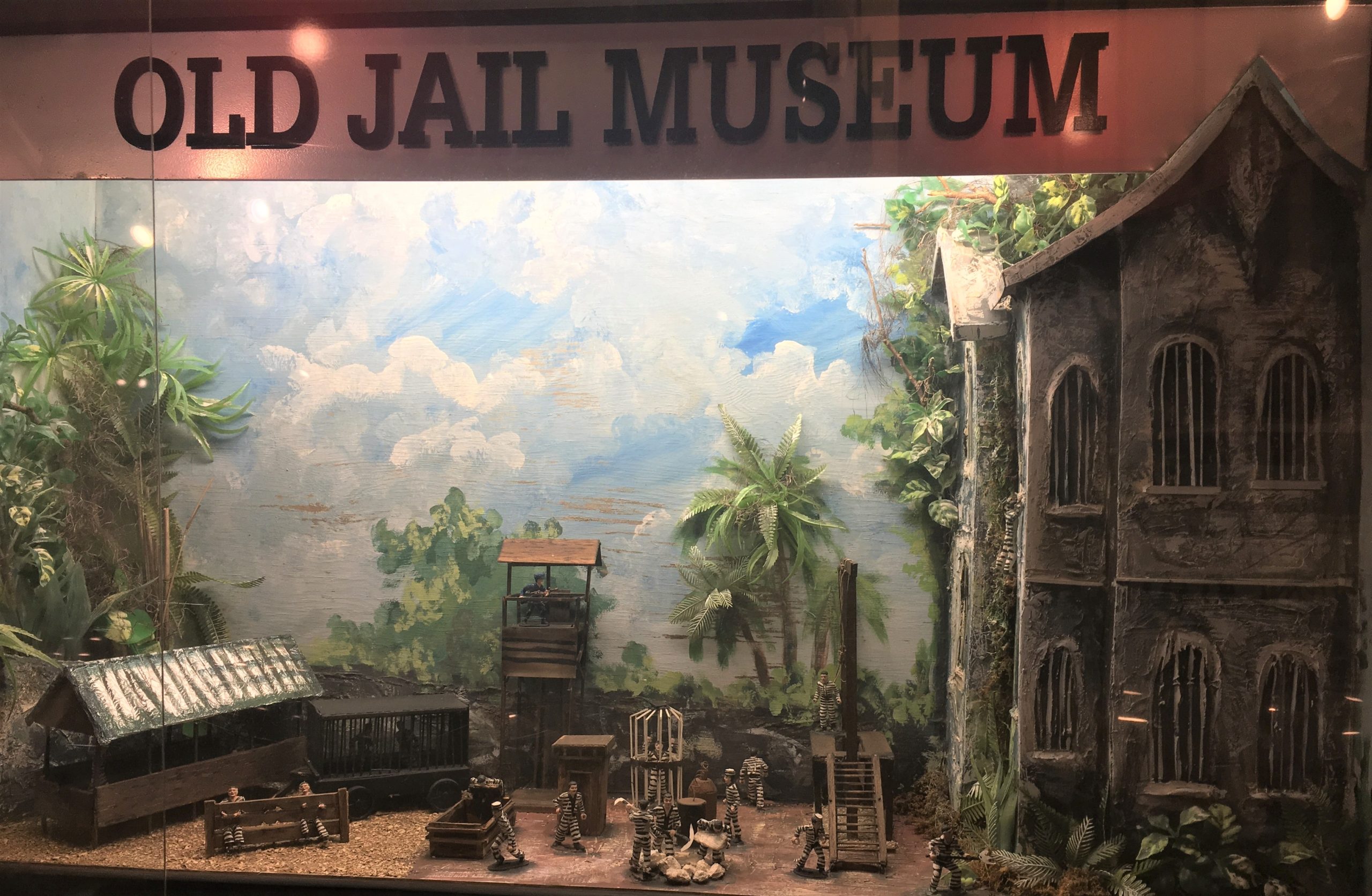
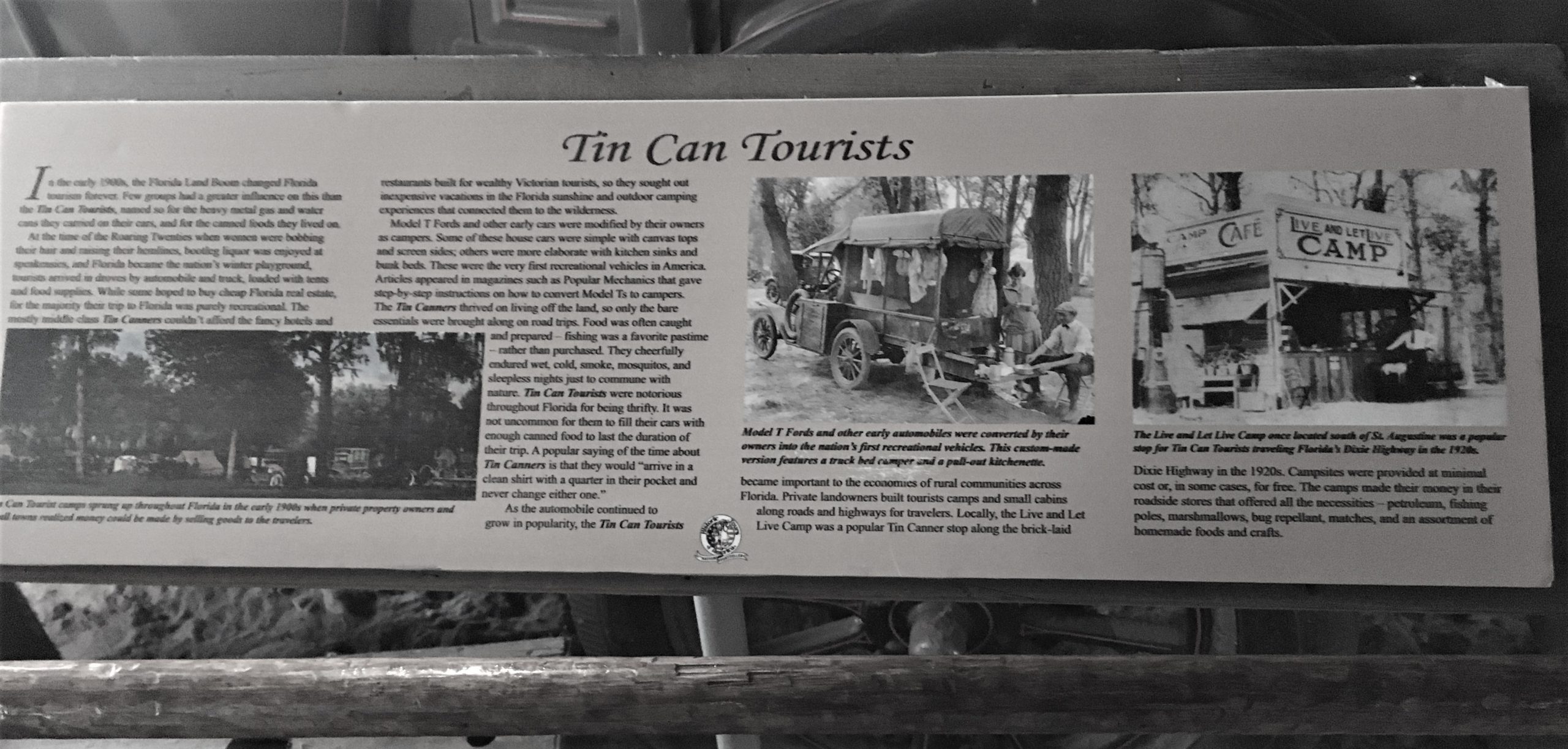
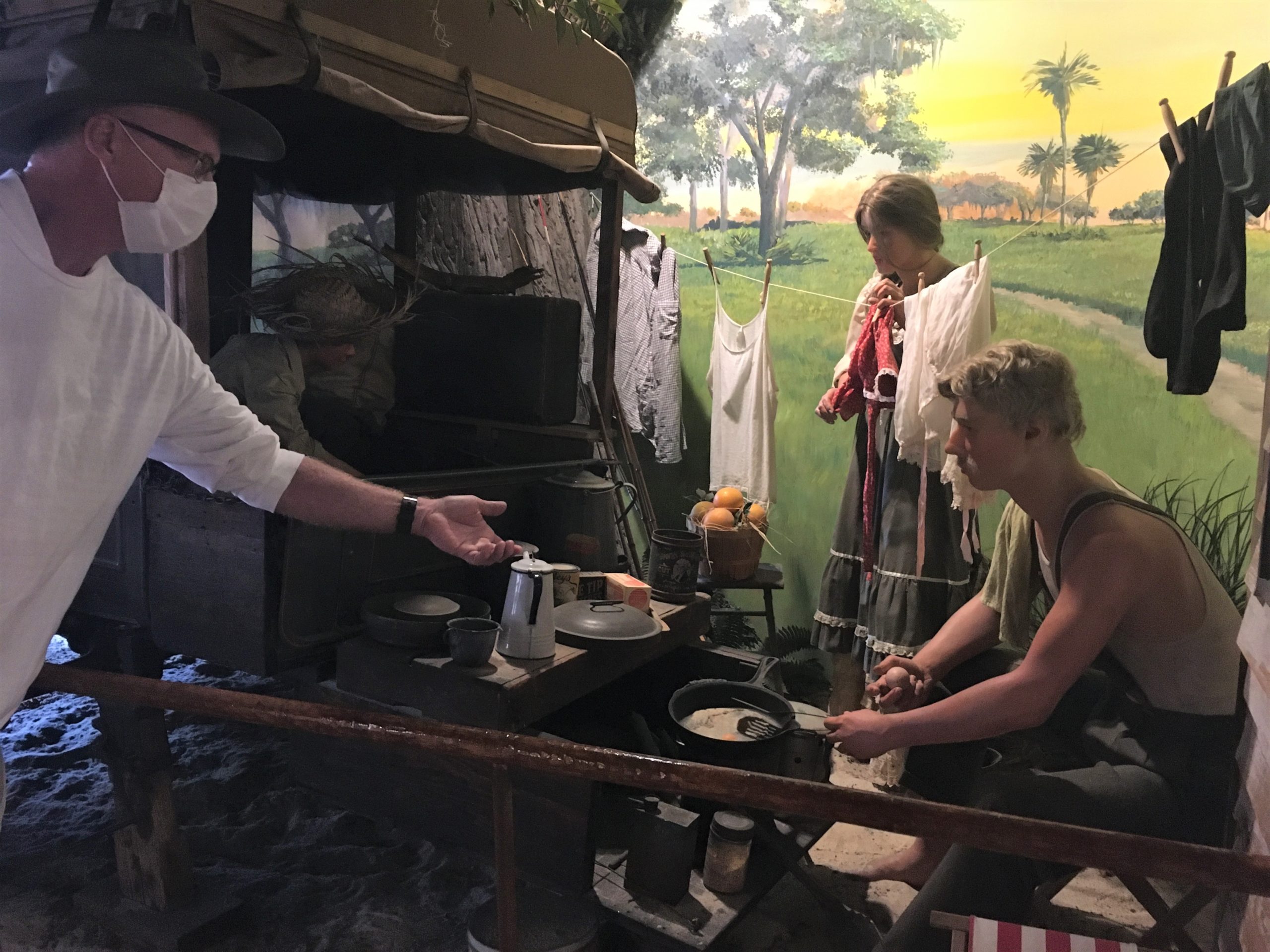
Blaine’s looking for a handout, but I don’t think they’re sharing.
Lunch was across the street at Subway, then we hoped on an available trolley and toured the town for about an hour. They sure do some incredible driving! Cars and people everywhere and really narrow streets! And talking the entire time! I don’t know how they do it.
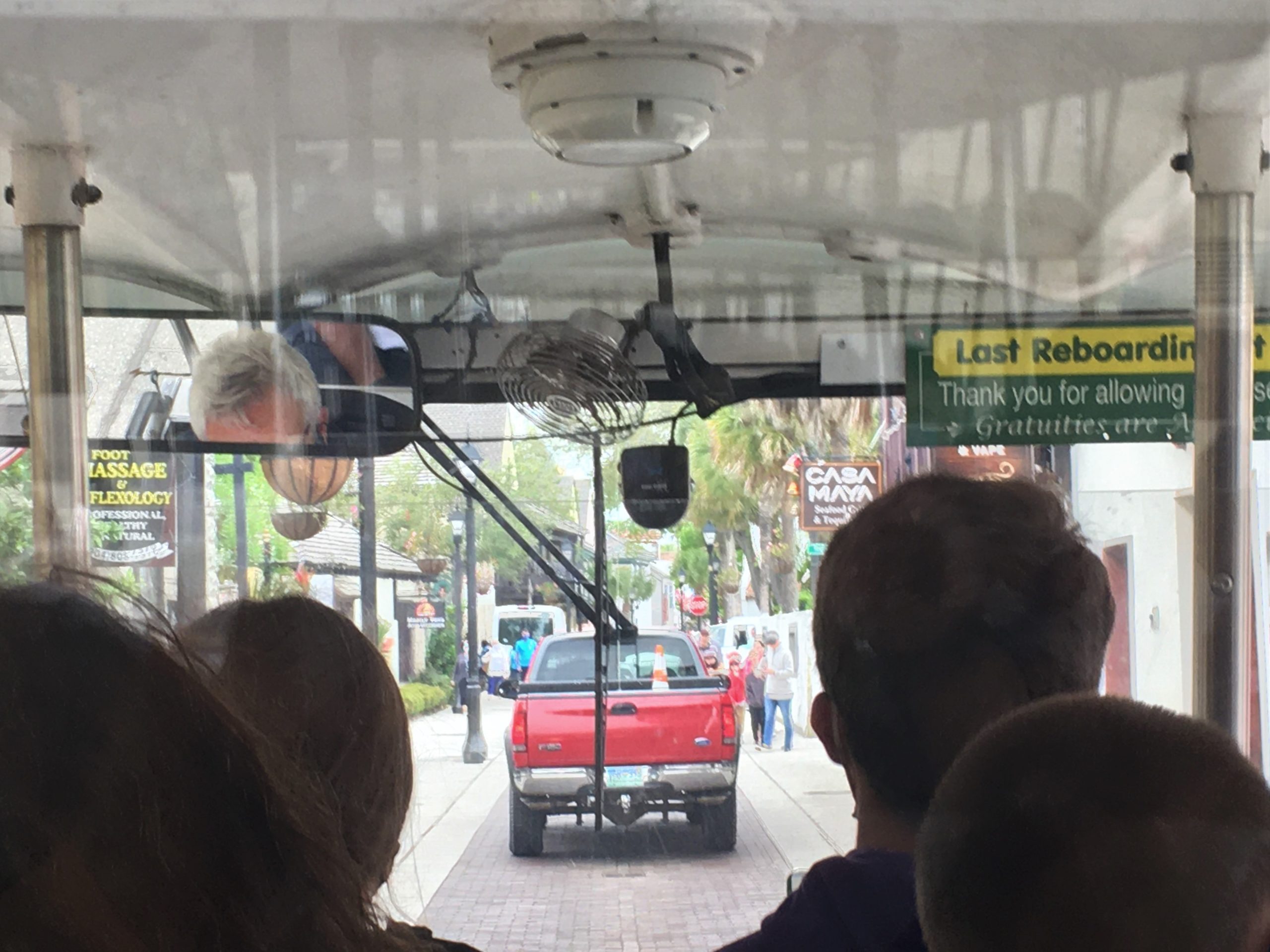
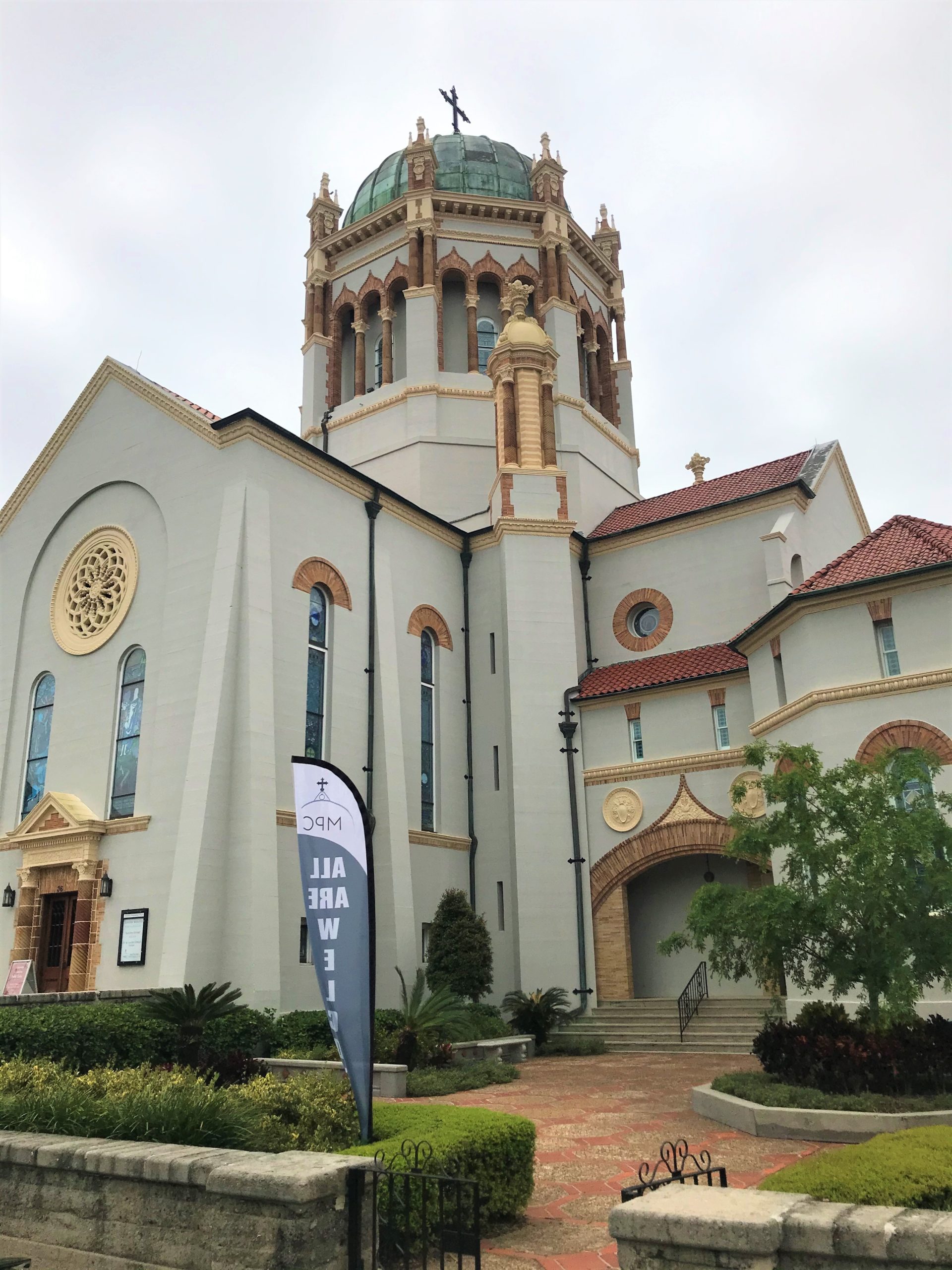
I don’t know what church this is, but isn’t it beautiful?
We exited near the Spanish Military Hospital, but when we arrived, we discovered that the tour wouldn’t start for about 20 minutes, so we walked around some, checking out the area.

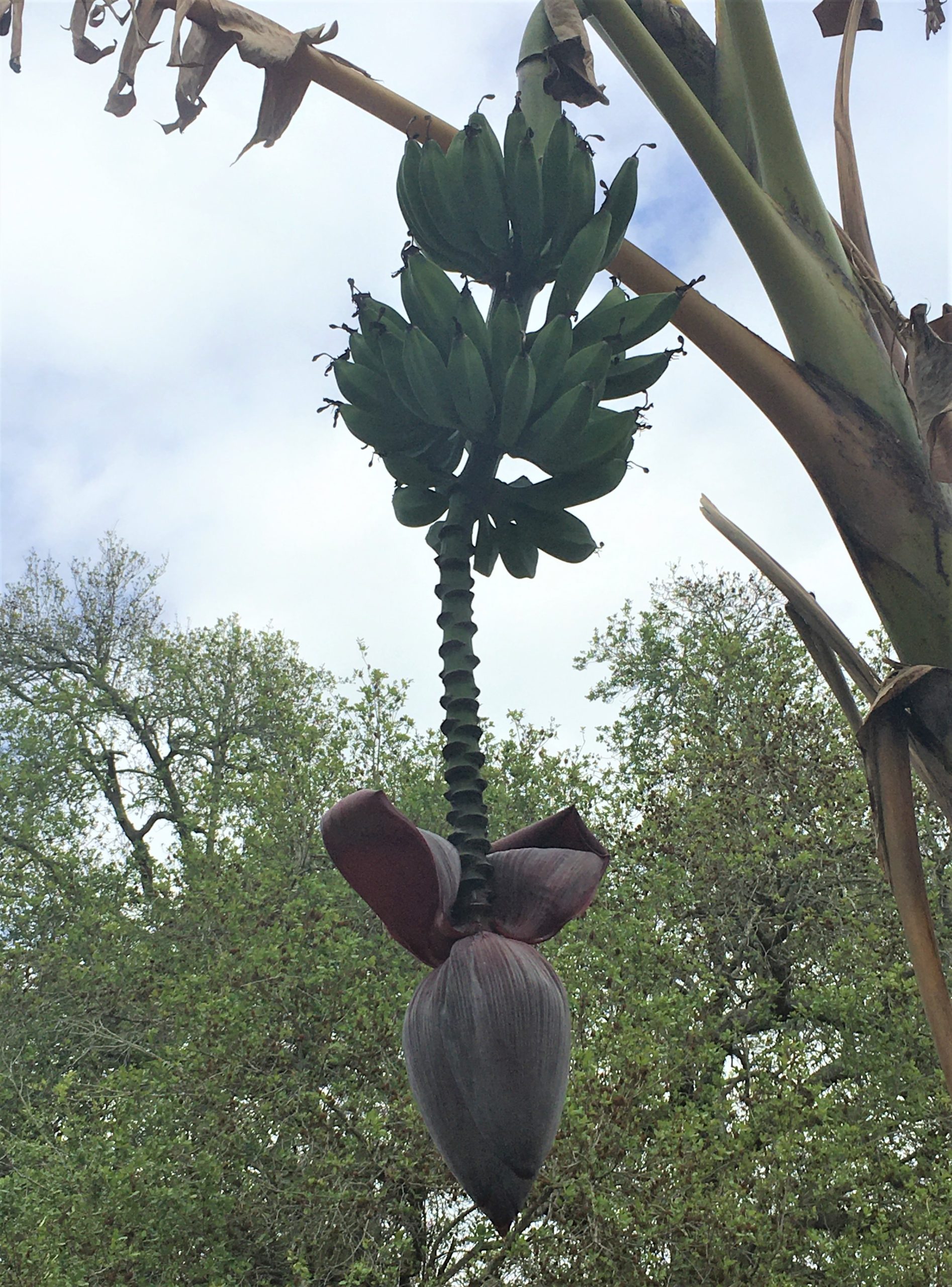
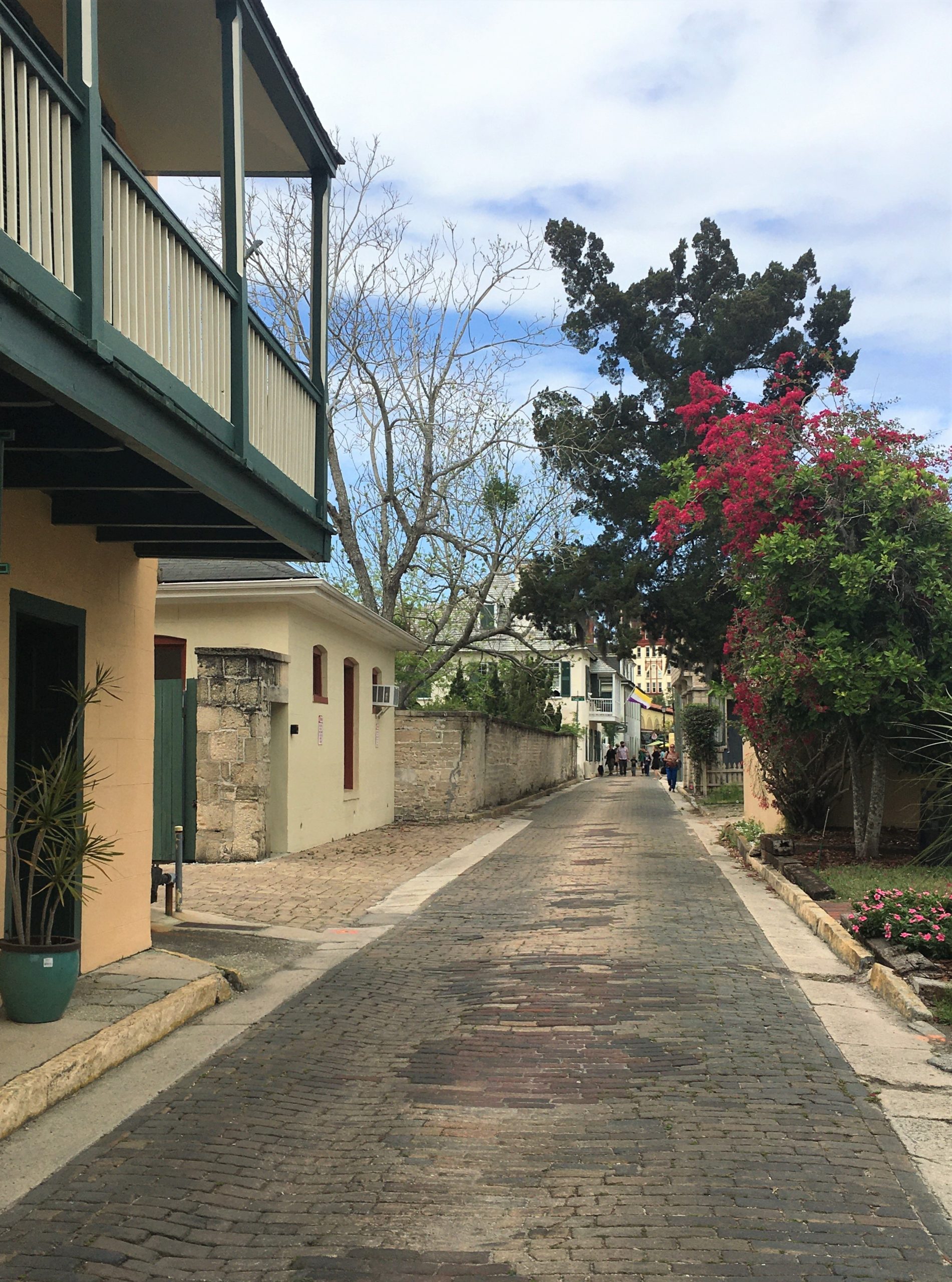
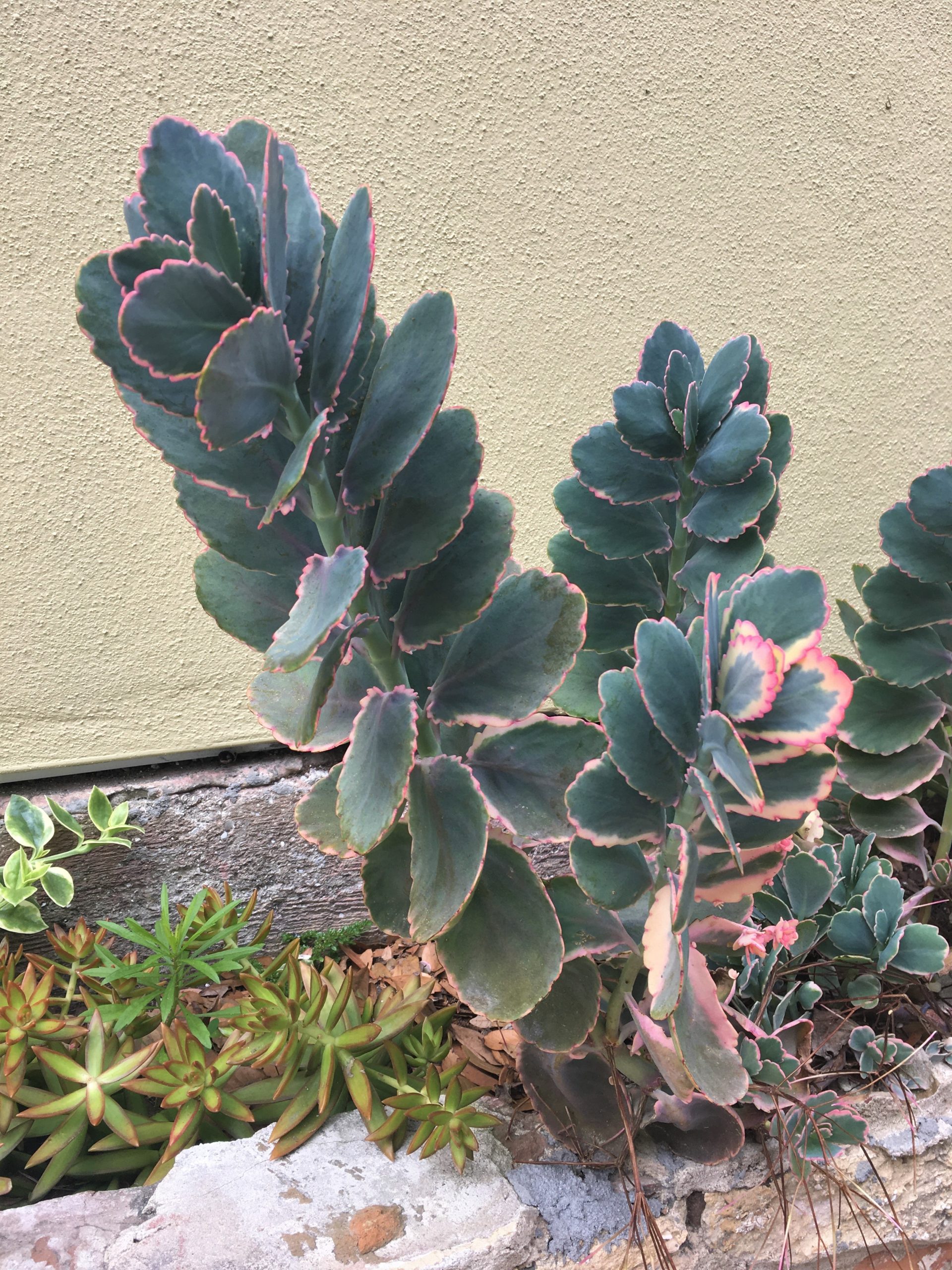
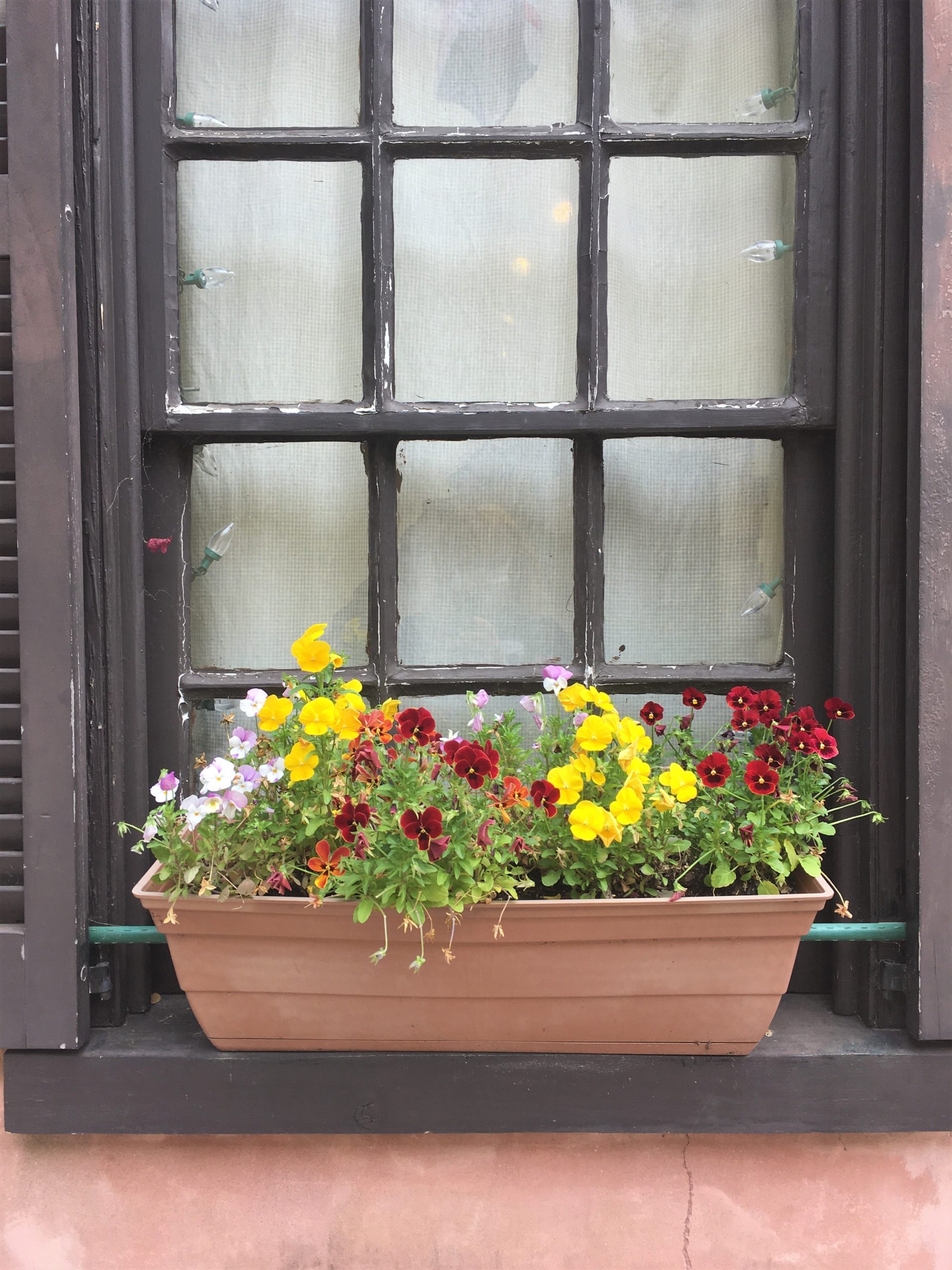
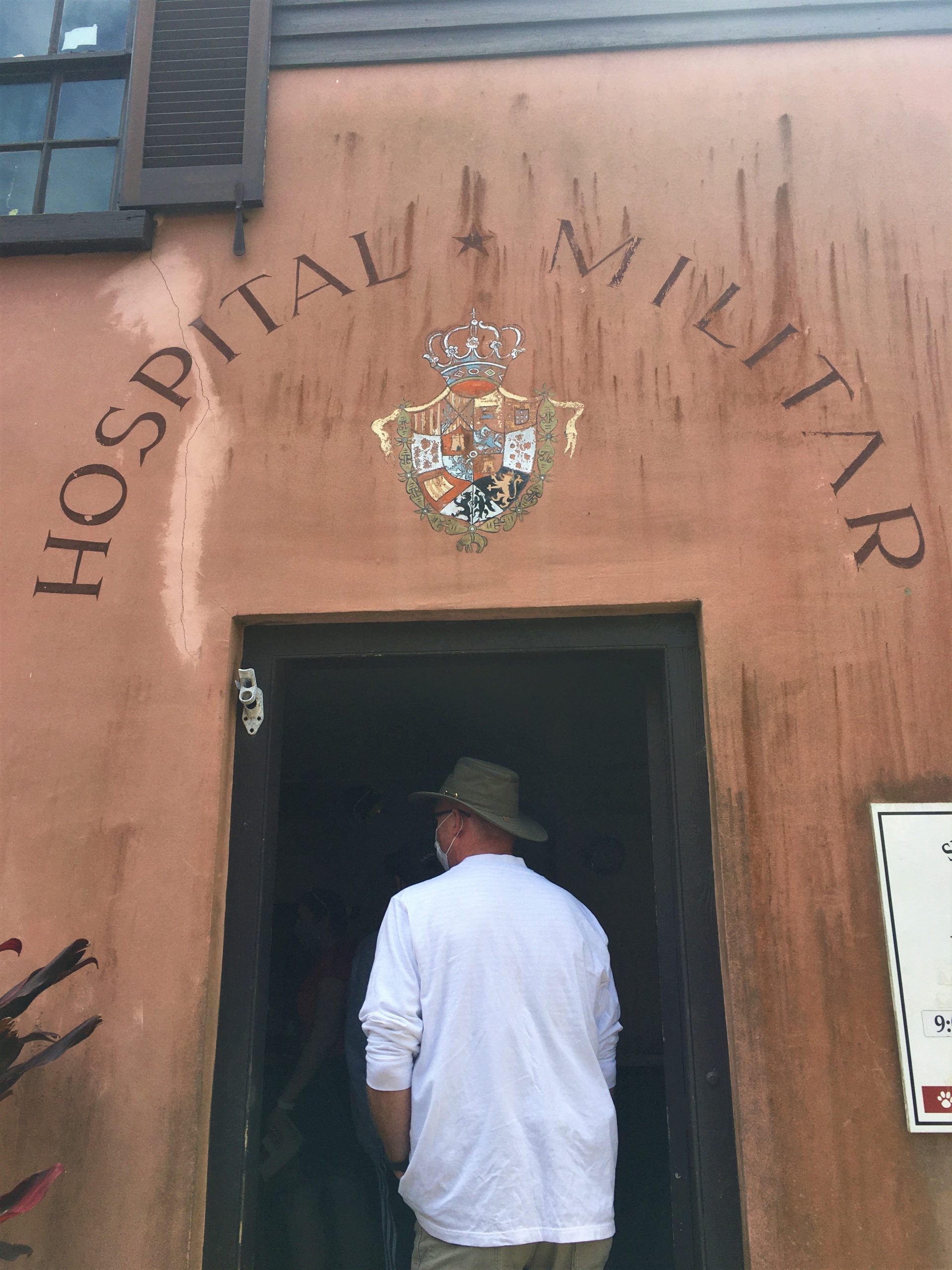
This guided tour was also excellent. We didn’t catch the name of the woman giving the tour (truthfully, we probably only remember Jack’s because he mentioned it so many times 😊), but she did a great job of explaining the surgeries and conditions at the hospital. Because it’s a Spanish Military hospital, the setting is 1791, before the Spanish ceded Florida to America in 1821.
Mostly the tour was our guide explaining and “demonstrating” how surgeries were preformed, and then taking us into the next room to talk about herbal medicine.
One of the most notable things about this hospital at this time, was the fact that it was so clean. Much more so than the English or American hospitals, in fact, the survival rate here was about 70% verses 35%. All the mattresses were stuffed with Spanish Moss, which was common at the time, but also included chiggers and other bugs. The hospital, combed and sanitized their Moss before stuffing the mattresses, and changed the stuffing after every patient. For bedridden patients, they cut a hole in the mattress and bed, and placed a bedpan underneath so the bedding (and patient) stayed sanitary. And they washed and wiped everything, and took very detailed notes. And they preferred offering herbal remedies if possible, and avoided surgeries or amputations as much as they could.
The anesthesia most often used was Laudanum, a very disorienting hallucinogenic, which could also become addictive.

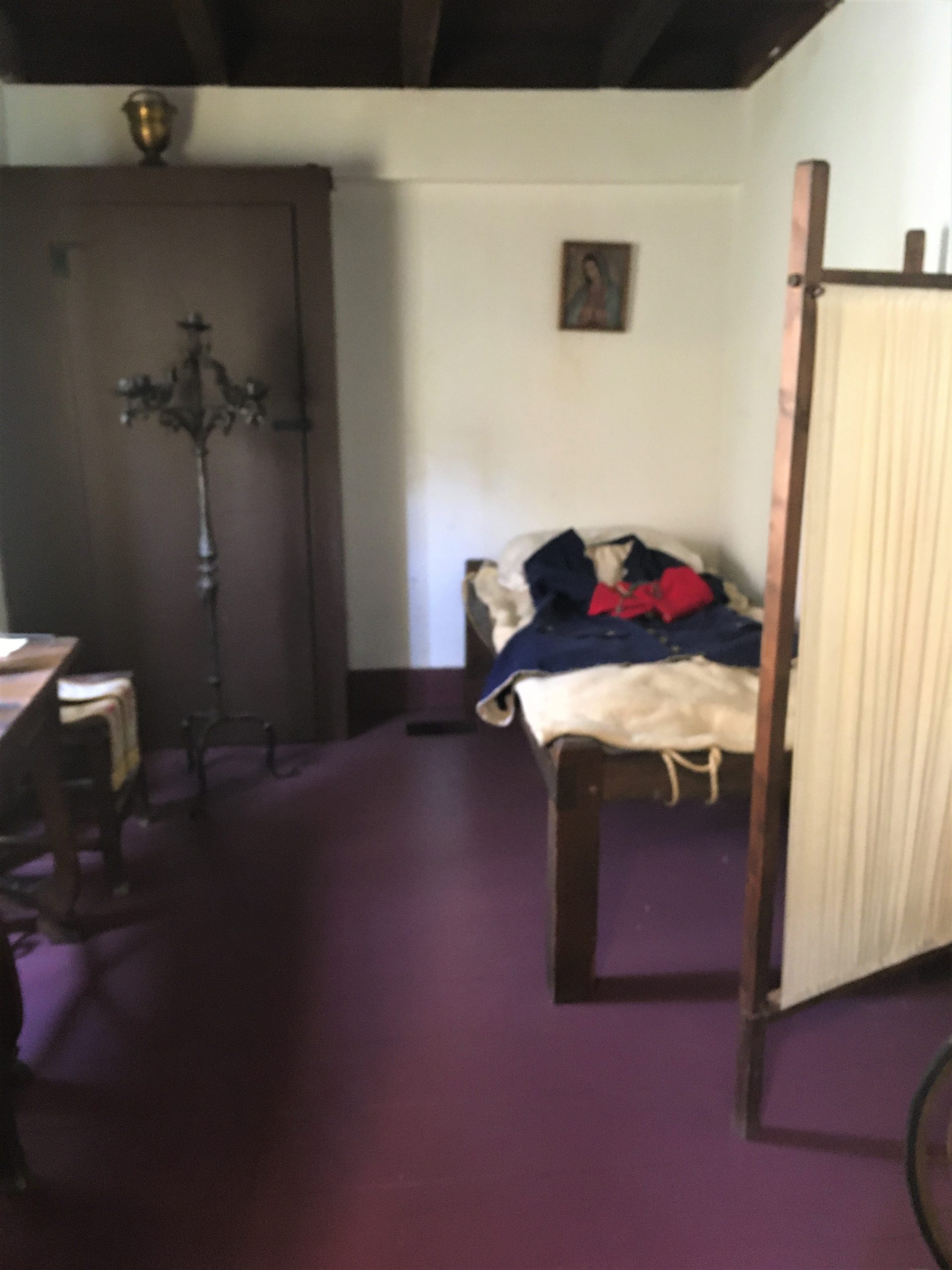
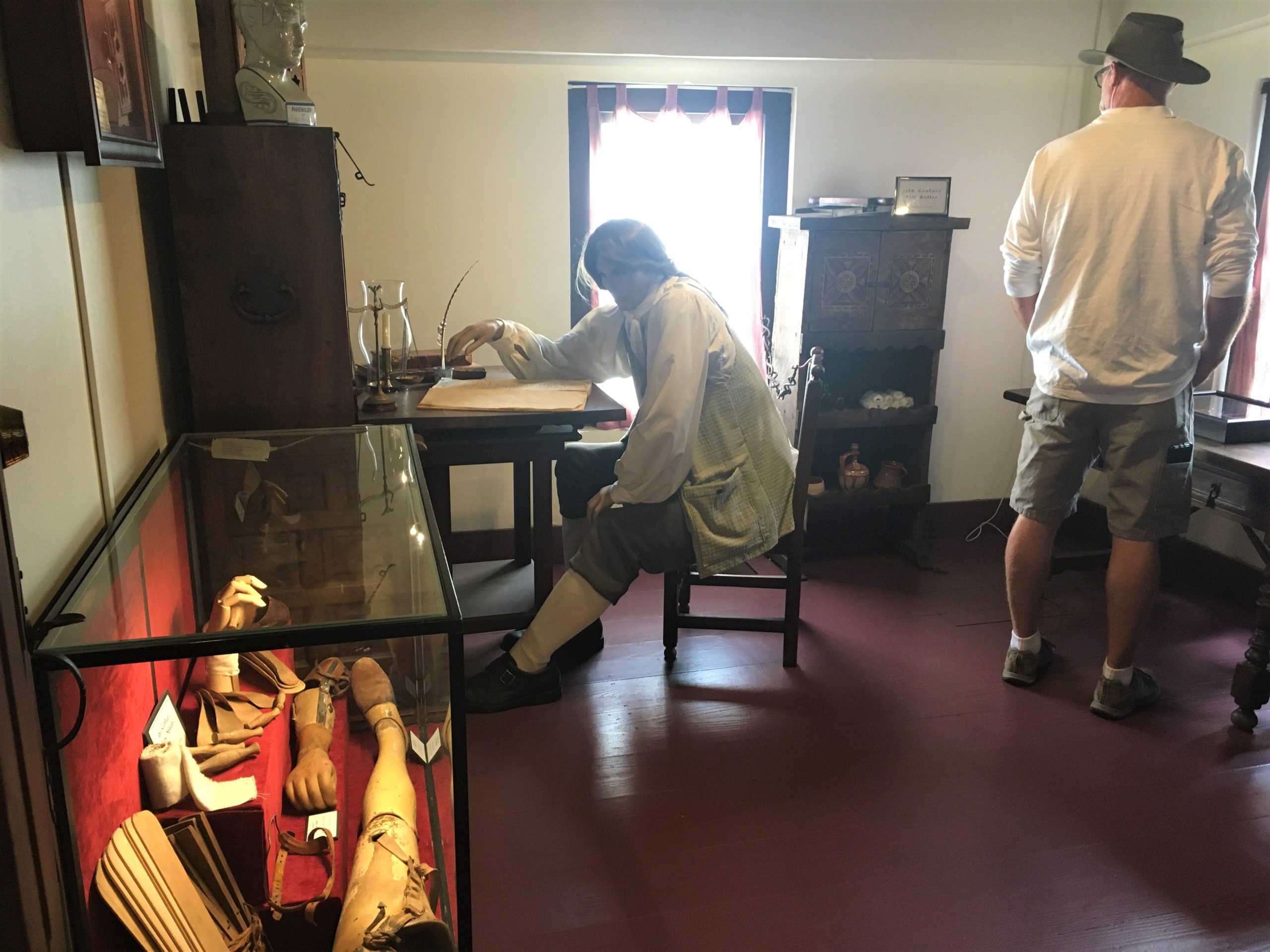
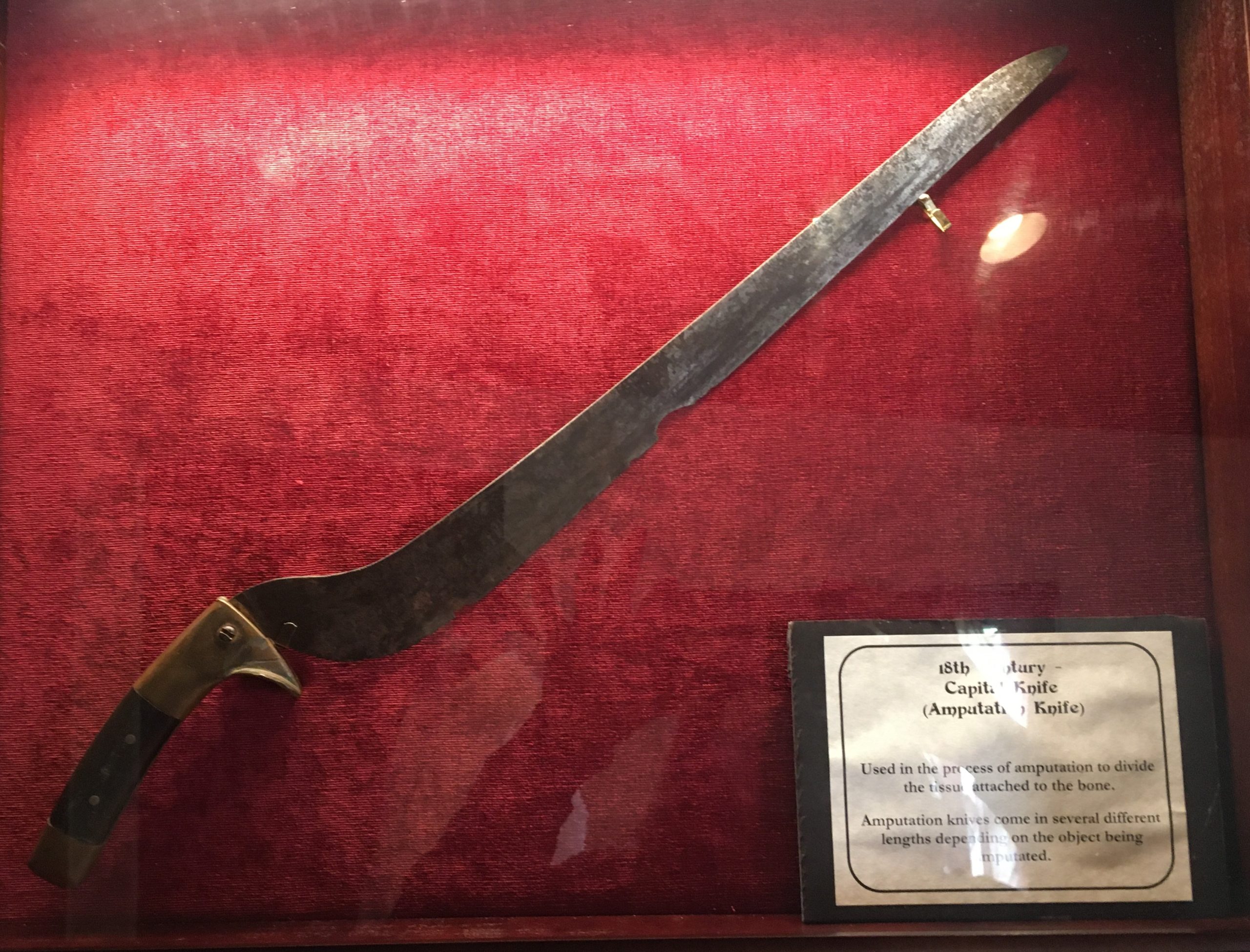
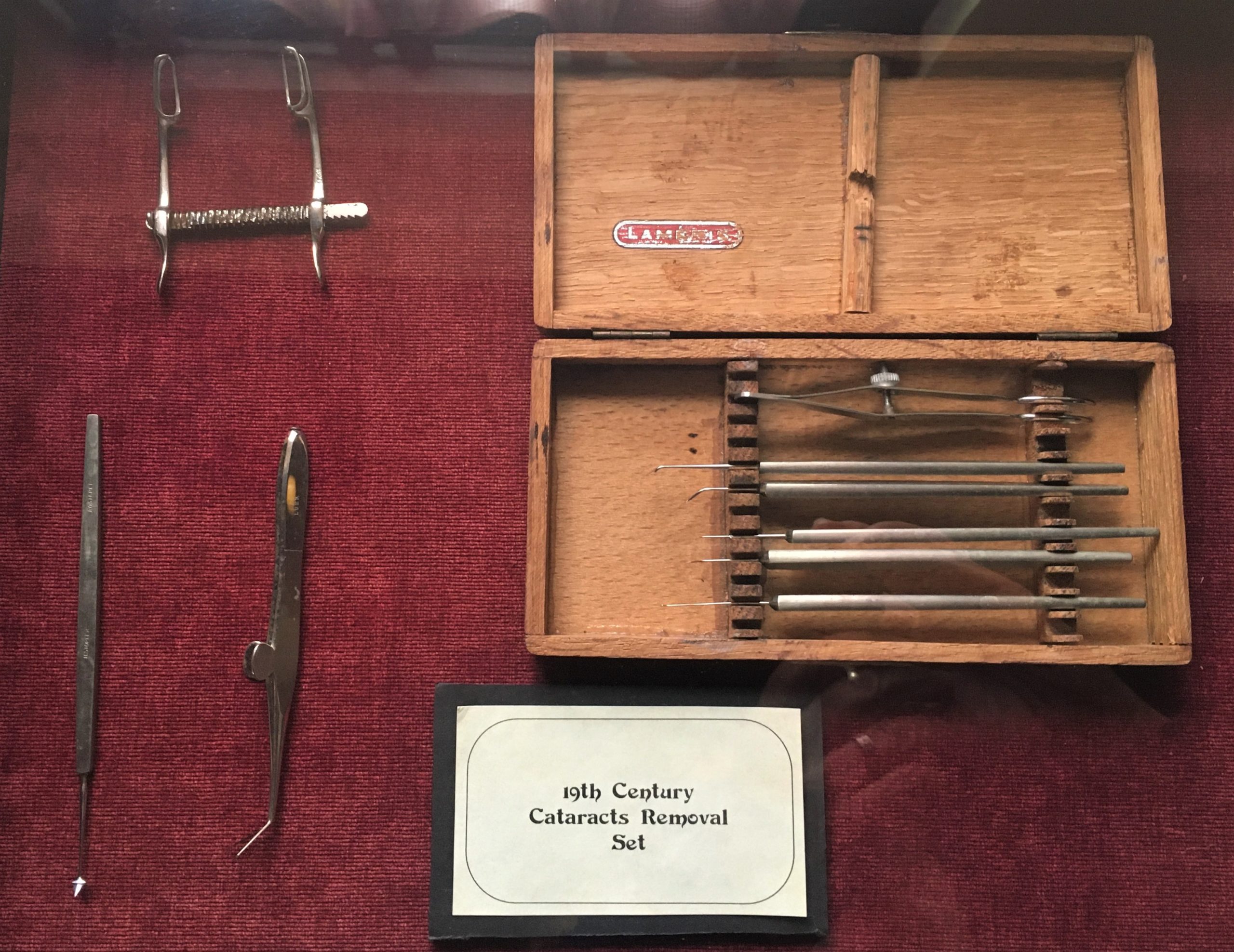
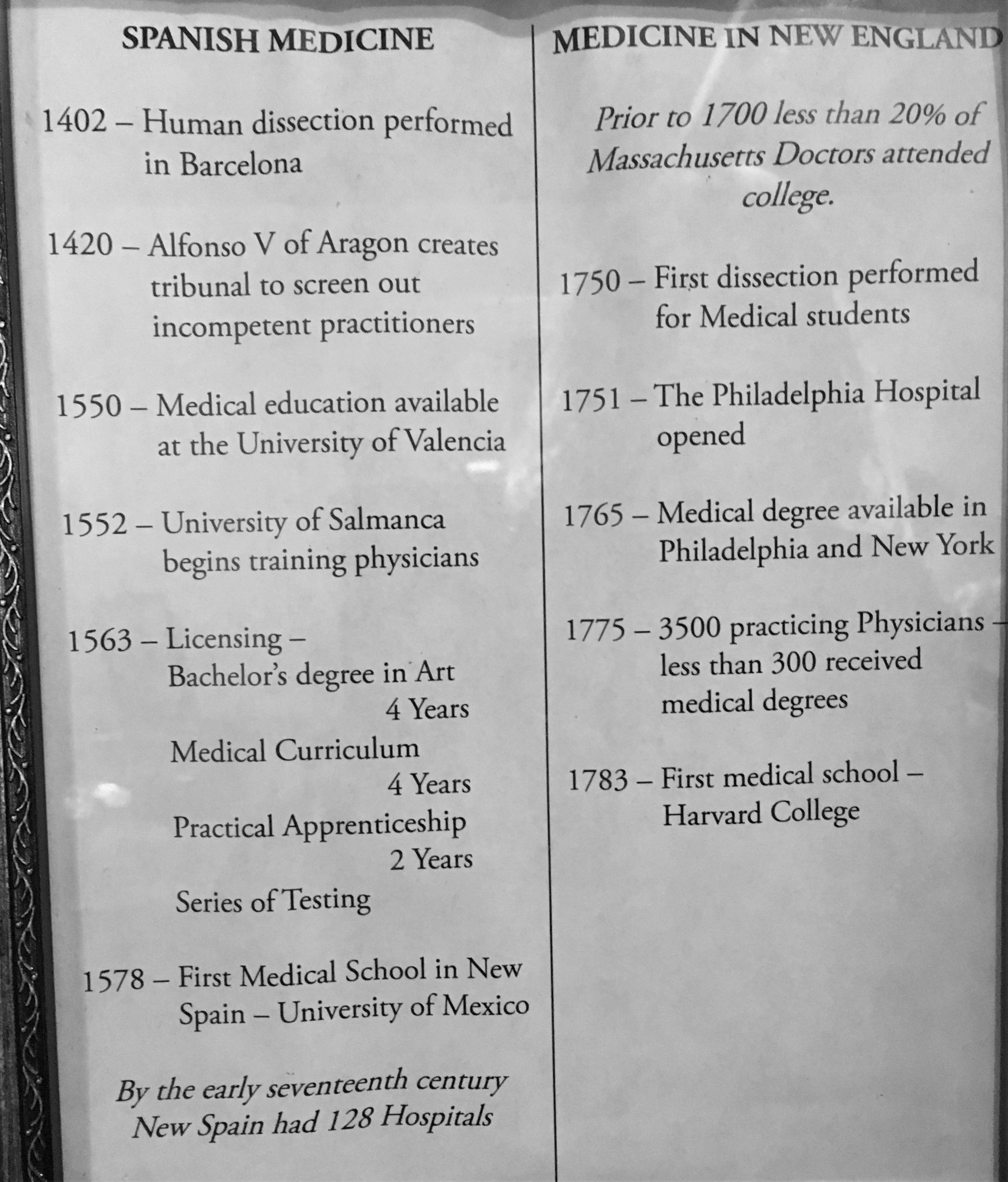

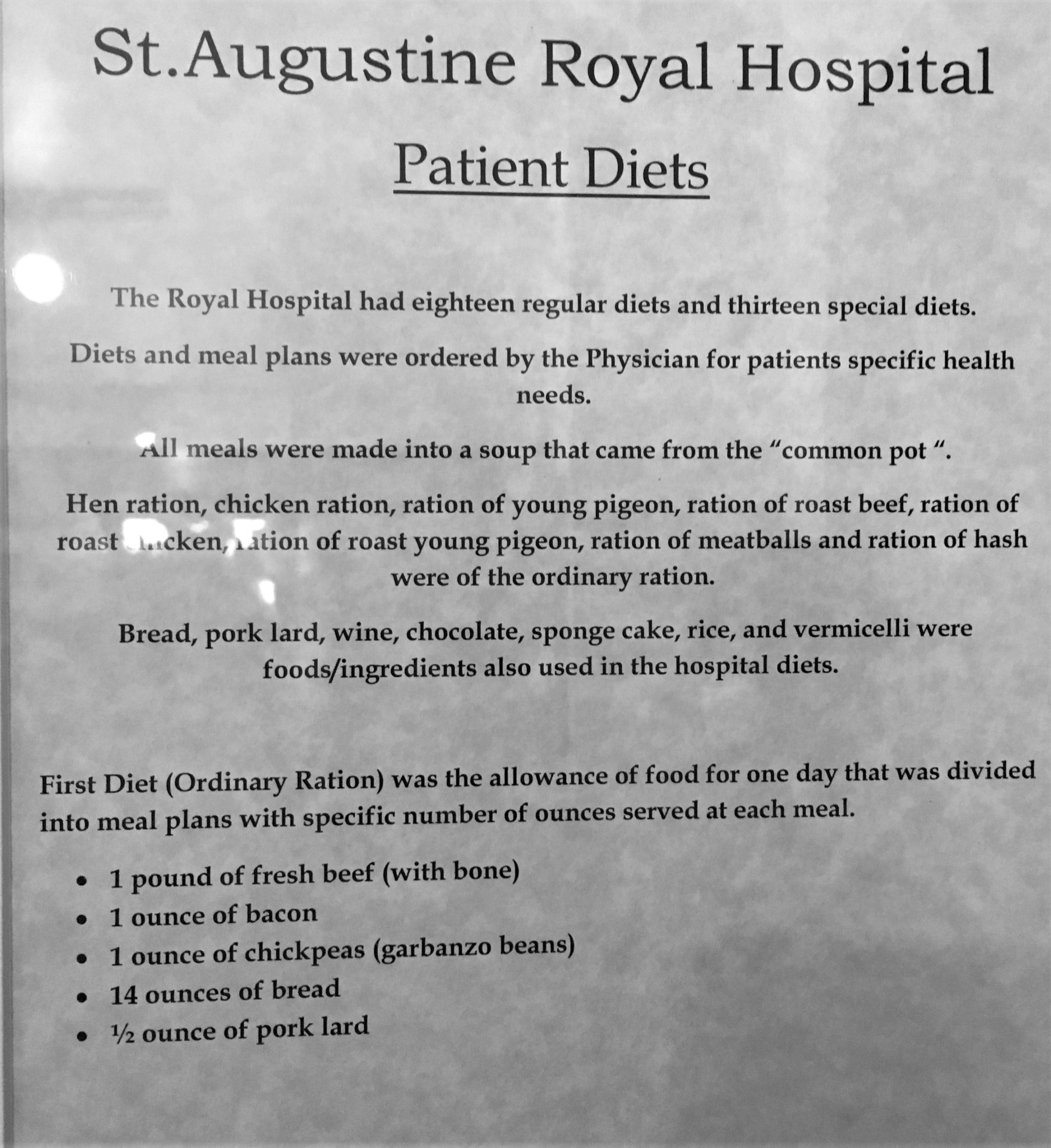
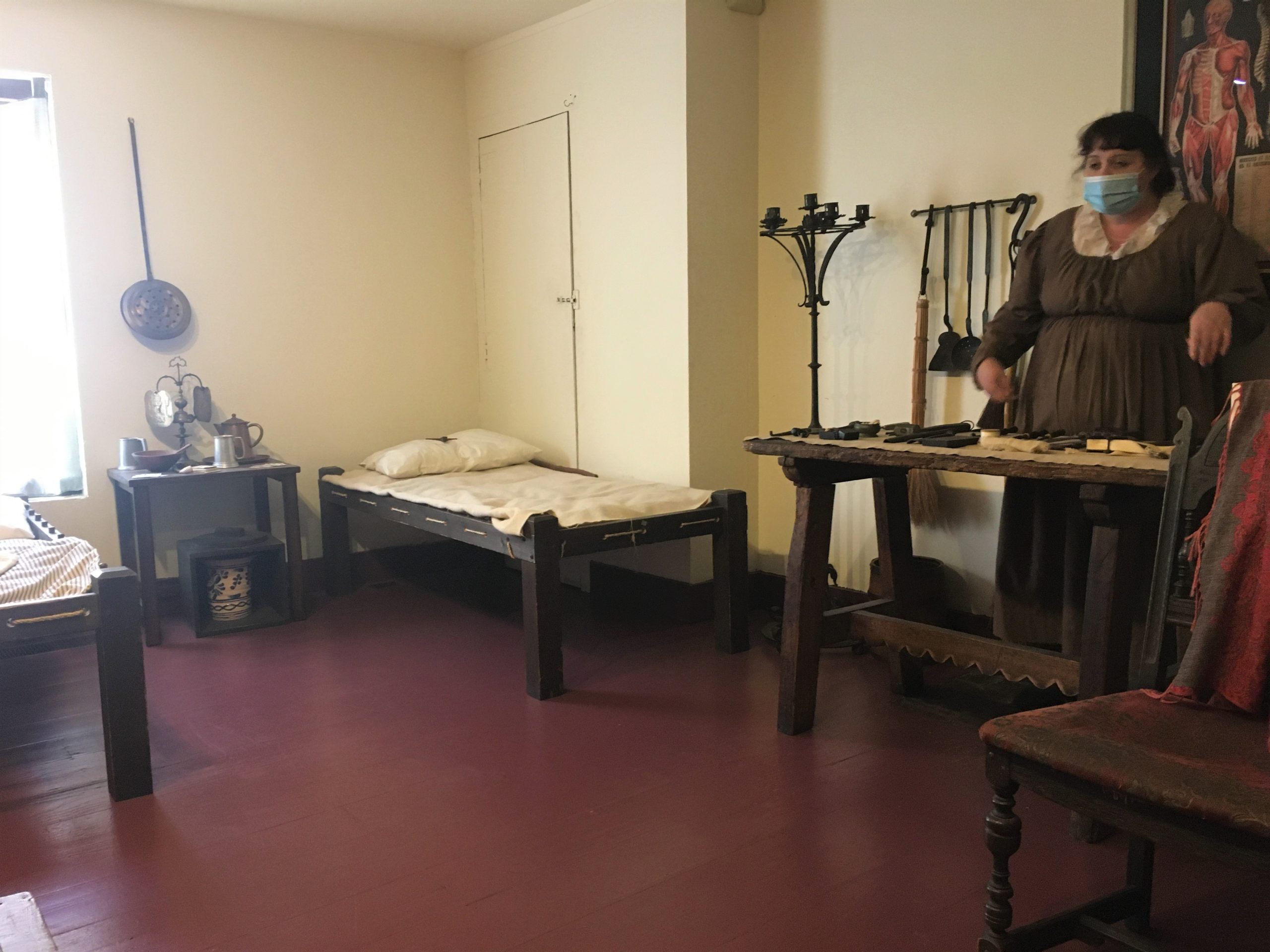

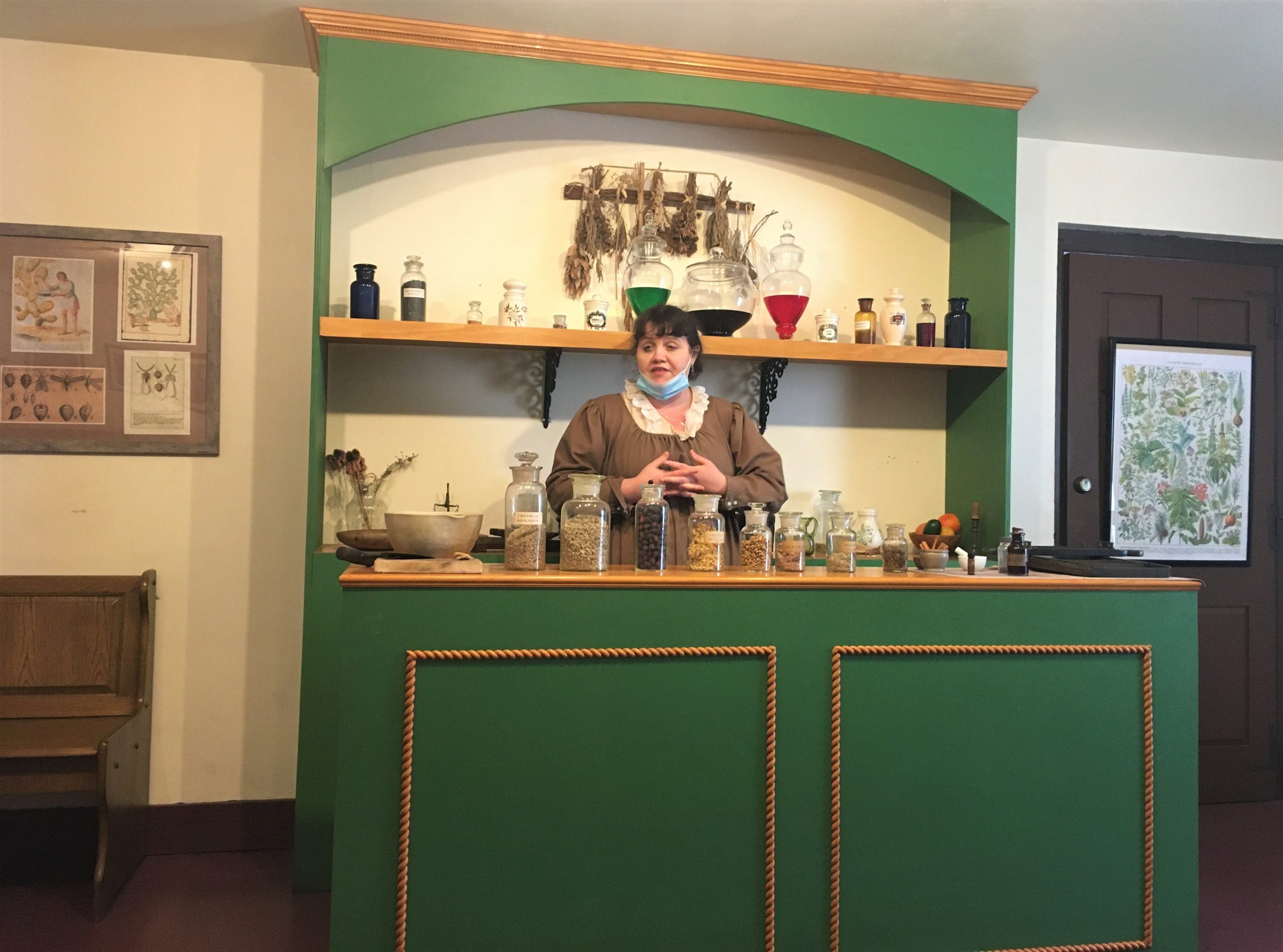
While we were in the Hospital, the sun came out! We felt the need for stretching our legs, so we skipped the trolley and walked about a mile over to the Castillo de san Marcos National Monument. We had thought we might go inside this time, since it was closed to the public two years ago, but we saw the line when we were trolleying around town and thought better of it. The line wasn’t any shorter when we got there. They were limiting visitors to 100 at a time and we were surprised so many were waiting. Maybe they didn’t realize that you could still walk around the outside and read a bunch of information boards . . .
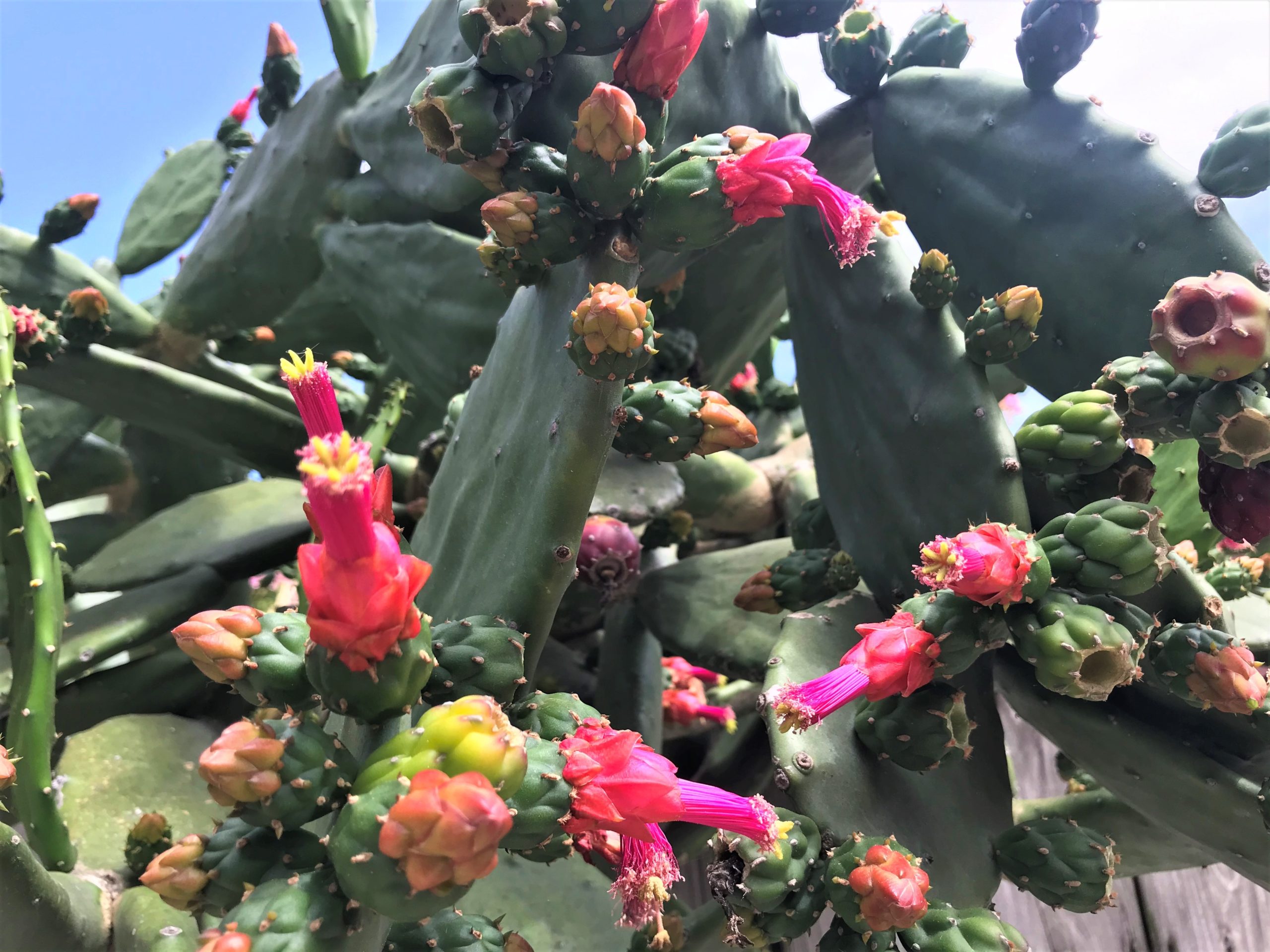
This cactus was growing over a high wall surrounding a private home.
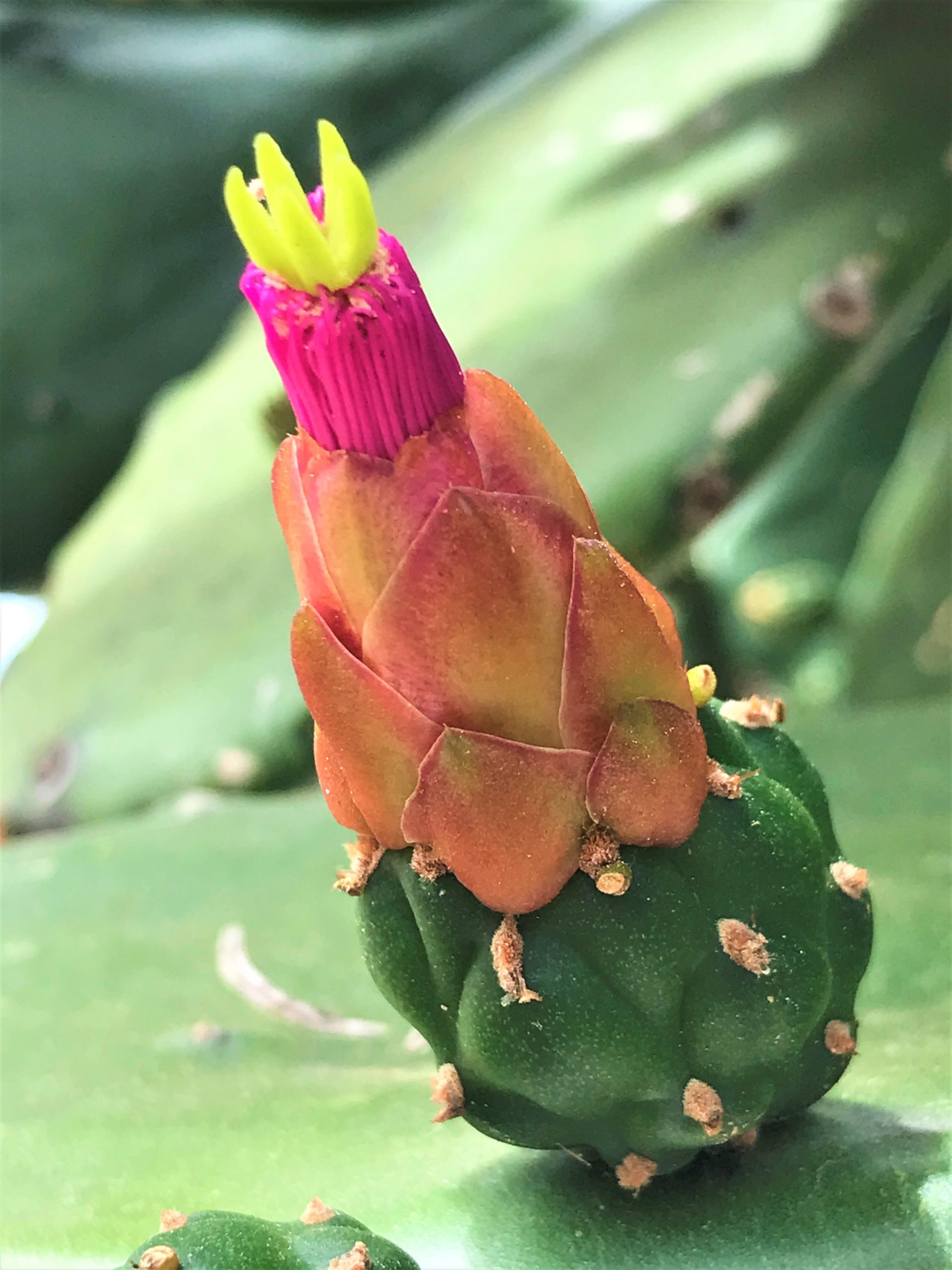
We just can’t praise Him enough for His creativity and beauty!
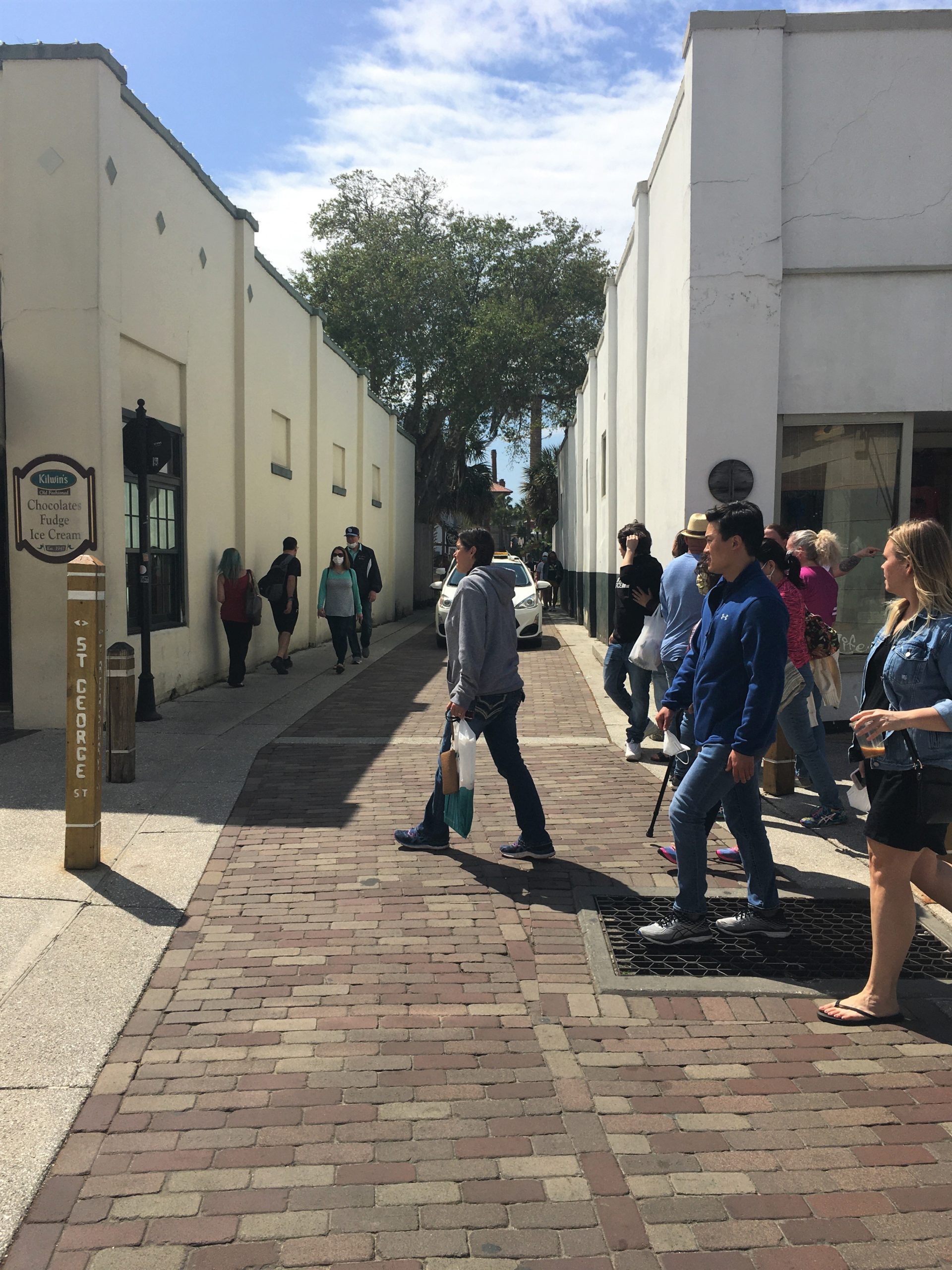
As you can see, cars actually do drive down it, while people are walking on it. Crazy!
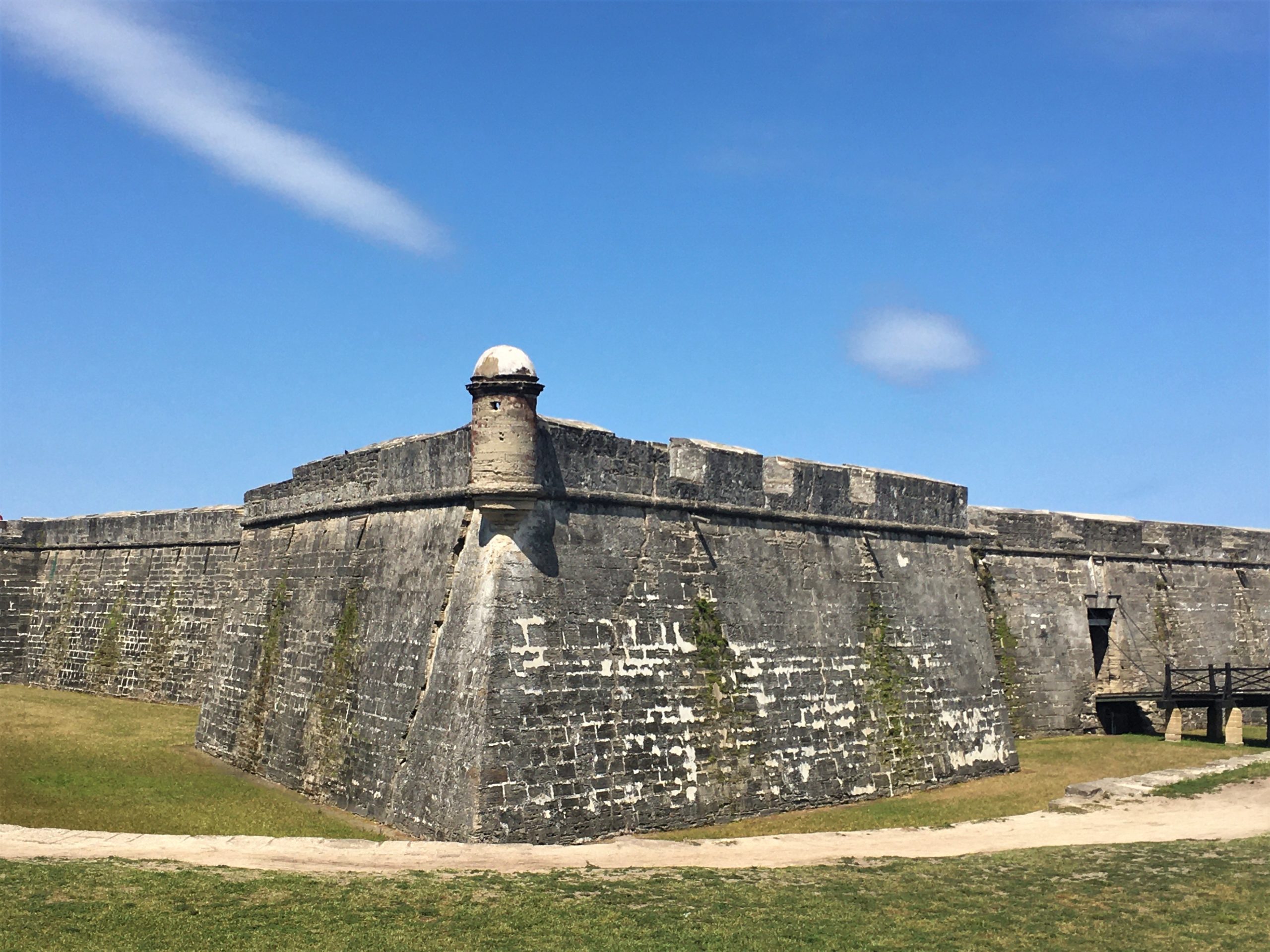
We took one just like it two years ago. : )
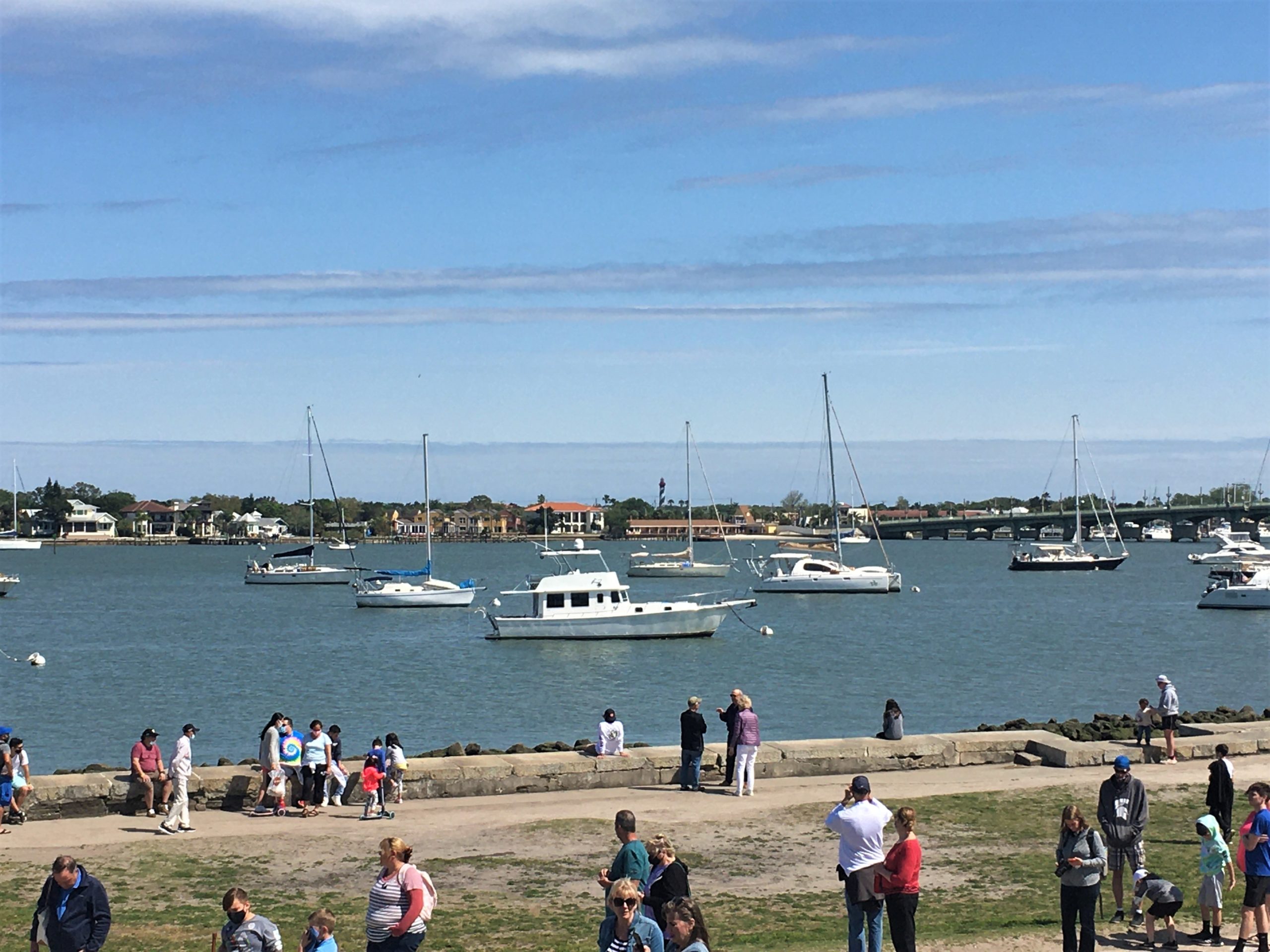
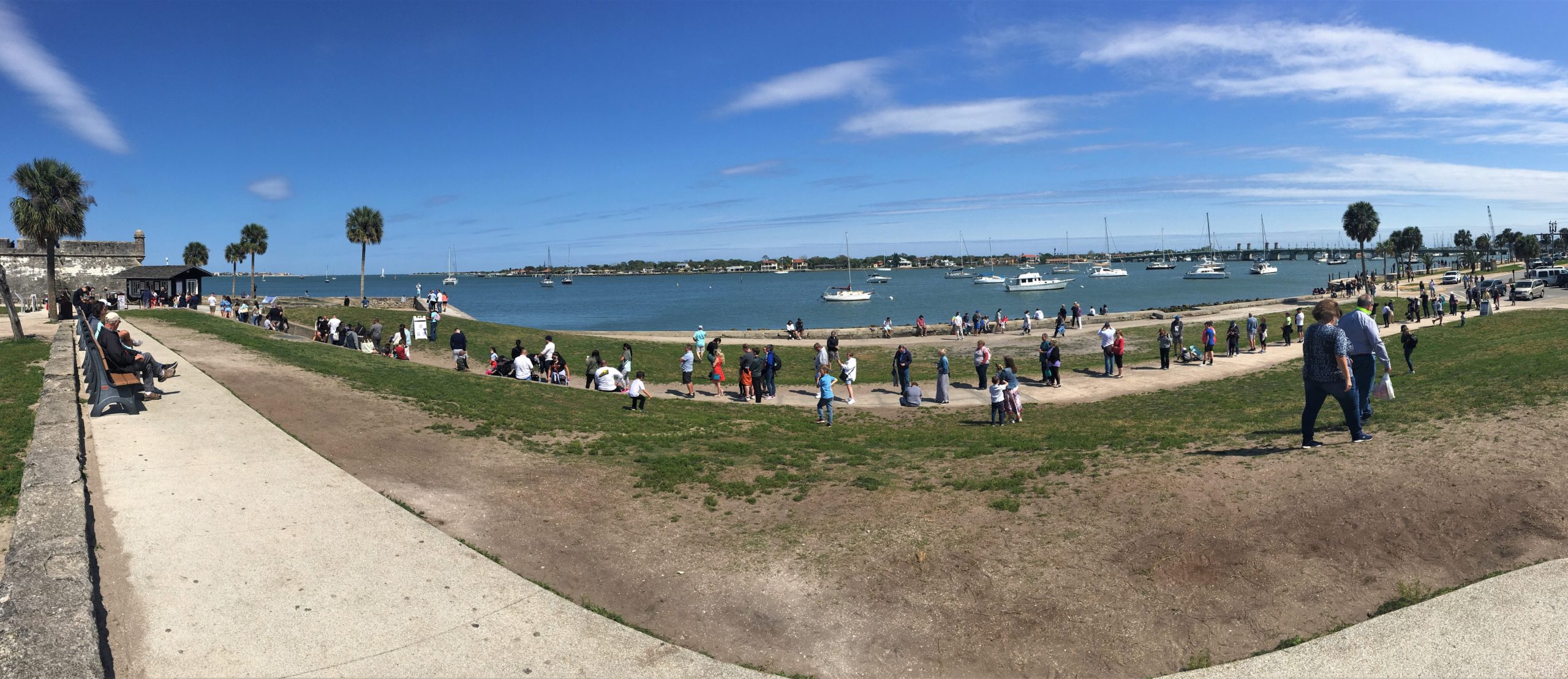
I took this picture at 3:30. The place closes at 5.
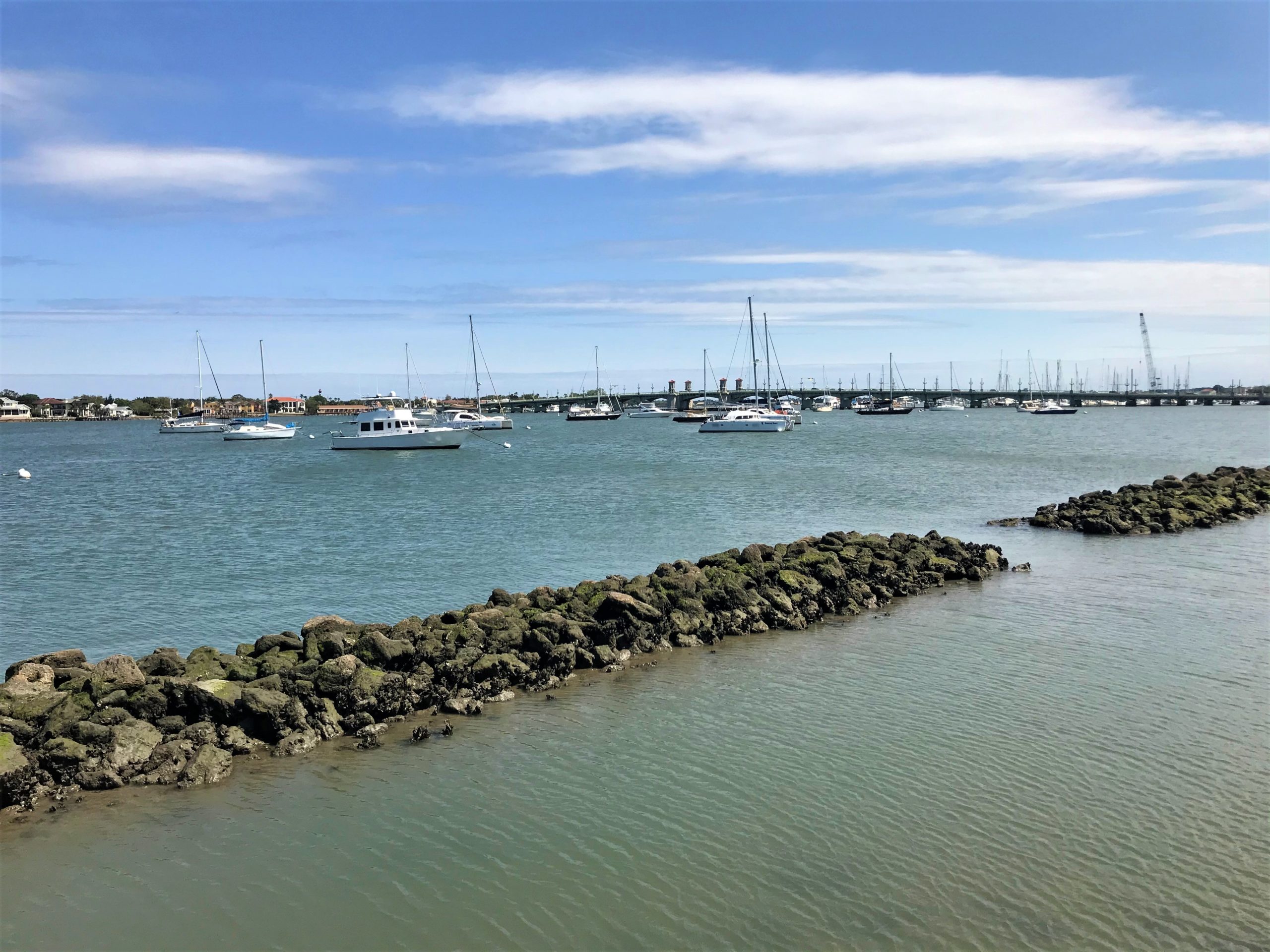
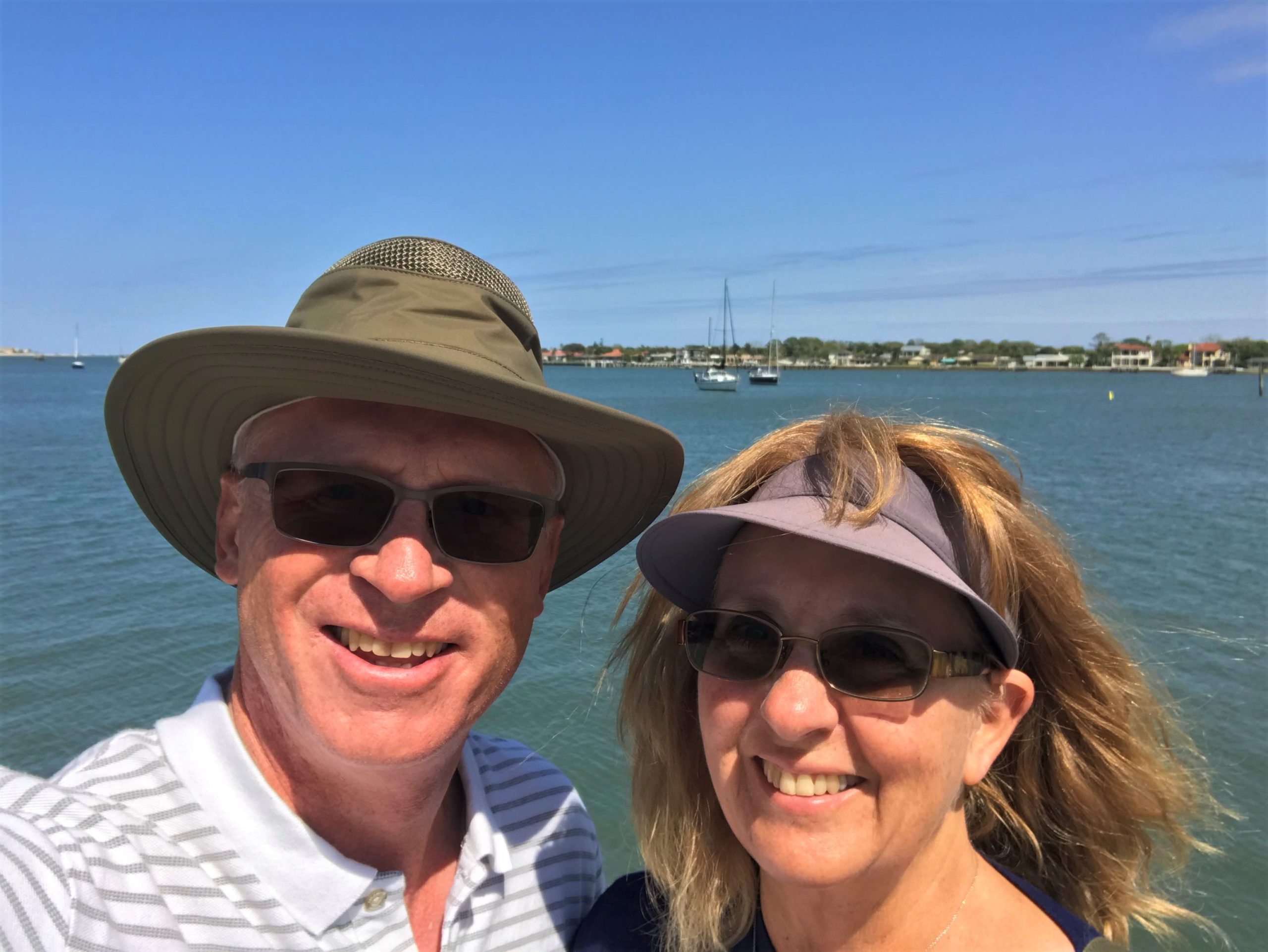
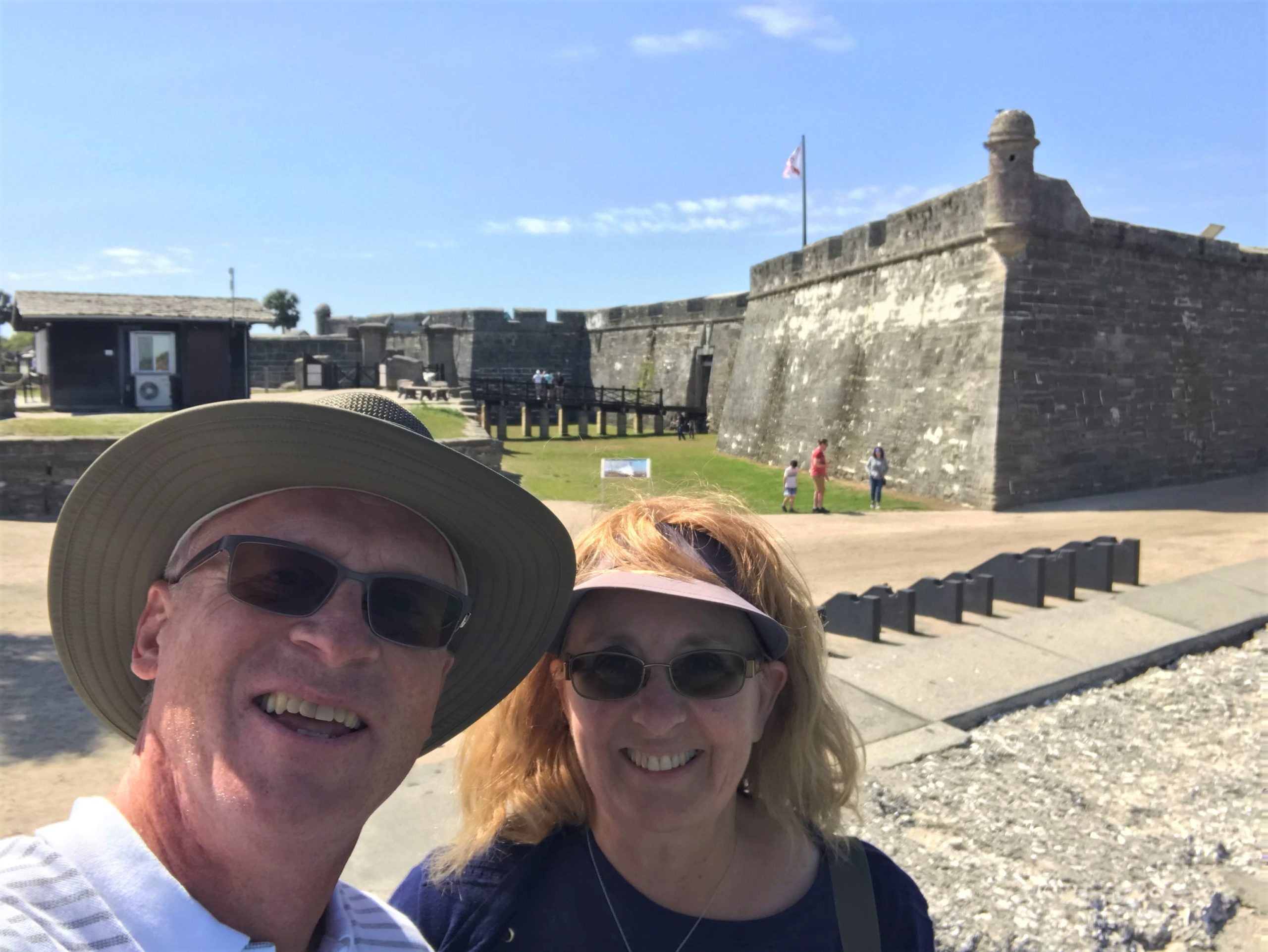
We did some talking about dinner, and finally reached a decision (so many options!!) – it would be Greek and Polish food tonight at Gaufres & Goods! The restaurant was back over by the Military Hospital. Along the way, we stopped to check out a couple of other things.
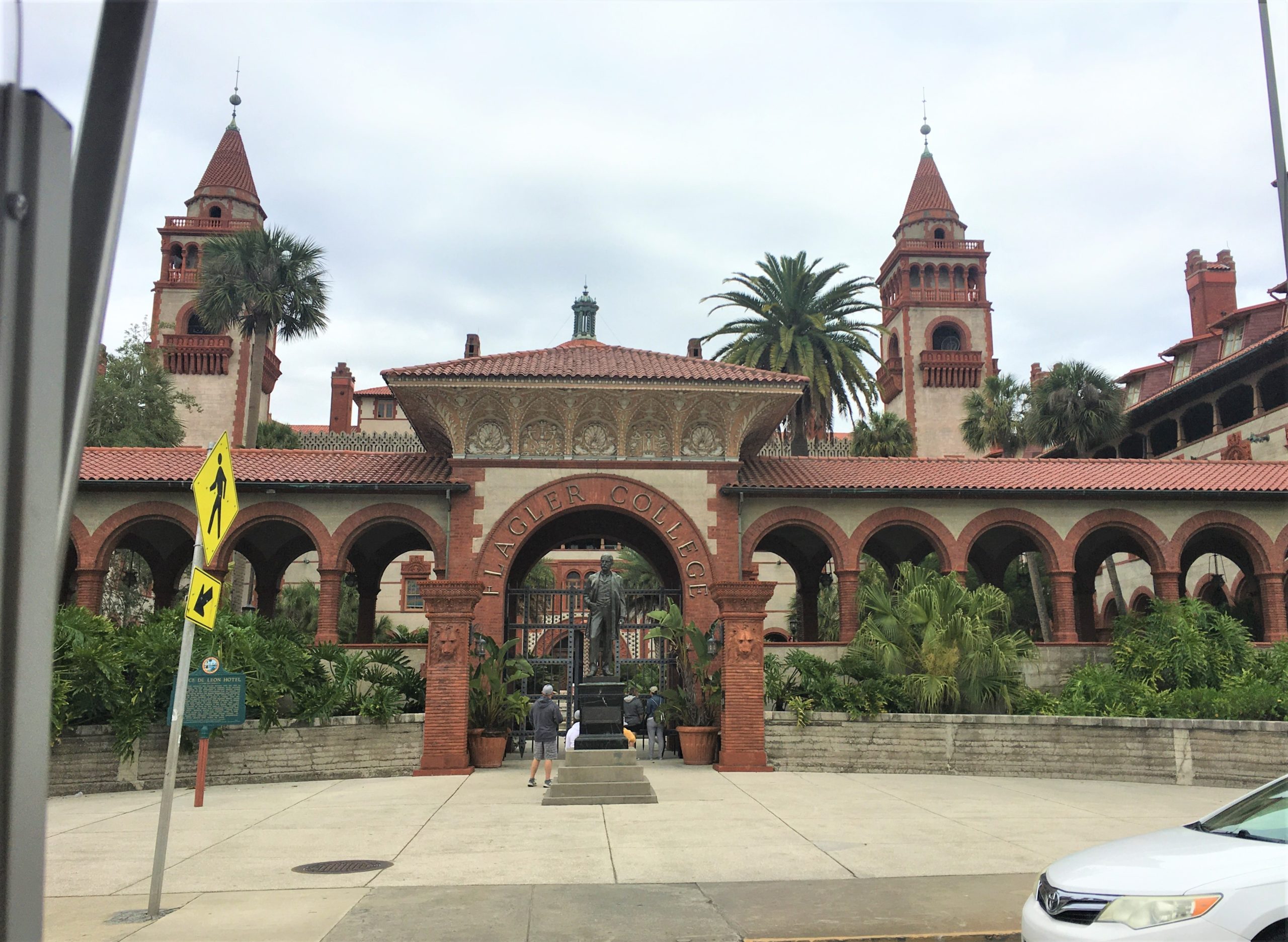
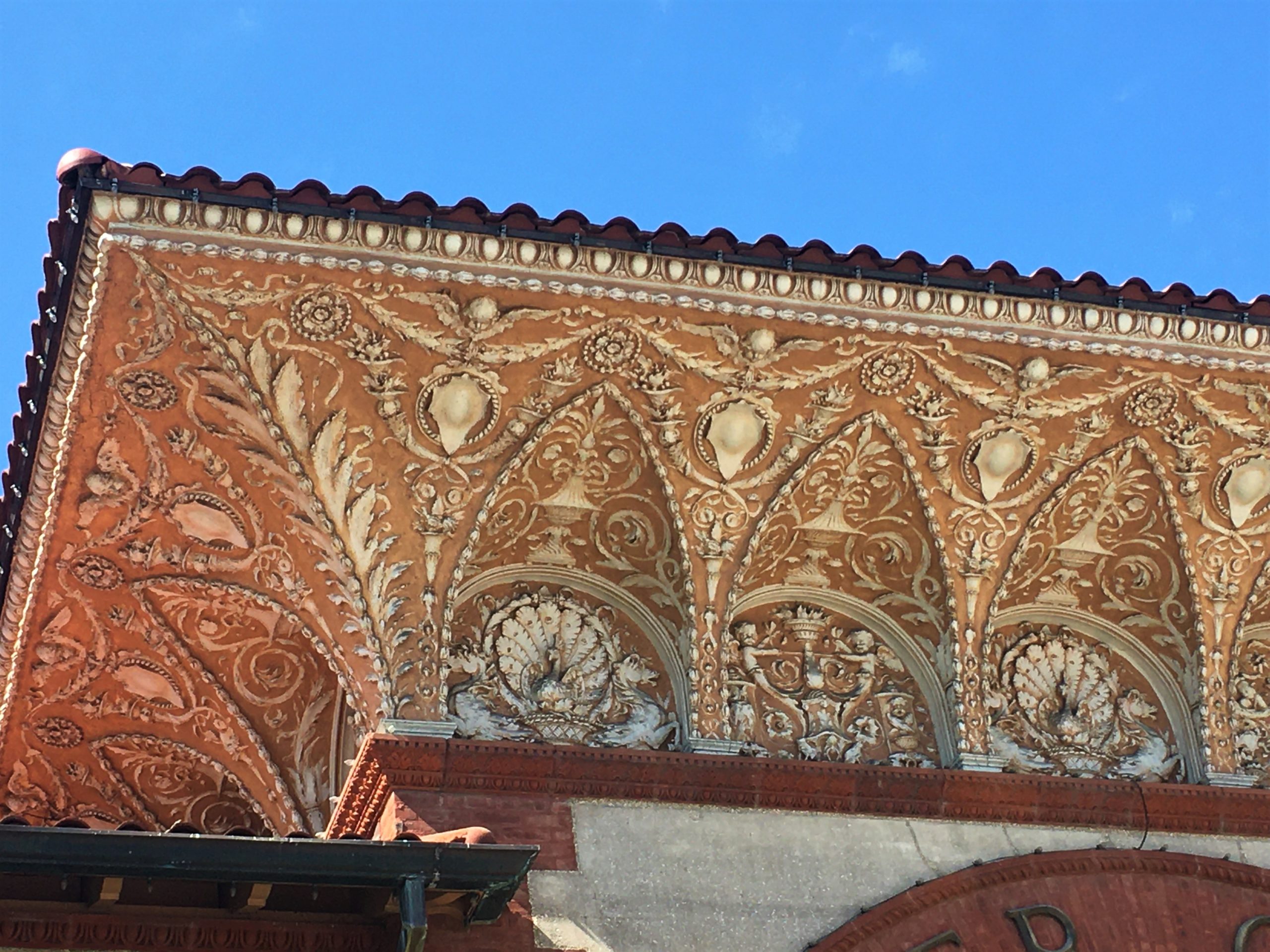
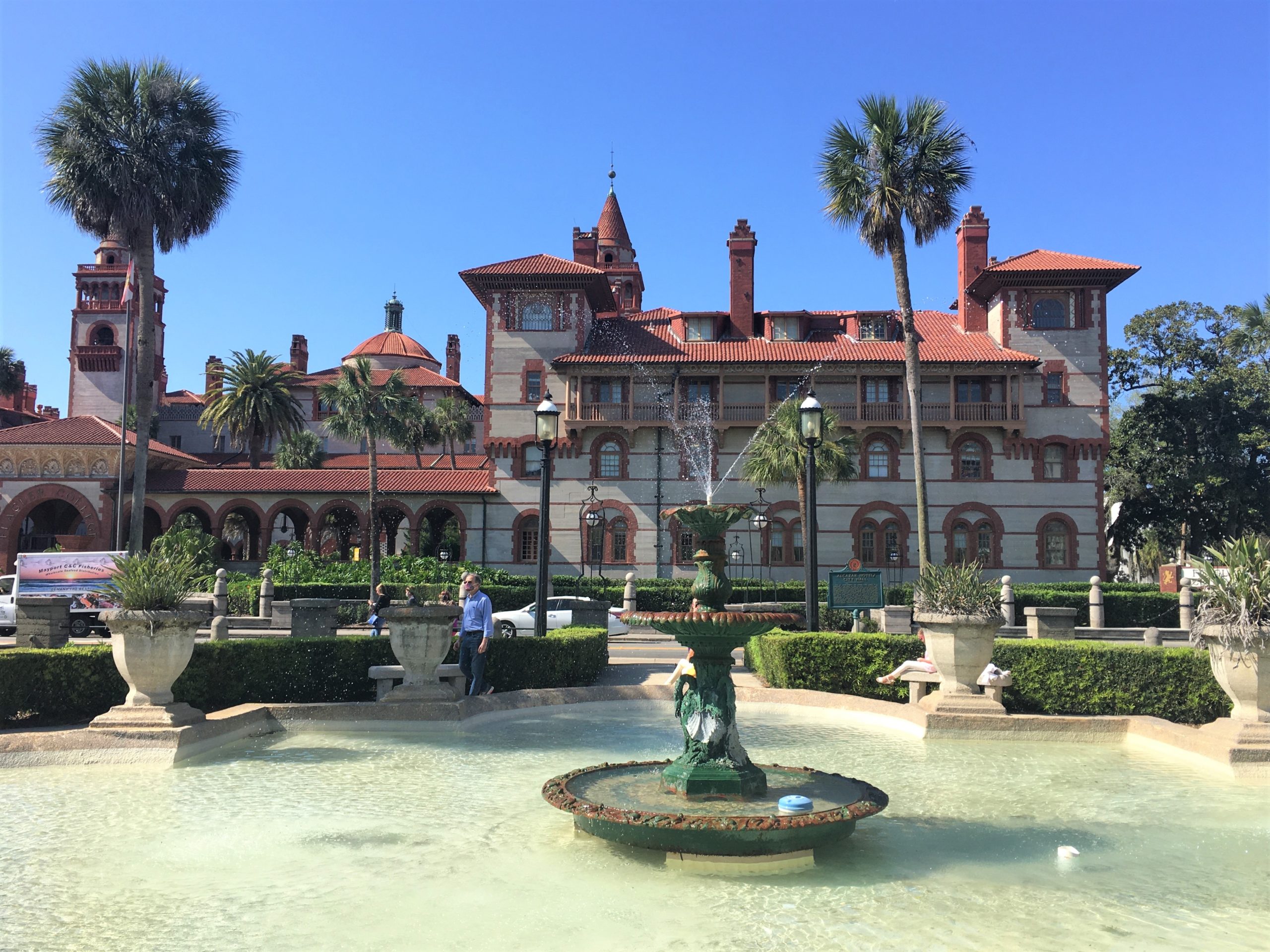
Oh! this picture was taken from the front of the museum, looking across the street to another portion of Flagler College. Sorry for the misunderstanding.
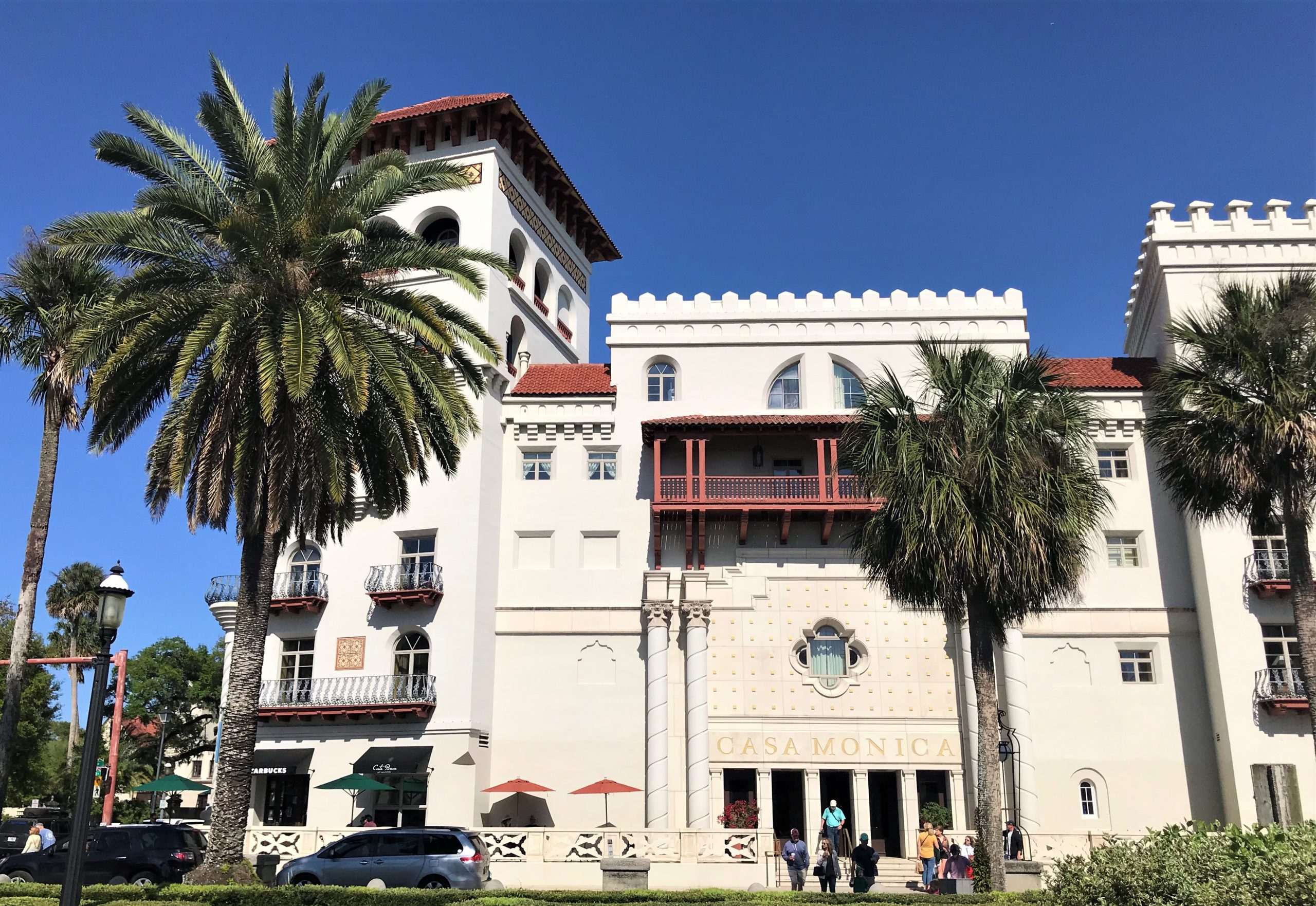
A guy moved to St. Augustine and decided that he’d give Henry Flagler (already well-established) some hotel competition, so he began building this place.
Unfortunately, guess who owned the railroad who brought him his supplies?
That’s right! Henry Flagler. The guy’s shipments kept getting delayed.
He finally gave up, and Flagler bought the property and built another of HIS hotels.
They say money can’t buy you love, but it can sure buy most anything else!
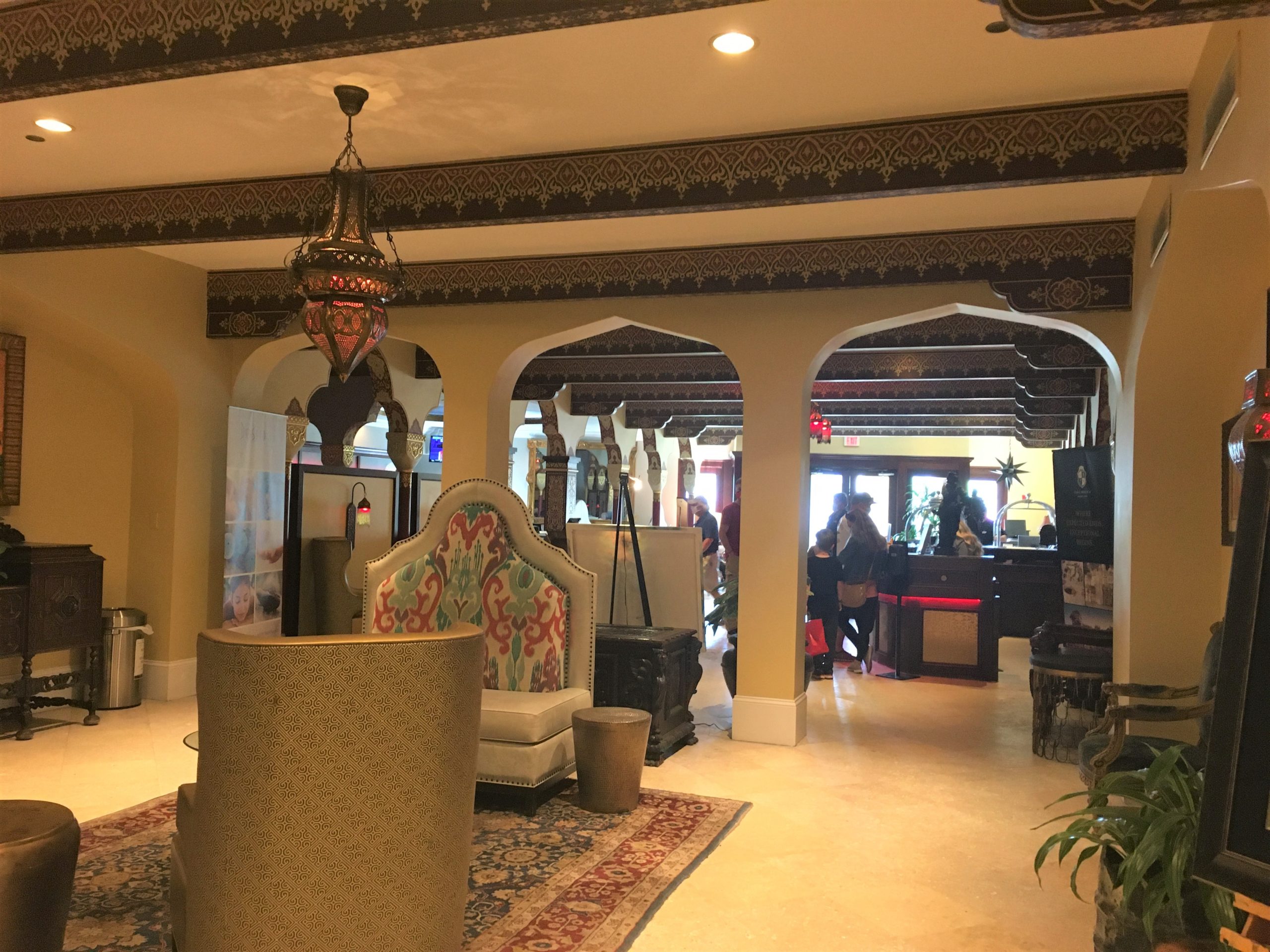
The Zorayda was on my list of things to see, but we decided we were museumed-out and didn’t want to pay the $15 to see it. It’s okay, it’ll give us something different to do next time!
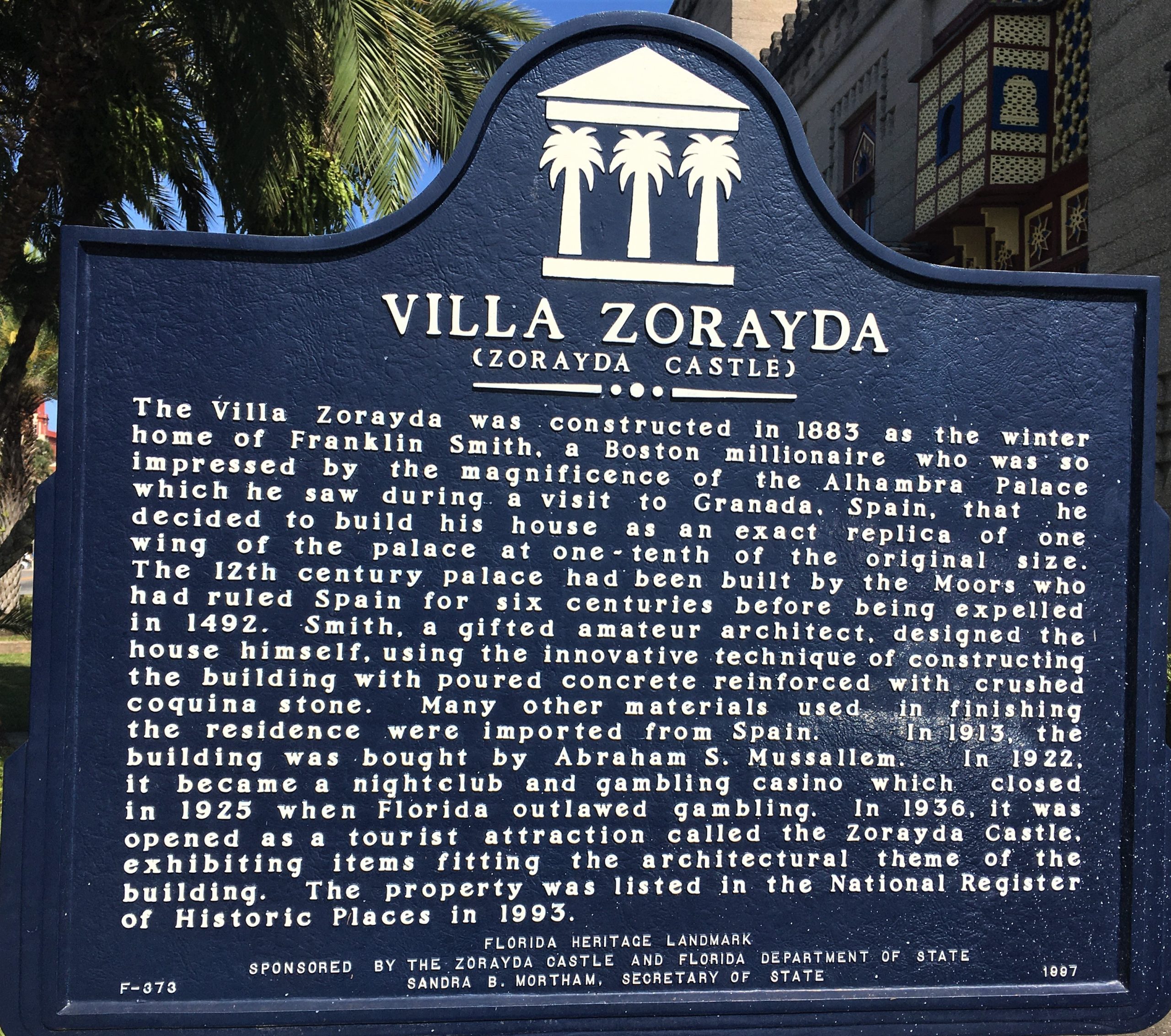
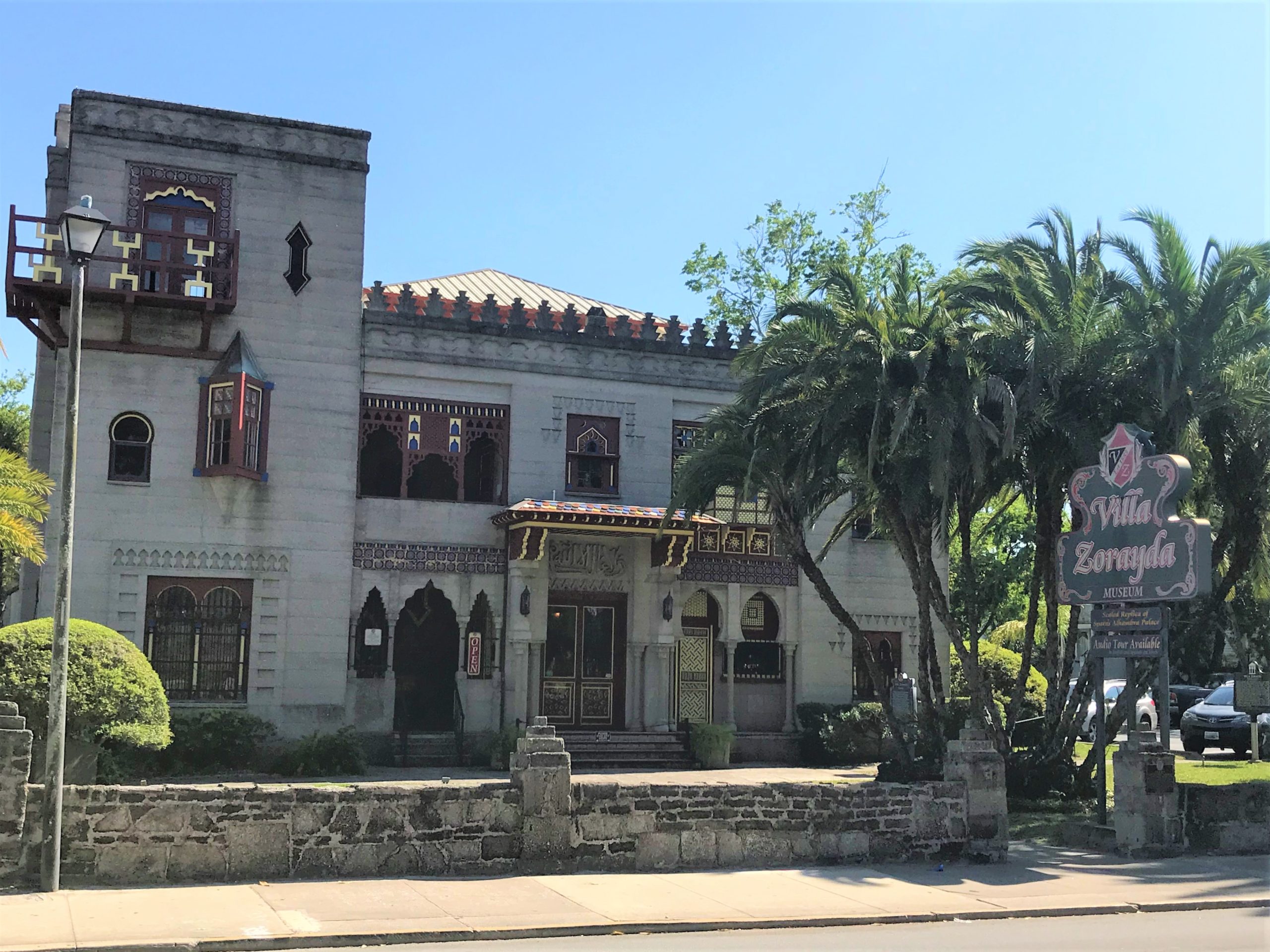
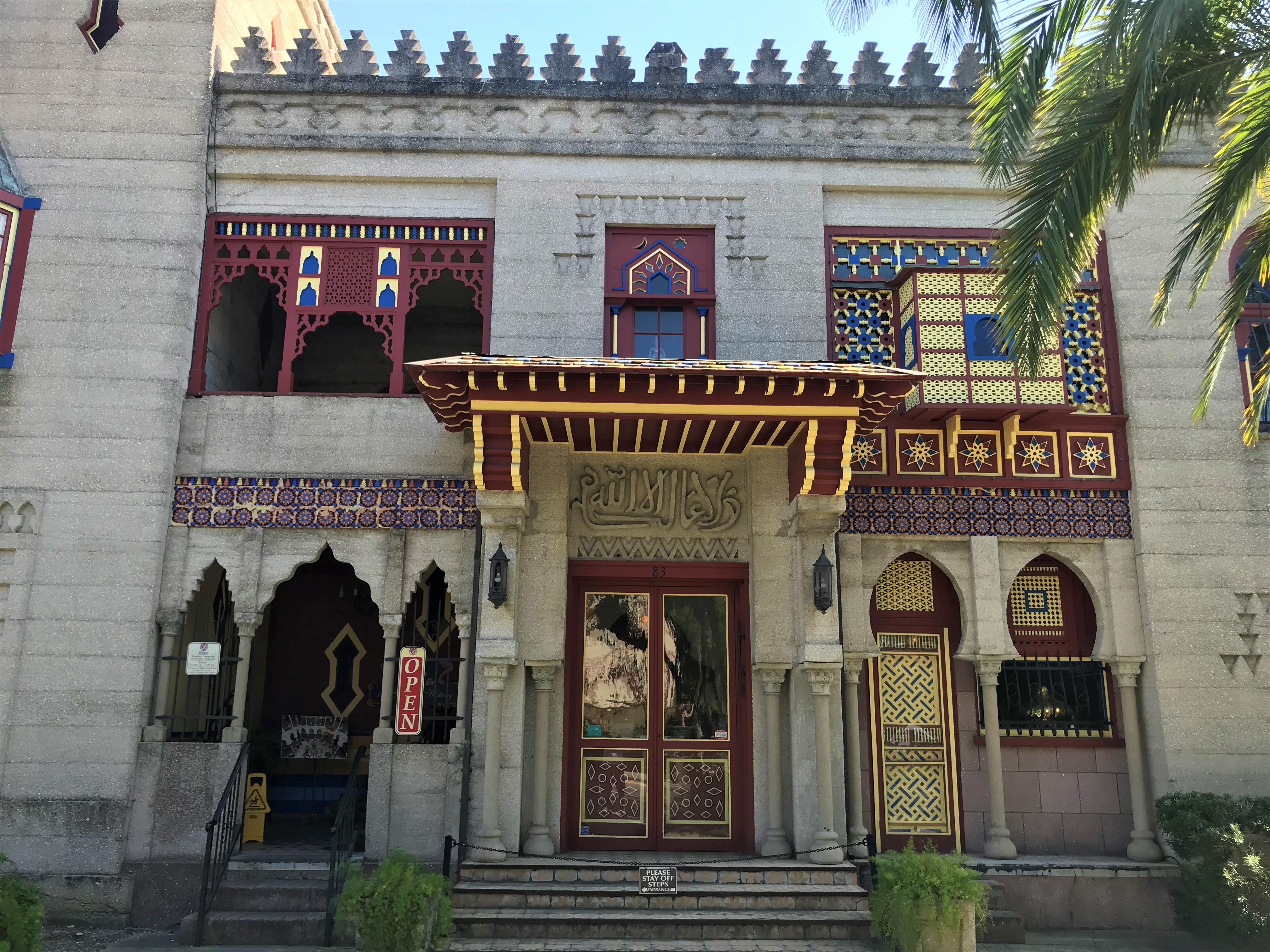
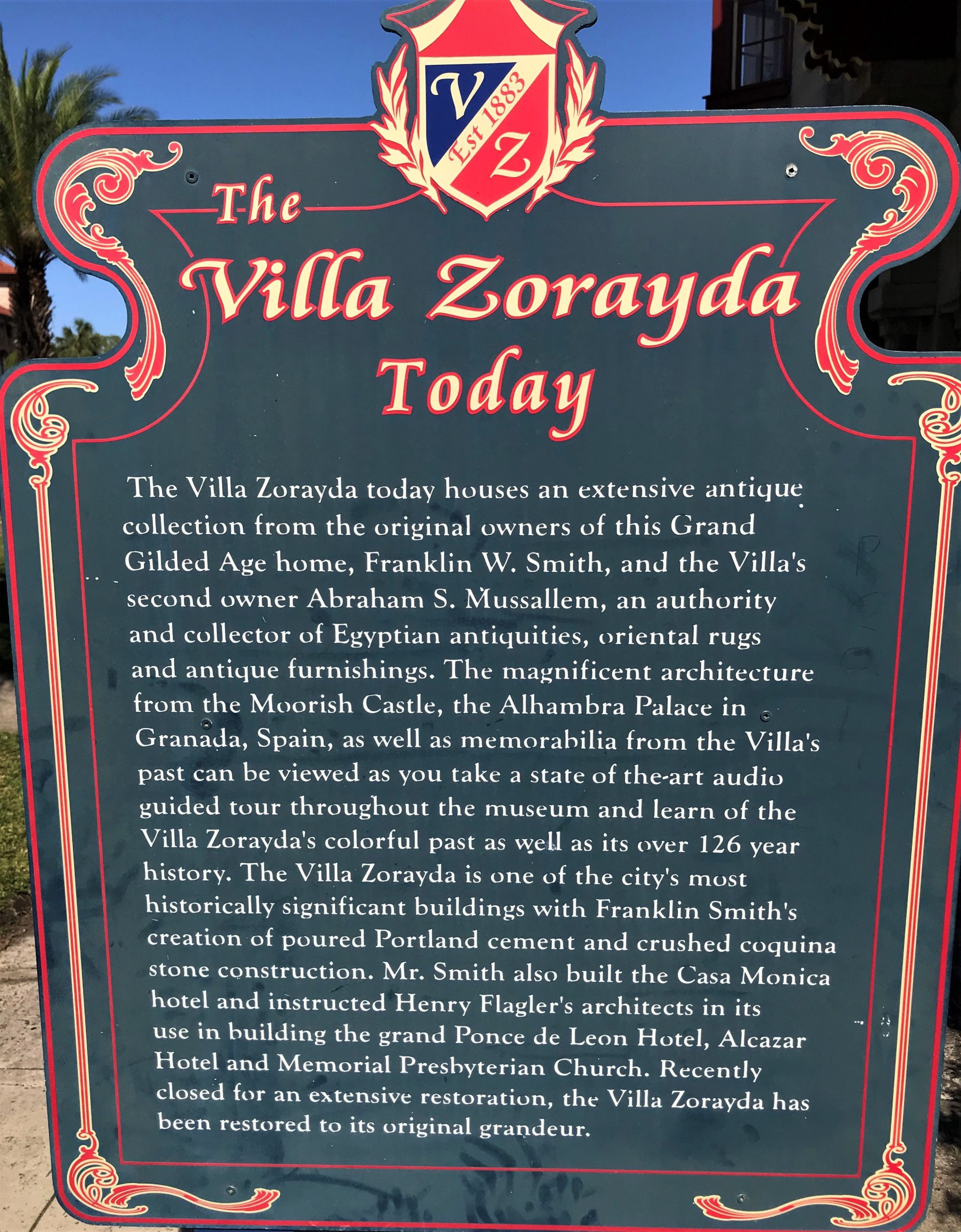
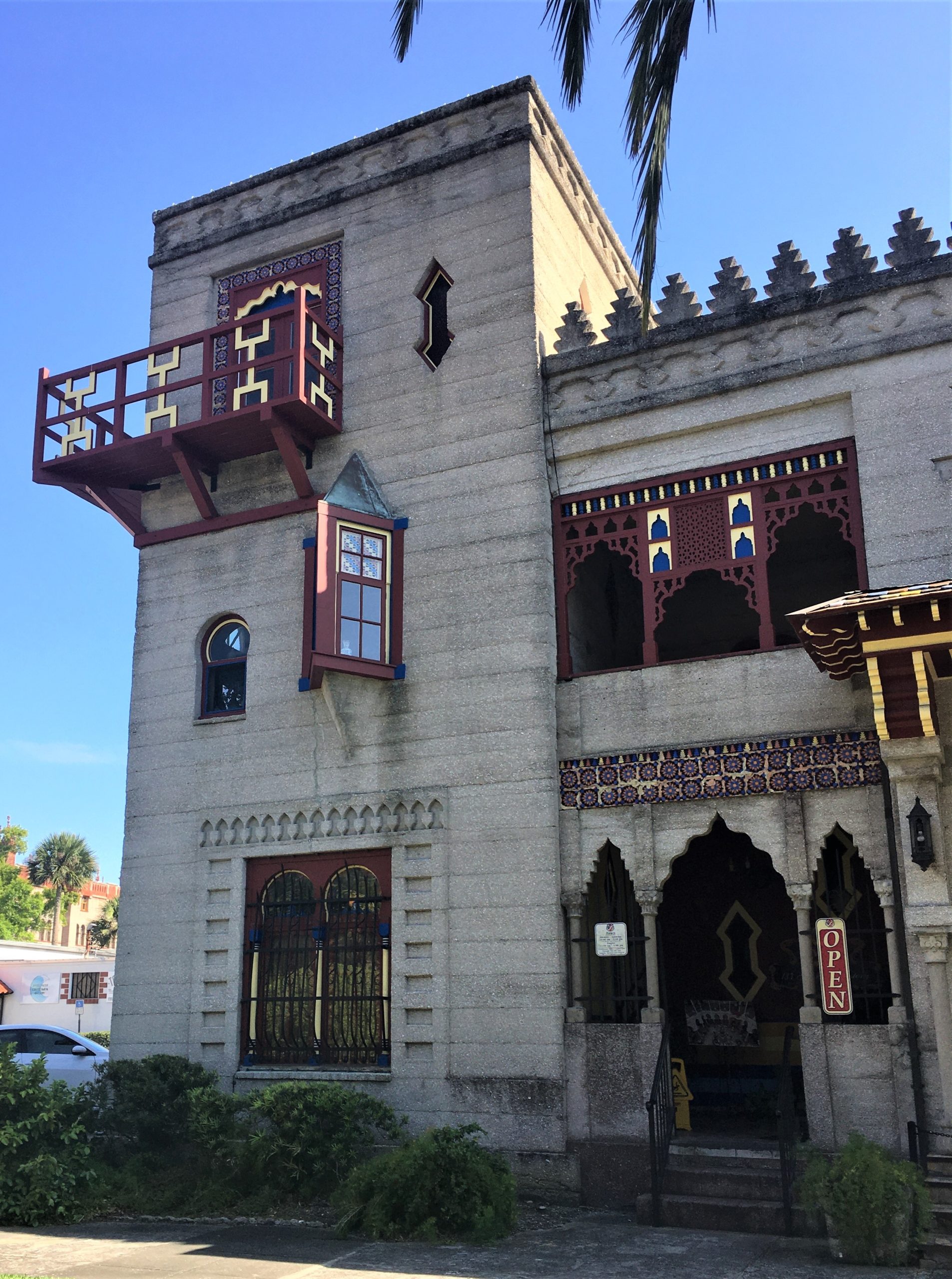
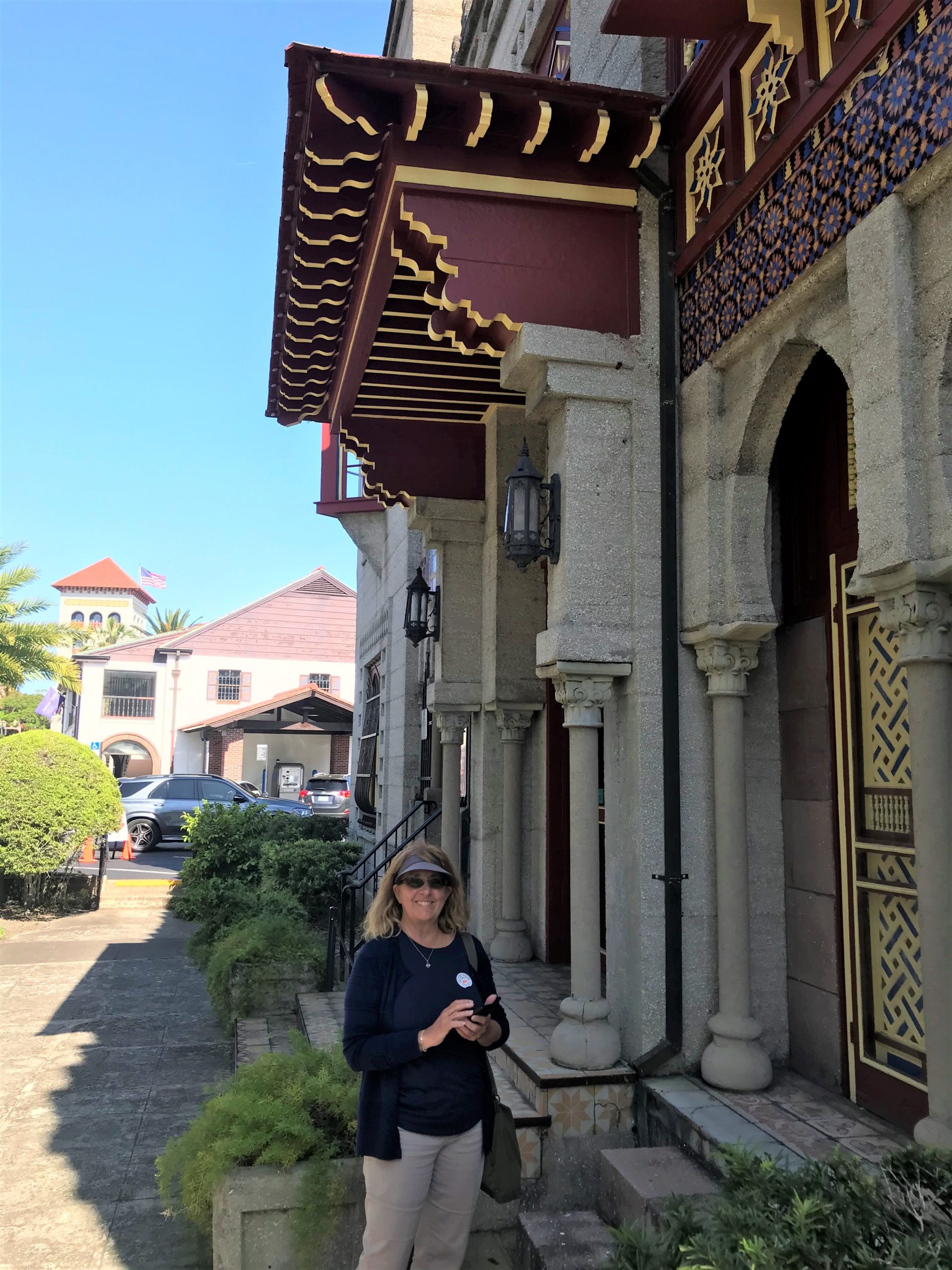
Dinner was very good! And there was hardly anyone there, plus it had the added bonus of being located on the quiet side of town. We enjoyed an appetizer of Tzatiki which was yummy and served with warm pita bread. I’m not certain, but I think this is the sauce they put on Greek Gyros. My Greek friend Melanie, would know for sure. 😊 Blaine ordered a Polish meal of a kielbasa special with Bigos. It included a piece of kielbasa, four perogies – two stuffed with cheese, and two meat, and the Bigos is a stew with all kinds of stuff in it – meat, raisins, sauerkraut… He loved it. And I enjoyed my Yemista (Greek for ‘stuffed’) – a tomato stuffed with a rice/meat-type filling and a side of grilled/sautéed veggies consisting of yellow squash, zucchini, mushrooms and eggplant, and sprinkled with Feta cheese. Everything was very good!
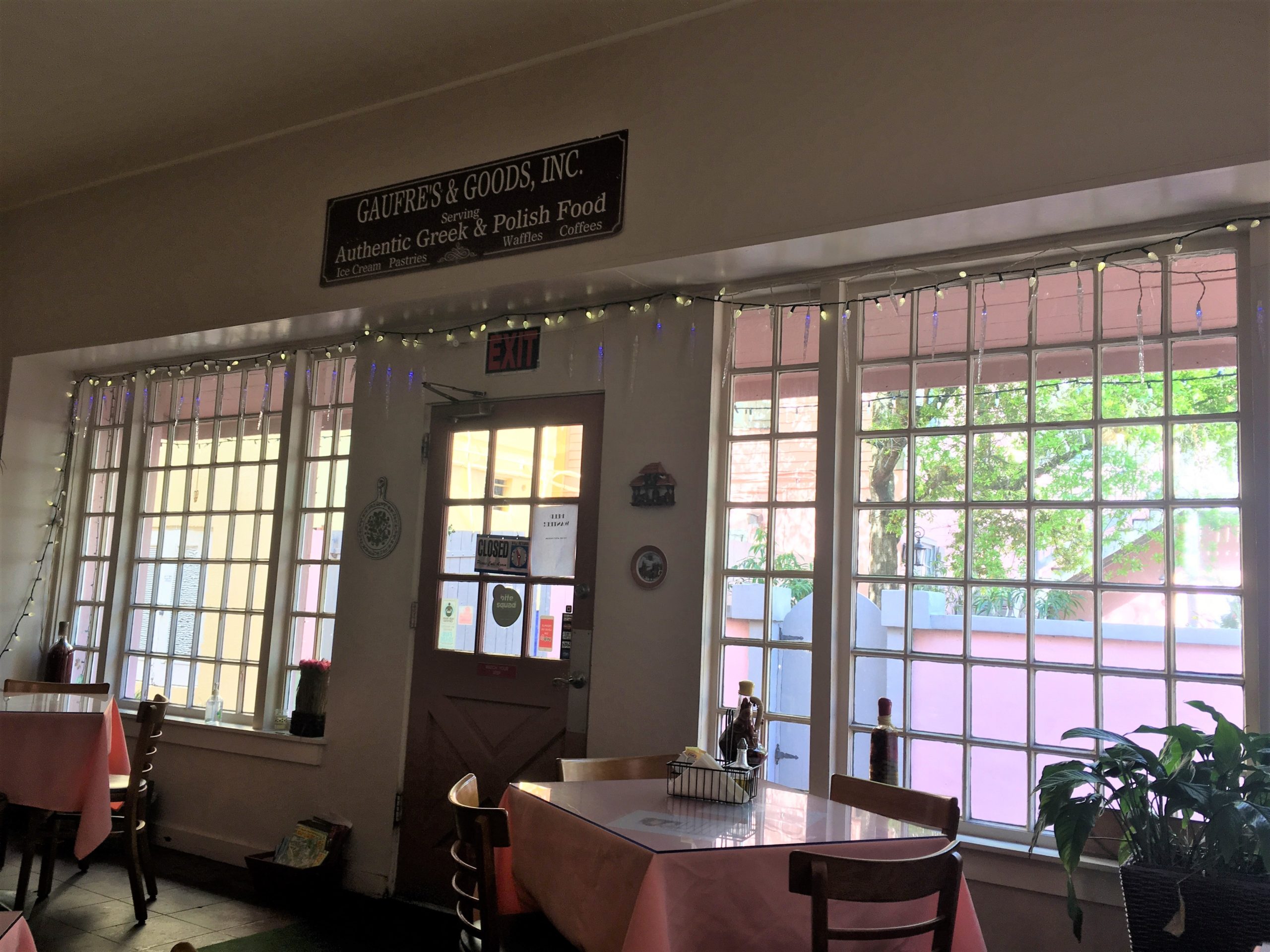
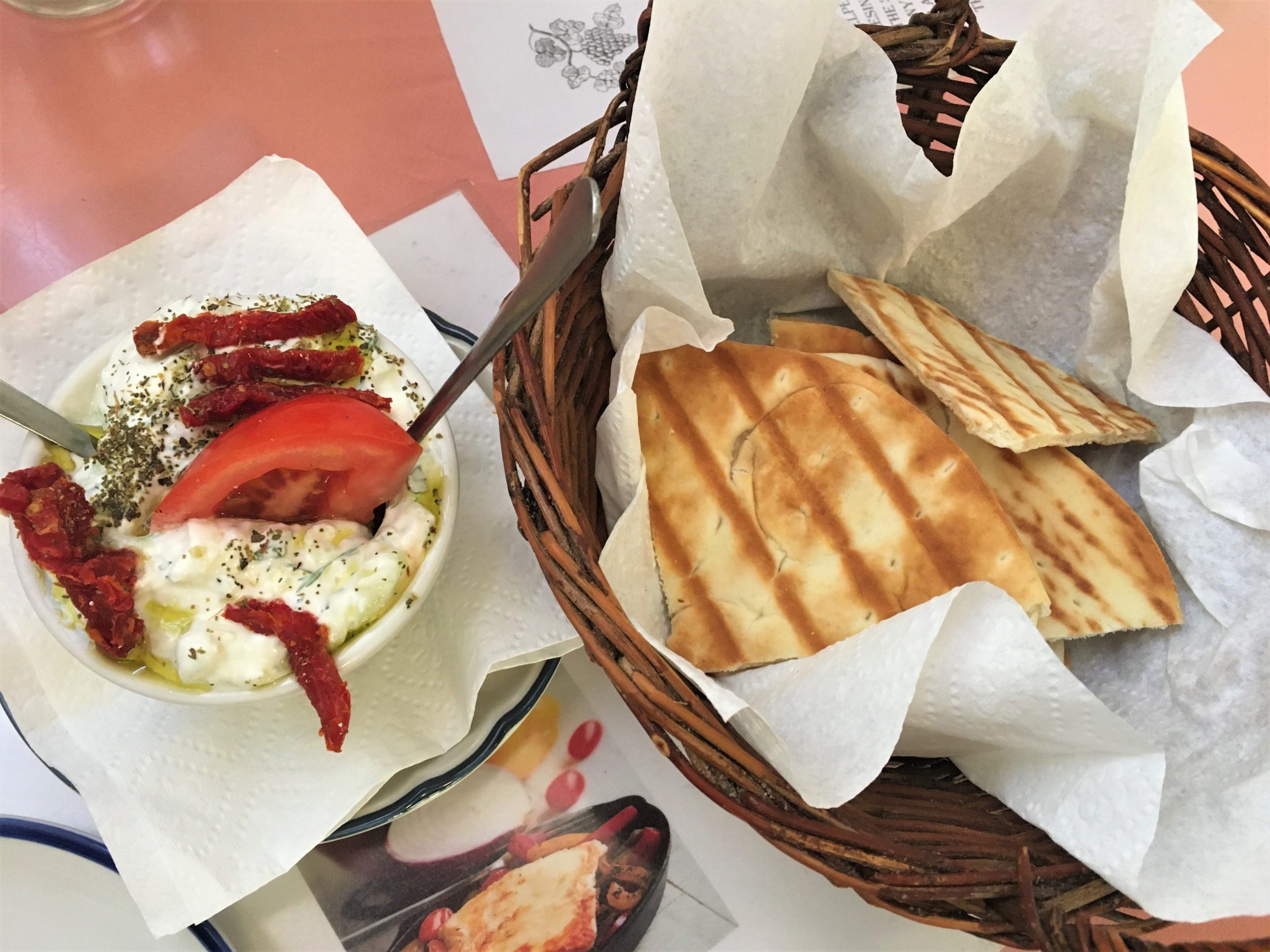
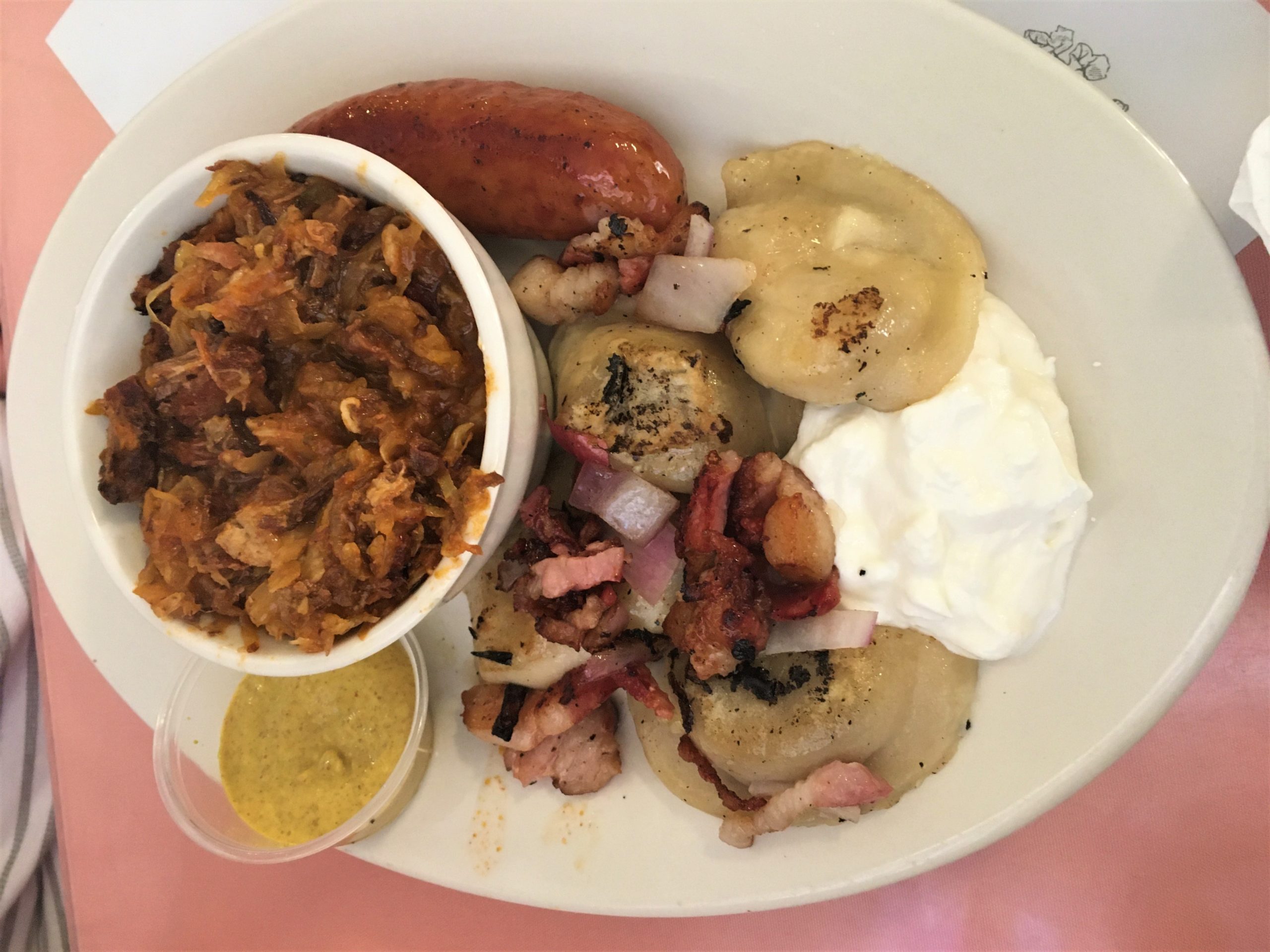
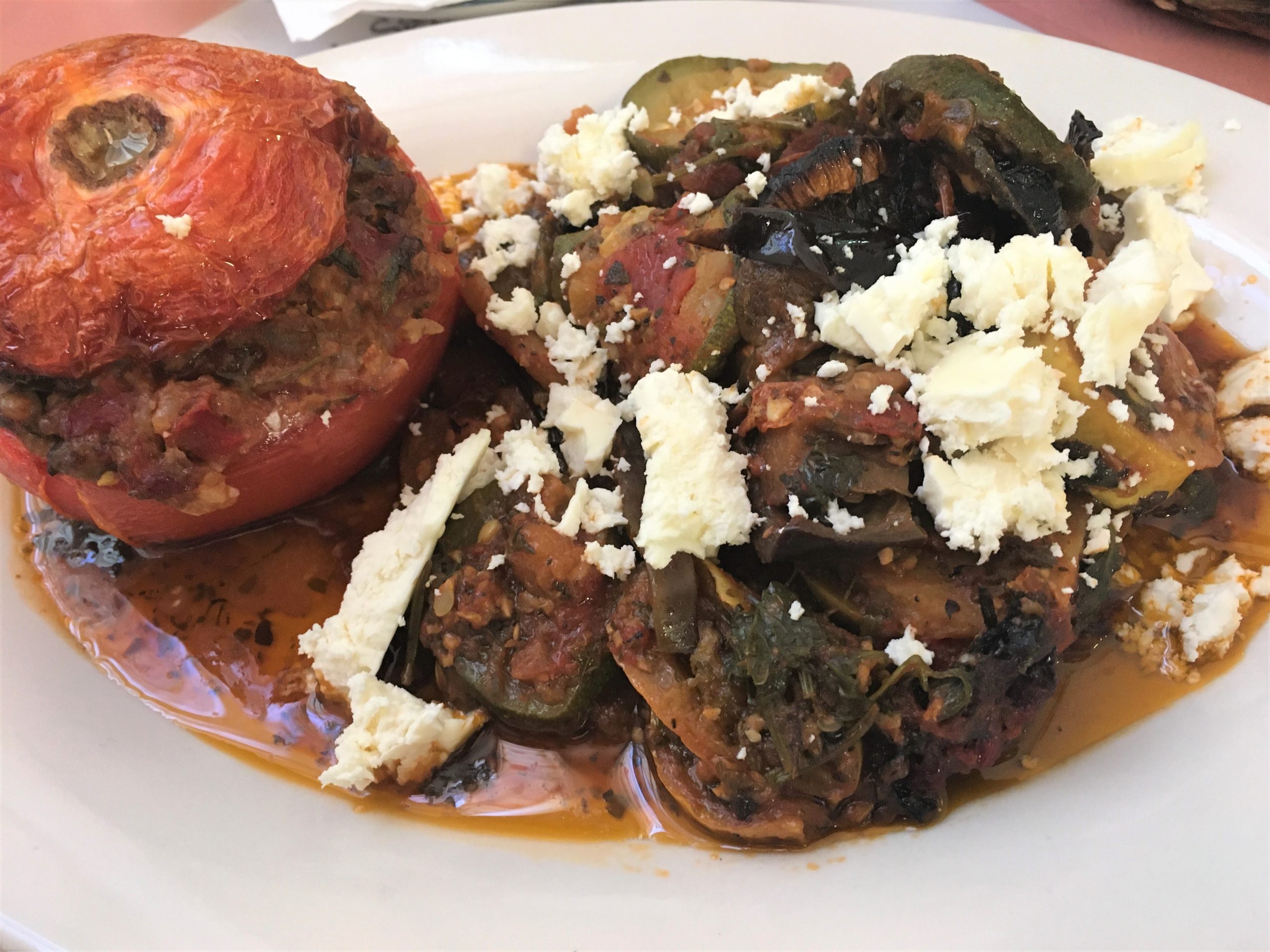
And something strange . . . at about 5:15pm, some people walked in for dinner, and they told them the place was closing, and they couldn’t serve them! They didn’t close until 6pm! Which still seemed really early to us for a tourist town.
After dinner, we walked about a block to the Peace Pies storefront, where they offer ice cream sandwiches that are filled with pie filling. Sounds very intriguing doesn’t it?
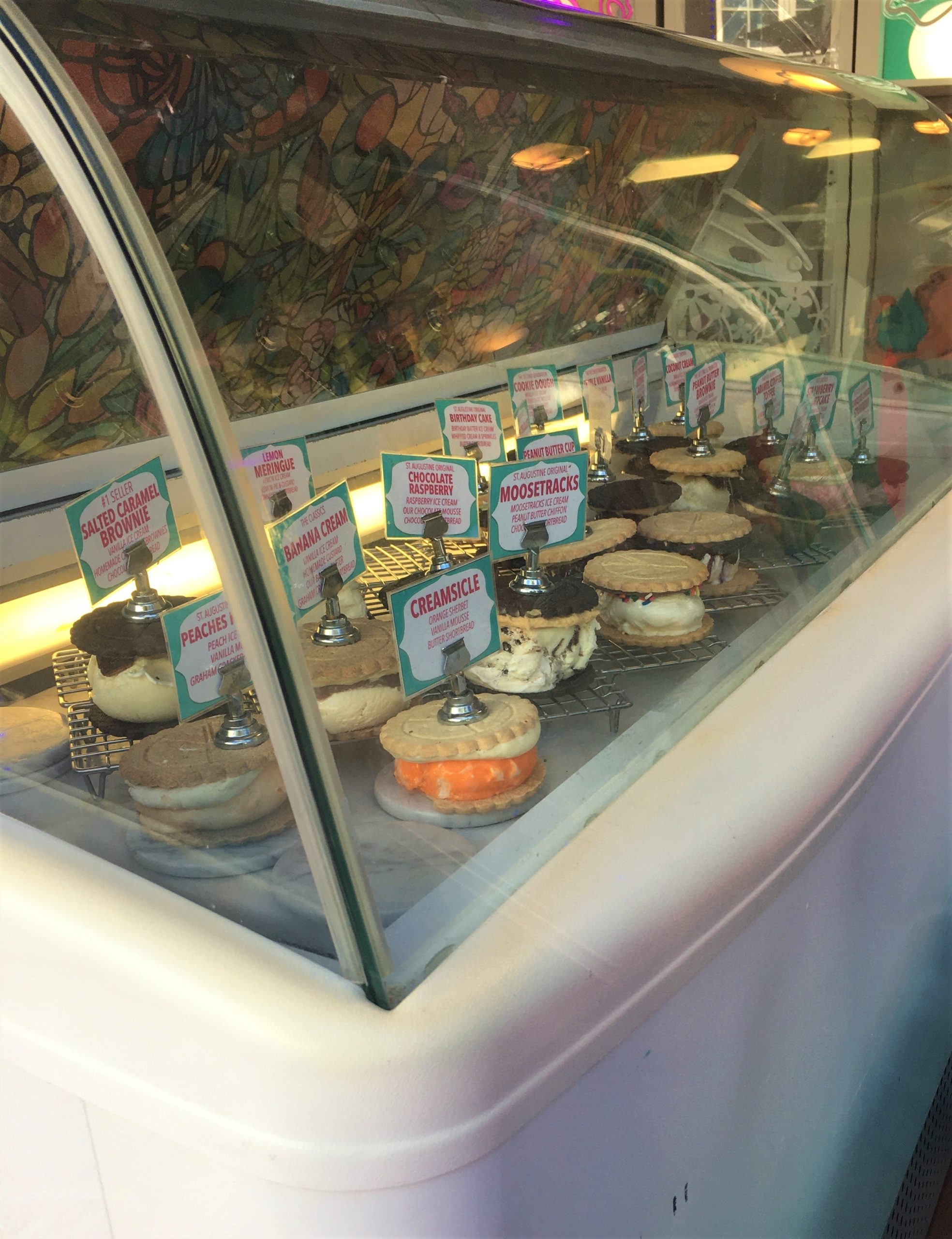
First of all, it was near the end of the day, and they were out of the flavors we really wanted, so we settled. Blaine had a brownie?? one, and I had peach. Both were very good, but we never saw anything resembling pie filling. Hmmmm . . . . .
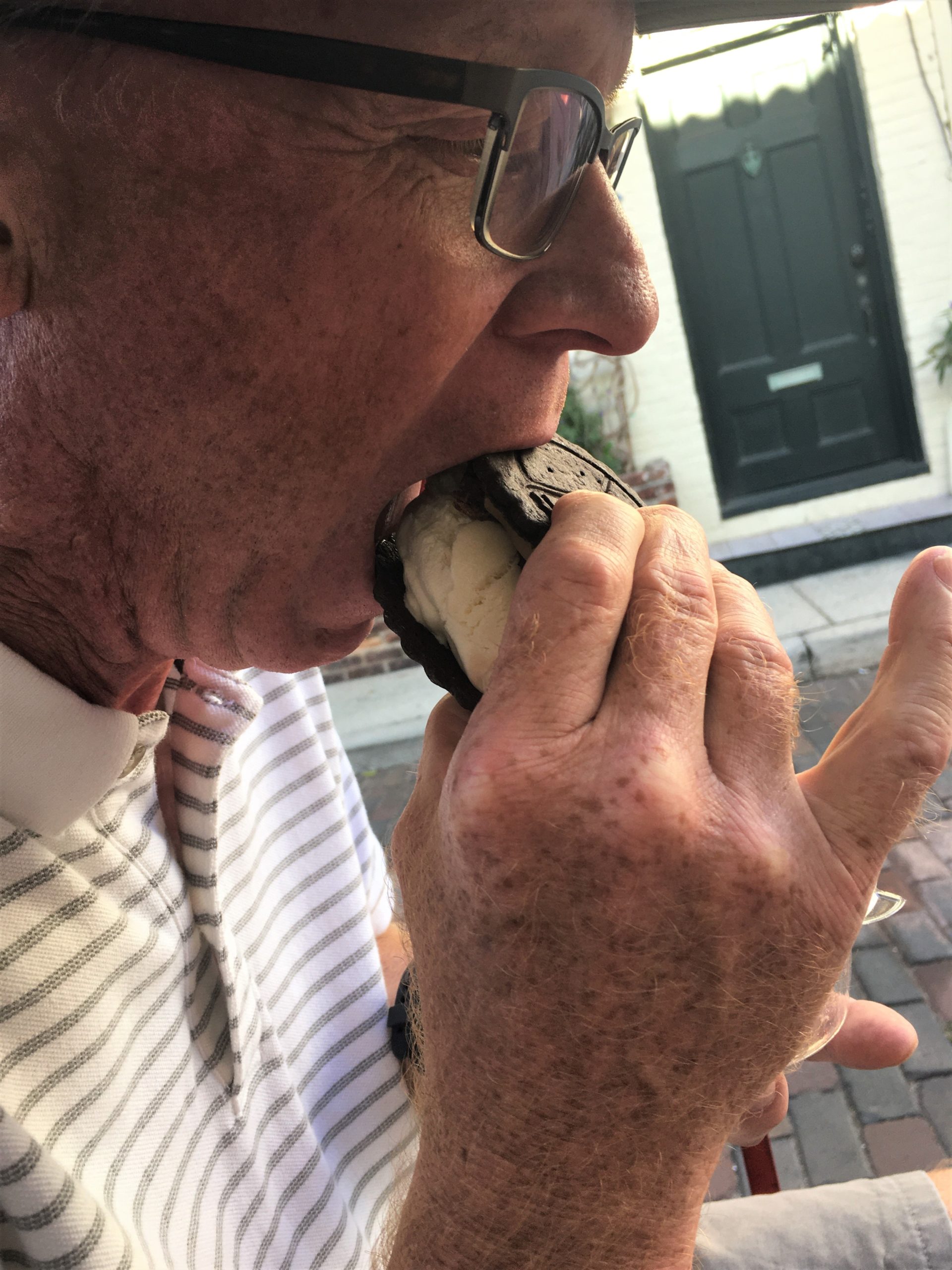

I couldn’t fit that into my mouth, so I kinda took a bottom bite, and then a top one. : )
Heading back to the Jeep, we passed the Constitution Monument our trolley driver mentioned.

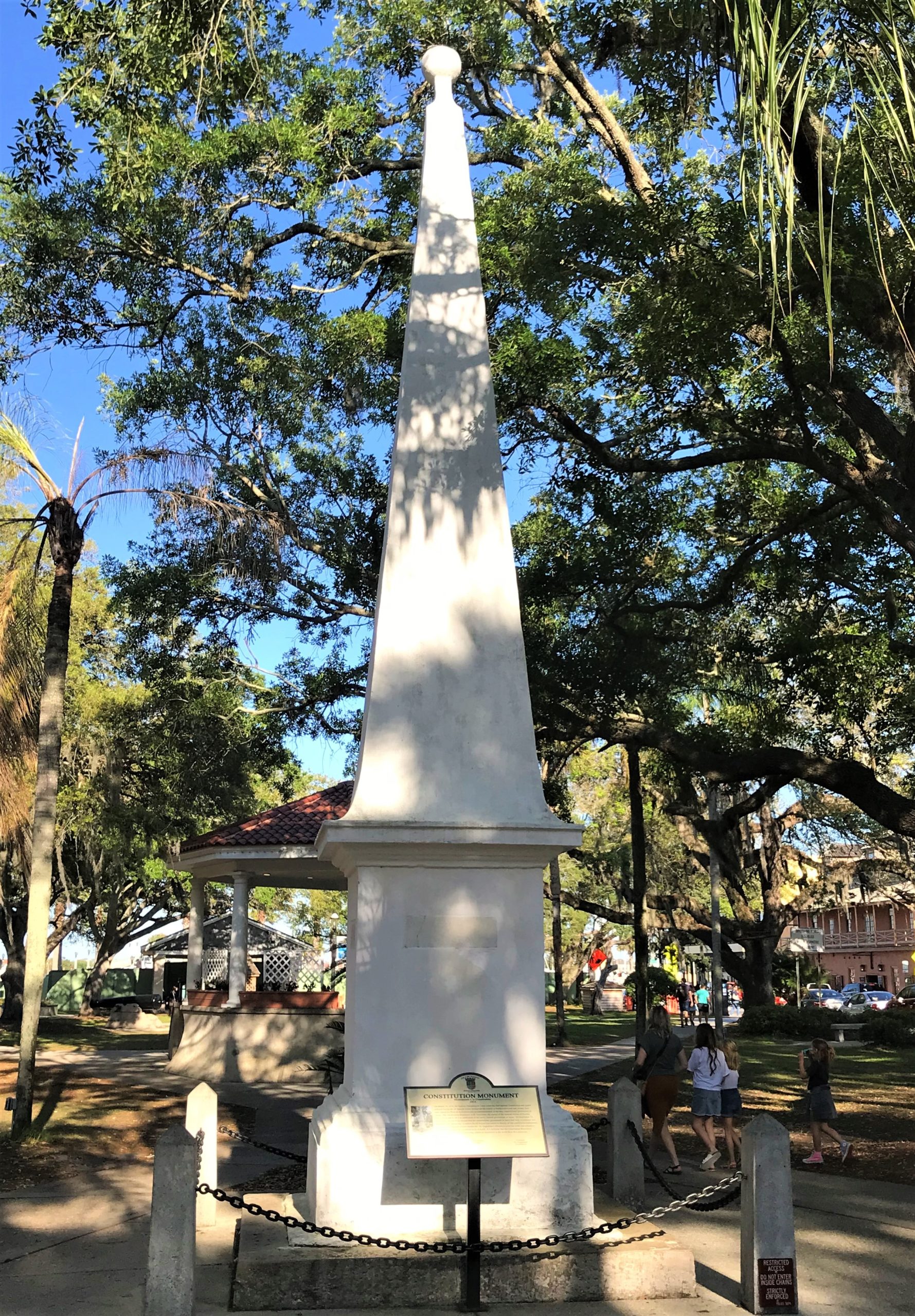
And as we walked into town, we heard saxophone music coming from the street. Upon investigation, we found him and stayed for a wonderful concert, that ended with us worshiping on the street as he played a medley of church tunes –“‘Amazing Grace”/”Great is Thy Faithfulness” and one more that we can’t seem to recall. What a blessing! About halfway through his concert a guy with a guitar came up to him and asked if he wasn’t hungry, that he could go get himself a bite to eat. A not-so-subtle way of asking him to give up his spot. He was making really good tips, and he wasn’t buying the sham. Talented AND smart!
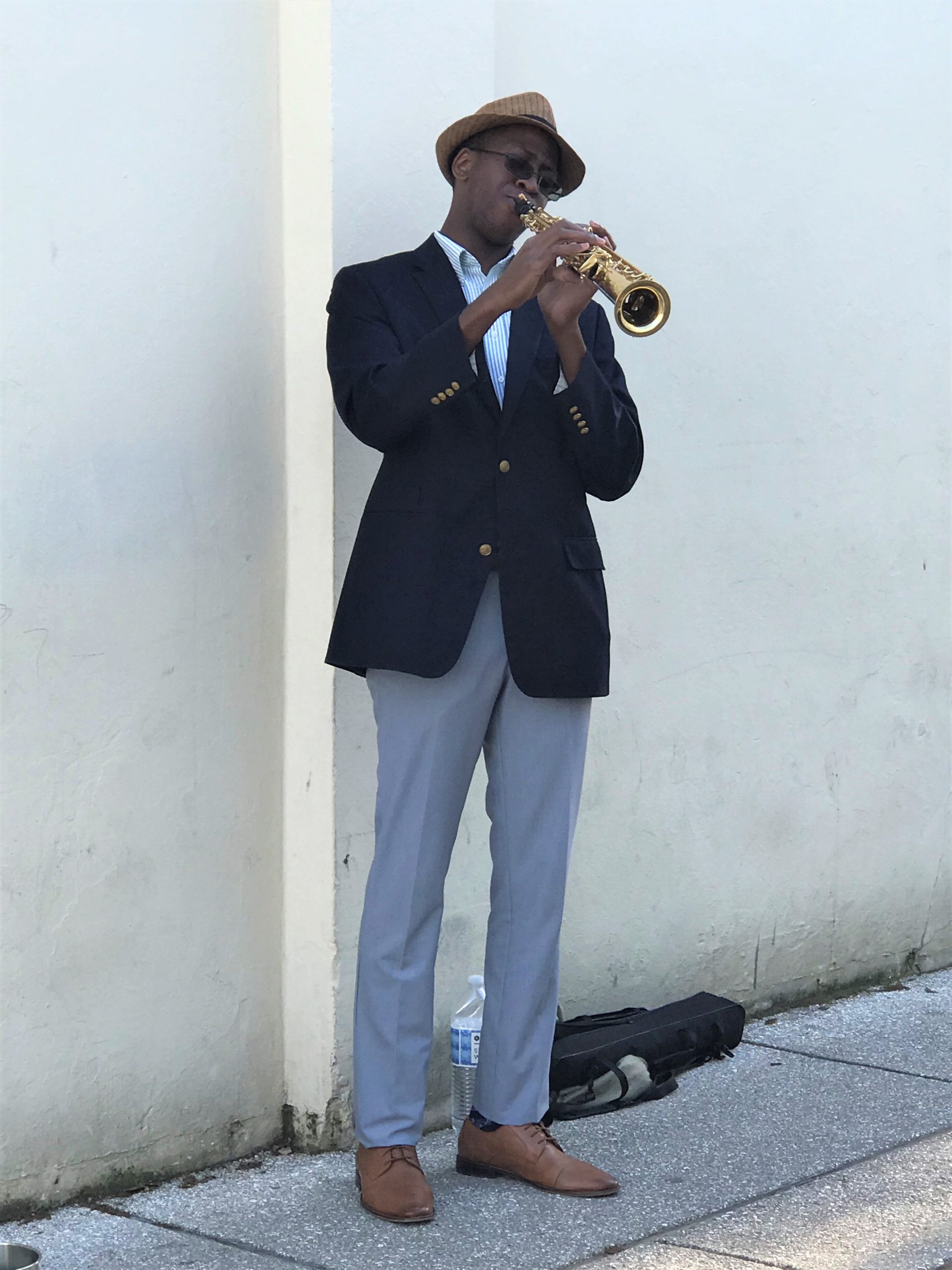
Right next to our parking lot was the Ripley’s Believe It or Not Museum and there was an information sign in front of a huge 15-16’ hedge, so we stopped to see what it said. You won’t believe what we found hiding in there! Another replica (one of only two and we saw the first one already!) of Michelangelo’s David! What a huge surprise that was! I had pointed out the large head peeking over the hedge at us in the parking lot this morning when we left, but I didn’t recognize the eyes and top of the head as being the David statue. There was some interesting information to read about on the base. What we can’t understand is, why is it hidden in here?!?
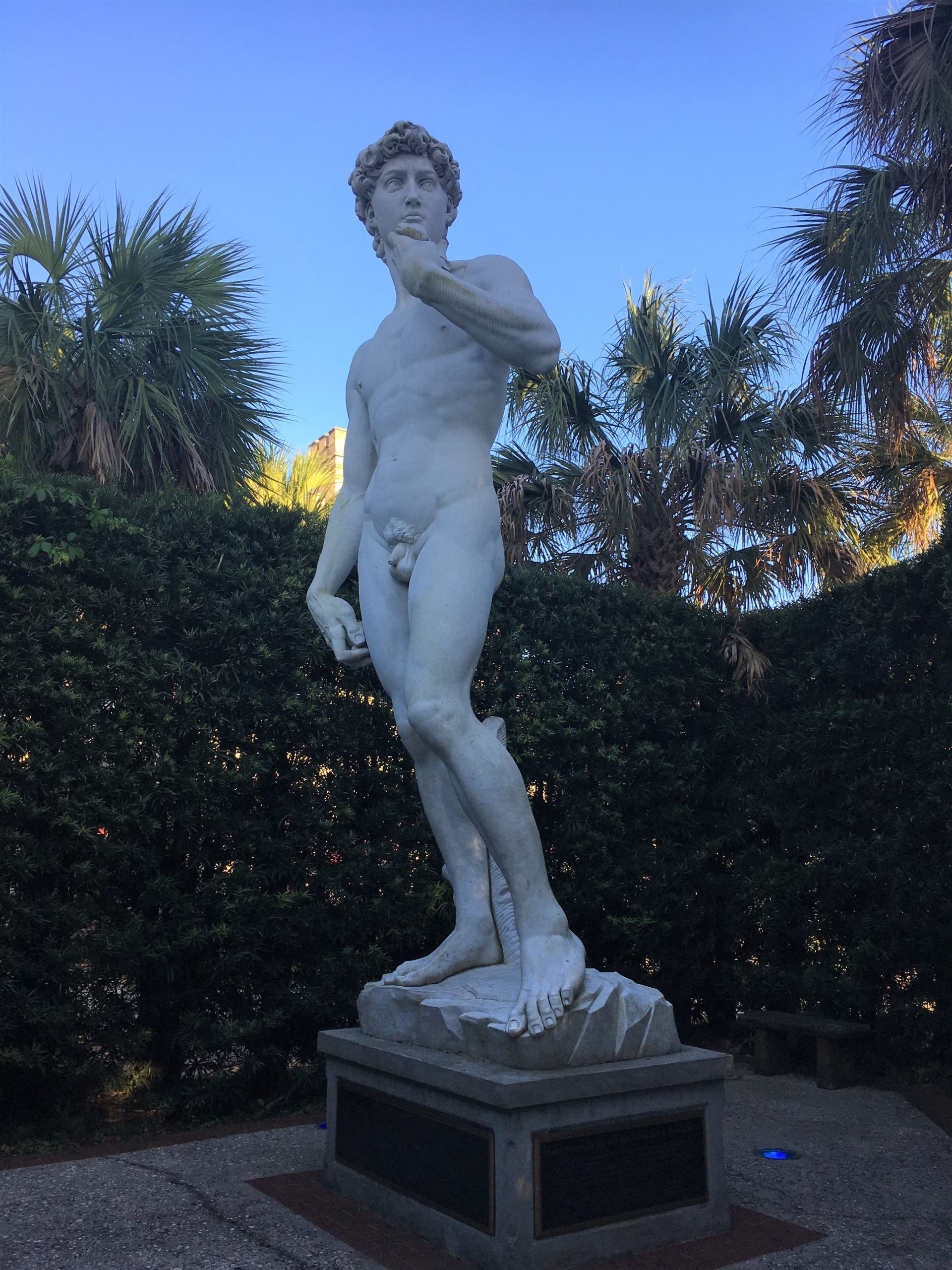
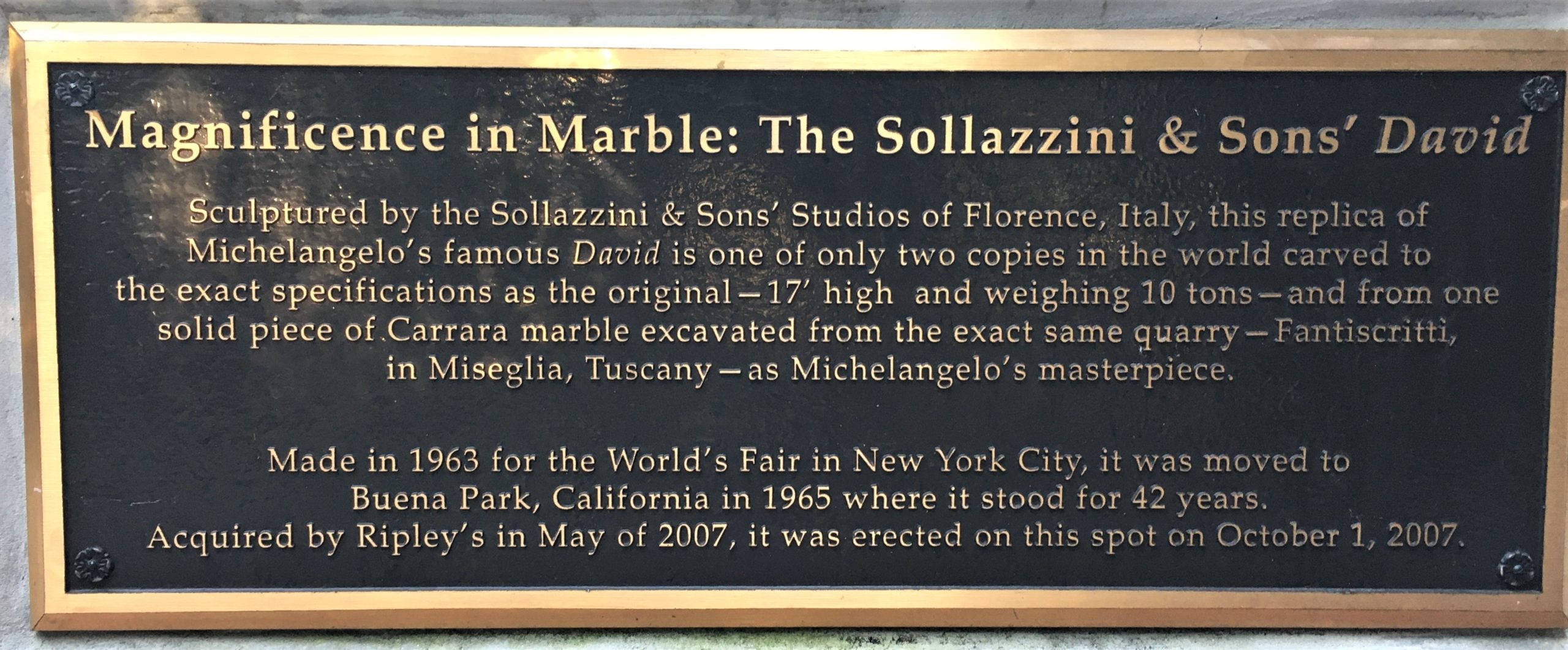
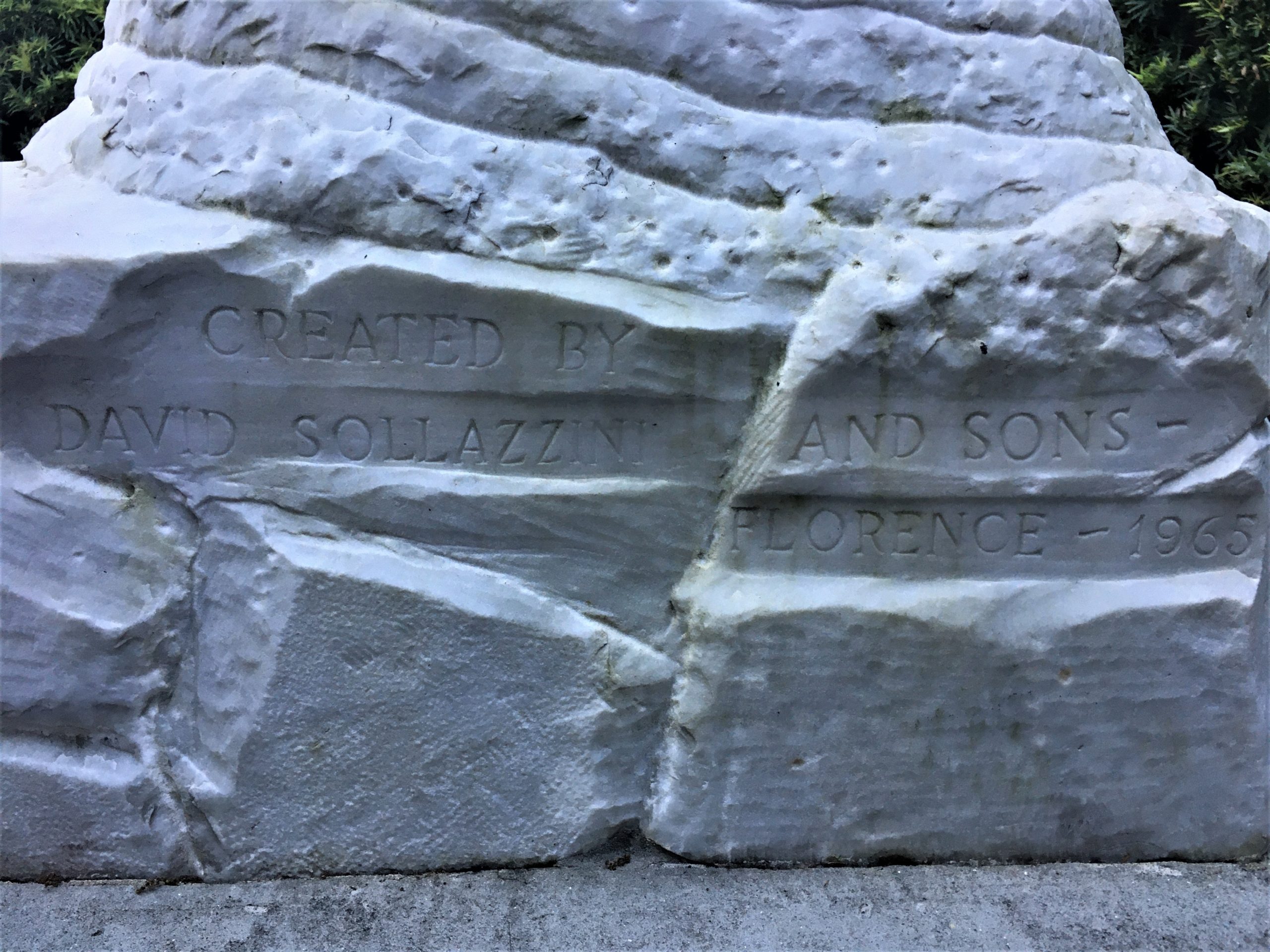

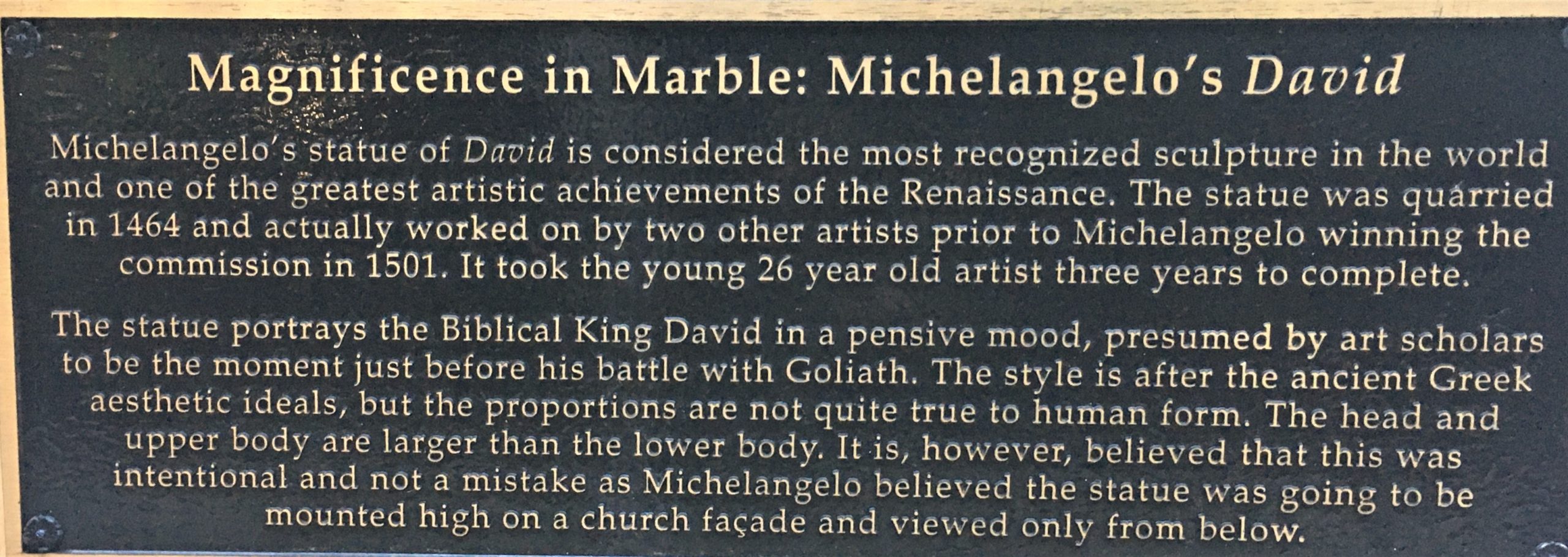
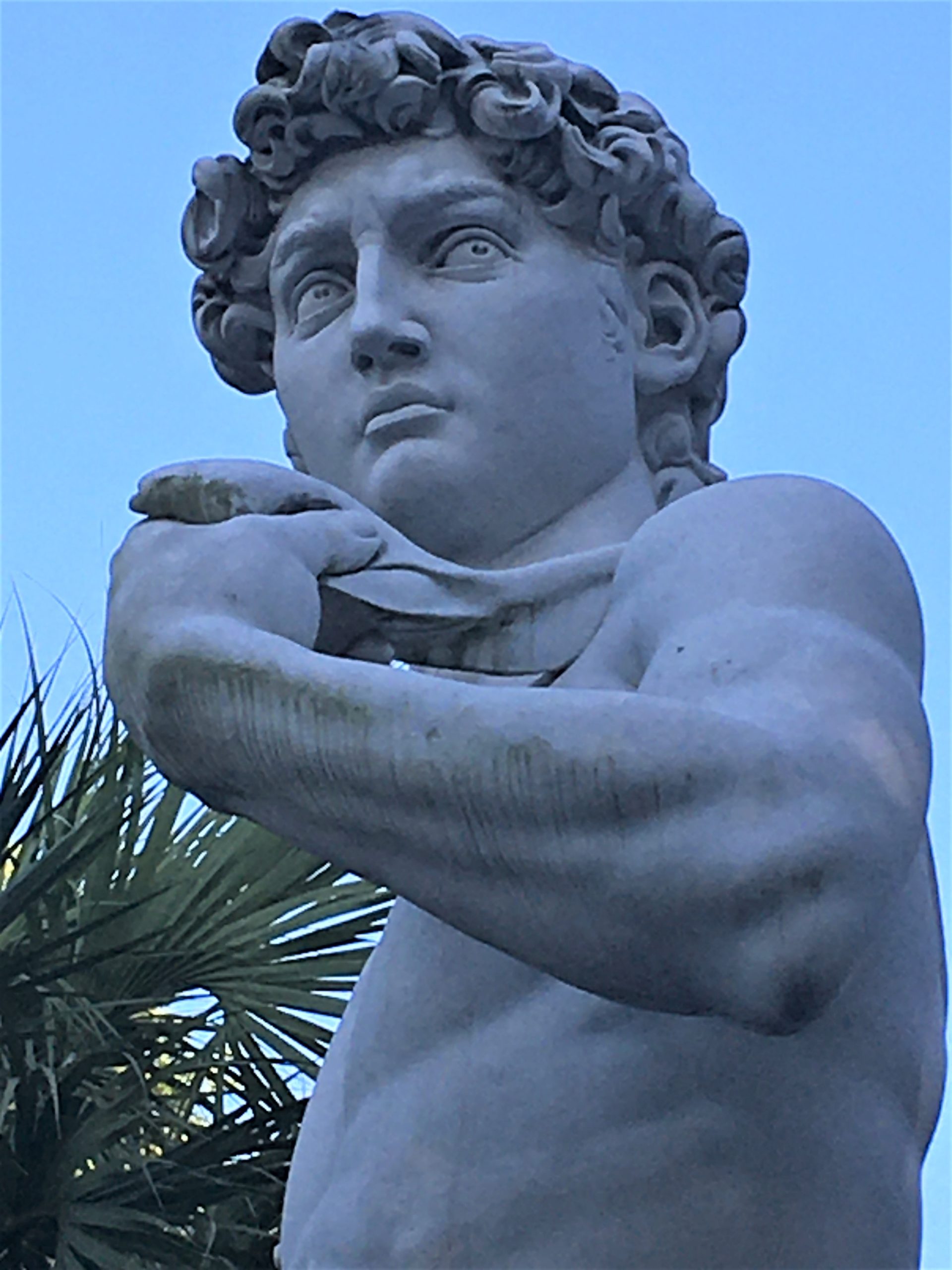

And that concludes this year’s tour of St. Augustine. I hope you were at least a bit entertained and learned something new!
